Bossy

Chimera
The ANU Women’s Department Magazine Edition 8 November 2022
Bossy would not exist without the ongoing support of the ANU Women’s Department. We thank them for their boundless generosity, and for their commitment to the safety and wellbeing of the members of our community.
Edition Eight was partially funded by the SCRIPT grant.

We acknowledge the Ngunnawal and Ngambri peoples, who are the Traditional Custodians of the land on which Bossy is sourced, edited, printed, and distributed.
We pay our respects to Elders; past, present, and emerging. We also acknowledge that this land—which we benefit from occupying—was stolen, and that sovereignty was never ceded.
Within this ongoing echo of colonialism, we commit, going forward, to do better in amplifying the voices of Aboriginal and Torres Strait Islander people within our community.
We also commit to ensuring that the incoming team for 2023 honours the diversity of Aboriginal and Torres Strait Islander stories, and stands by their right to recognition.
1
Letter From the Editors
Dear Readers,
The Chimera was a fire-breathing creature with the head and body of a lion, a goat’s head on her back, and a serpent for a tail. She is often depicted as a near-invincible monster who devastated the land around her home until she was slain by Bellerophon’s lead-tipped lance. Even among ancient writers, her story was mostly relegated to a couple of sentences—no one knew how to slay her, The Hero captures a flying horse… you get the idea. Rather than a source of intrigue for storytellers, the Chimera was mostly viewed as an object of visual inspiration because it was a hideous and spectacular deformity—an intolerable monster suspected to represent the fears of its audience; fears of a being that seemed to disobey normative roles, to intermingle identities. Even today, the Chimera reminds us that nothing about ourselves is set in stone.

Many of us can perhaps relate to this conception of Chimera as a malleable body to be scrutinised or gawked at— Homer’s “bane to man”, rather than a being deserving of basic kindness. Yet in her story, the Chimera cannot really be ignored. She is immense, grimacing, encircled by roaring flames; fully herself and emanating life despite her nearimpossible incongruity. Following on from edition seven, Memento Mori, we have decided to give new life to an ancient legend by inhabiting this so-called monstrosity; in doing so, we collectively aspire to give voice to our unseen or improbable experiences and feelings. We remember death: now, how do we go about coping with life—this fantastical, terrible existence? And how do we define ourselves, particularly when we have limited control over how we are experienced? This edition of Bossy invites you to celebrate your connection to the world and to stories—to reinvent your flaws as your strengths, and to reflect on this tumultuous life, its wonderment and horror.
Another, newer definition of the word ‘chimera’ is an imagined thing: something fanciful, improbable—impossible to achieve. This year, we have watched in horror as institutions prioritised the systemic perpetuation of bigotry and oppression over the welfare of its people. The world is bleak—it’s justifiable to feel nihilistic about the future, to think that our dreams are little more than a fantasy. Perhaps we must reimagine our goals as intersectional feminists if we are to enact the change we desire: as Avan—our own Women’s Officer—writes, being a demon bitch about feminism and injustice is to reject complacency. Perhaps it is not enough to accept chaos—perhaps we must radically redefine it, throwing normative frameworks of white, heterosexual, cisgender, patriarchal neo-colonialism into tumultuous question as we fight to be heard above the increasingly insidious tide of conservatism, both around the globe and closer to home. In light of the repeated transphobic incidents across our campus this year, we particularly reaffirm our solidarity with transgender and non-binary students: you will always have a voice with us.
We want to thank our contributors for dedicating their immense energy and creativity to the development of edition eight. In reading this edition, you are sure to be inspired by the pride and courage with which our community have bared their souls, attempted to understand the complexity of their inner workings, and invigorated lost and untold tales—their words are a source of endless intrigue and empowerment. Thank you to our wonderful team: the magic of this edition was born from your many hours of labour, care, and spirit. Thank you to Avan and the Women’s Department for their endless support throughout the year—and we give tremendous thanks to you, reader. There is no Bossy without you.
Within this magazine, you will find writers and artists who have recreated the reality of experience through fictional, or even “dishonest” expression—unusual forms of storytelling, creative memoirs, and poetry. The diversity of our contributors’ stories invites you to share in the chaos that exists in all of us, to admire our strength and versatility, and to allow your own fiery tongue to spark and storm upon prejudice and hate; to build genuine empathy and allyship in a world that does not very often encourage the strength inherent to collectives. It is painful and terrifying to be ourselves—but there is also power to be found in the embracing of monstrosity. So, bare your teeth, and let your own hybridity carve out the beginnings of a brighter future. Perhaps it may appear improbable— but nothing is ever really impossible.
With love, Hengjia
2
Liu, Alisha Nagle, Harriet Sherlock, and Cinnamone Winchester

3
Avan Daruwalla

2022 ANUSA Women's Officer
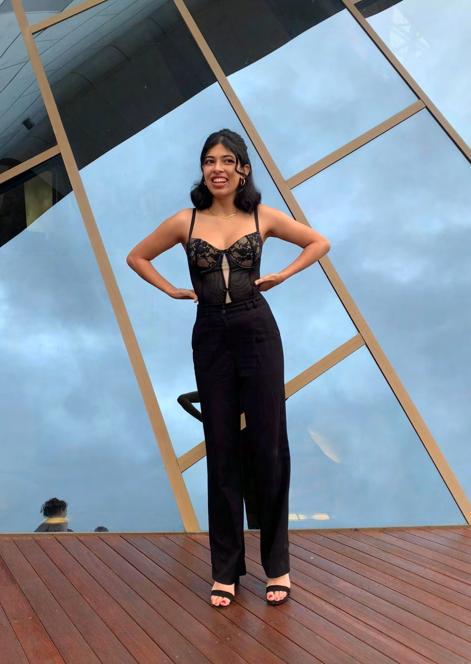
A huge congratulations to the Bossy team for another year of incredible content, thoughtful pieces, and magnificent design. The ANU Women’s Department is a space in which we can’t always focus our time and energy on thriving (because we are sometimes focused on simply surviving), so when a creative outlet like Bossy produces something so special—it is truly something to celebrate. With so many talented and clever women and gender diverse people contributing to a shared vision, it’s no surprise that our very own feminist publication has grown to become so successful and is so valued by the community.
This is my second year as Women’s Officer, and I continue to be beyond honoured to work alongside so many strident feminists and passionate young people. Having such an engaged and invigorated Department and Collective has made for an incredibly productive year; with the launching of our birth control subsidy, the Too Little Too Late protest, the Follow Through ANU campaign, the introduction of regular feminist consciousness raising circles, the success of ANU Women’s Revue, a tonne of social events, and now of course—the release of Bossy.
This past year, the Department has experienced a number of challenges in ensuring appropriate media engagements and portrayals of the significance of feminist activist efforts as well as holding media accountable to a standard of cultural awareness and sensitivity. As Women’s Officer, having to explain why students deserve better, or why lived experience matters, or even why gendered violence is a real problem has been eye-opening. Public attention and media representation of feminist issues has been proven time and time again to be imperative to seeing change. Without the threat of reputational damage for neglectful institutions and promotion of progressive radical feminist content, mainstream misogyny and disrespect will continue to dominate. This is just part of the reason I am so thankful for the existence of and team behind Bossy, and why we are so proud to support their work.
This role has been really rough, and I fear I am leaving it far less optimistic than when I entered it; however, it has also been the greatest learning experience and provided the most caring and supportive community one could ask for. Advocacy for the wellbeing and safety of oppressed students is a long-term fight that has produced slow and unresponsive change. But the resilience of survivors and advocates has produced real and meaningful outcomes. We as a collective have consistently come together to support one another and make change happen, a poignant reminder to the university and likeminded institutions that there is no excuse for deprioritising the protection of vulnerable community members.
We will always stand for intersectionality, respect, compassion, and a culture that rejects bigotry and embraces equity. I hope that those of you reading Bossy’s eighth edition feel inspired and emboldened to continue to radicalise your feminism, and—if you have the energy and feel compelled—to get more involved with the Department in whatever capacity feels right. We are always here for you.
In solidarity and love.
4
Sebastiàn Ungco Cover Artist

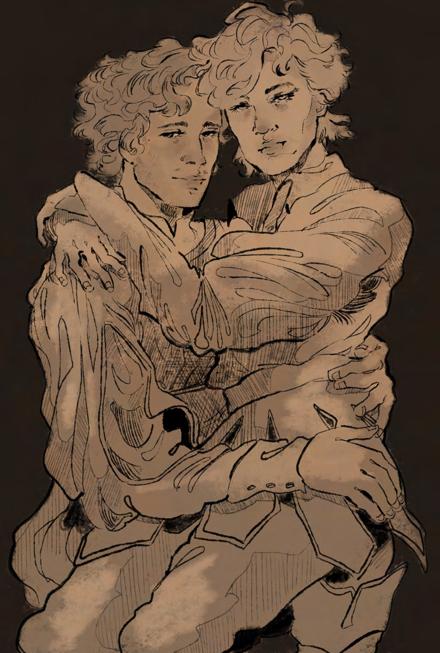

Sebastiàn Ungco is a student and multimedia artist primarily based in Metro Manila, Philippines. Heavily influenced by their deep love for modern cartoons and contemporary art movements, Sebastiàn’s works typically involve stylised color studies of tragedies and other epic celebrations of humanity which showcase their attraction to the delicate craft of story-re telling, with an emphasis on taking the ‘then’ and molding it into ‘now’.

This issue’s cover of Bossy features a South, Western, and South East Asian reimagination of a monstrous hybrid creature of Grecian myth called the Chimera. Inspired by the visual development art used to conceptualise fictional settings in films and video games, the cover hybridises the traditional imagery of surrealist and postmodern art movements to assemble an uncanny, collage-like landscape which encompasses the edition’s illustration of the absurd and hallucinatory. Equally influential throughout the design process was Sebastiàn’s love of adaptation— particularly The Legend of Zelda’s high fantasy storylines involving its world’s cyclical histories depicted in much the same manner as certain Hindu oral histories, and The Chronicles of Narnia’s vivid depictions of mythological hybrids.
Beholding the graceful Chimera as it soars through chalk pastel clouds and paper-cut moons, the themes of this year’s issue are epitomised by a vibrant sunset which paints dragon’s blood forests with dreamy hues of pinks and oranges. The transitory nature of the Chimera’s home functions as a visual epigraph, inviting readers to indulge in the transformative potentials facilitated by the contents of the magazine.
5
Peace and Victory Sebastiàn Ungco, 2022
I Had it Sorted Sebastiàn Ungco, 2022
Chronograph of 354 Sebastiàn Ungco, 2022
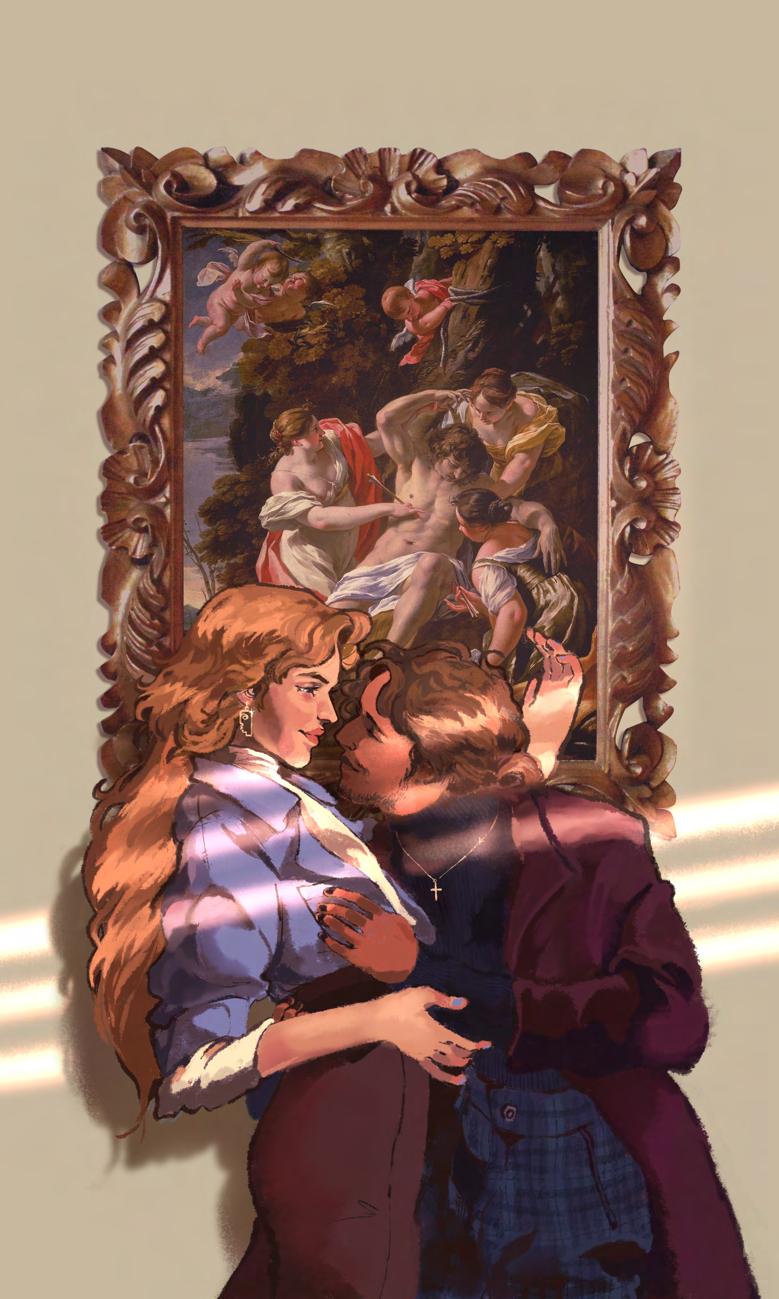
6
Acknowledgement of Country
Letter From the Editors 4 Letter From the Women's Officer Avan Daruwalla 5 Cover Artist Feature: Sebastiàn Ungco 10 Monsters Who Kill Men Kate Wood 13 Triformem Bestiam Alisha Nagle 17 Cornucopia: An Interview with Tisha Tejaya Lily Harrison 22 Pliny the Elder Attempts to Describe the Poet for His Natural Histories Bastian deBont 23 Self-Portraits Jamie Cardillo 26 Behind the Blog: An Interview with Samia Ejaz Christie Winn 28 A Reading Renaissance? Reviewing the Influence of BookTok Harriet Sherlock
30 Power, Self, and a Voice for the Voiceless: A Review of Madeline Miller's 'Galatea' Taia Apelt 32 The Brothel of Avignon Hengjia Liu 33 Sit Down, Stay a While. Pip Coddington 34 Vulgar Emma Crocker and Elspeth Rowell 36 The Dictionary of Lost Words Lily Harrison 37 The Dolmen Georgia Winzenberg 40 Watercolour Anonymous 42 Sarah Jamie Cardillo 43 Disintegration. Holly Ma 44 A Recurring Dream Alisha Nagle 45 MEDEA, the Body India Kazakoff
47 Identity Idiosyncrasies Faith Freshwater 48 Agitations Josephine Carter 49 Mystique and Quiet Illusions Olivia Gill 51 Cyclopes Have Feelings Too Alexandra Enache 52 Invasion Imogen McDonald 54 Study Partners for Sale Anna-Marieke Lechner-Scott 56 BeReal Lily Harrison 58 Held Adeline Higgins 60 One Time My Doctor... Luka Mijnarends and Mackenzie Francis-Brown 62 Growing Up Biracial Zoe Grahl and Erika Chaki 65 Reflections of a Would-Be Runaway Lucy Waterson 67 Only by Enduring Myka Davis
7 Contents
1
2
72 The Death of Koschei the Deathless Cinnamone Winchester and Sebastiàn Ungco 78 An American W-Wolf in London Zara Hashmi 79 The Good Girl Gone Bad: The Victorian "Madwoman" in the 21st Century Charlotte Stump 81 Perfume Imogen McDonald 83 Sub Rosa Lucy Sorenson 84 ‘I'm Glad My Mom Died’: Jennette McCurdy and Liberation Isabella Keith 86 Abortion Inaccessibility in a Post-Roe Australia Eliza Wilson 88 Mandy Sebastiàn Ungco 89 True Love Aveline Yang
90 Why We Need to Forget About Confidence Culture Eugenie Maynard 92 Prime Time Sydney Lang 94 Ode to Susan Cinnamone Winchester 96 Trapped C. E. Winn 97 Burn Her Mahalia Crawshaw 98 Clean Daisy Taylor-Reid 103 Bad Feminist Maddie Chia 106
No More Spiritual Bypassing: It's Time to Be a Demon Bitch About White Feminism Avan Daruwalla 108 Monstrosity: A Series of Haikus Anonymous 108 The Grotesque & Beautiful Gabriela Renee 110 Letters to My Inner Monstrosity Eugenie Maynard
111 What I See When I Close My Eyes Olivia Kidston 112 The Redgum Ghost Jacqui Thompson 113 Arbiter Elegantarium Josephine Carter 114 Tribute to the Womb Madelie Joubert 116
On Friendship: A Best Friend Interview Lily Harrison and Juliette Straughair 119 Henry VIII and the Histo-Remix Maddie Chia 121 Reclaiming Vanity Elentari Berryman 123
Self-Exhibition: A Photo Series Zoe Grahl, Zac McCarty, and Lucy Sorensen 126 Constructing an Ideal Self with a Virtual Body Sebastiàn Ungco
8
Section Designers:
Suhani Kapadia Hengjia Liu Alisha Nagle Harriet Sherlock Sebastiàn Ungco Cinnamone Winchester Christie Winn
k h i m a i r a
1. A fire-breathing shemonster in Greek mythology having a lion’s head, goat’s body, and a serpent’s tail.
2. An illusion or fabrication of the mind, especially an unrealisable dream.

—
“Women have always been monsters.”
Sady Doyle
Monsters Who Kill Men
 Kate Wood
Kate Wood
10
CW: Discussion of sexual assault and abuse, trauma, death, violence, and murder.
Fairy tales are the stories we tell children to impart wisdom and to teach the “good behaviour” society expects. Little Red Riding Hood got eaten because she talked to a stranger. Cinderella gets her prince because she is good, obedient, and beautiful. Her stepsisters are ugly, cruel, and lazy, and they end up getting their eyes plucked out by crows. Myths and legends are the fairy tales of society—they instruct children and adults alike about cultural norms and expectations.
The monsters of myth, folklore, and oral histories can therefore tell us a lot about the values of the society that created them. Jess Zimmerman, author of Women and Other Monsters: Building a New Mythology, describes feminised monsters as “the bedtime stories patriarchy tells itself.” The stories of feminised monsters and their journeys into monstrosity are perhaps indicators of how women are viewed culturally, their place in society, and “right” and “wrong” behaviour.
Monsters depicted as women feature in myths all over the world, and their origin stories paint a treacherous path to walk. Almost anything can turn a woman into an abomination. There are women transformed into hideous creatures as punishment for their sexuality or promiscuity; some are even punished because men have sexualised them without their consent. There are women who murder or lose their children, failing in the most fundamental role their society expects of them—the nurturing mother. There are monsters born of tragic women—women who died for love, in childbirth, or were murdered; there are monsters who carry the punishment of their husbands’ crimes. And what moral lessons we are to learn from such myths are not quite so clear as they once seemed.
We take folklore at its word when it tells us not to trust a monster—but are they really all that bad? Consider the Banshee. These Irish girls get a bad rap, but all they want to do is tell you someone in your family is going to die, and isn’t that ultimately helpful? Sometimes they are the spirit of a beautiful young woman who is sticking around to be the harbinger of death for her family, and other times they are horrifying old
women; but either way, they aren’t evil at all. They’re just sad ladies having a big old scream and I, for one, can relate to that.
My personal affinity with monsters began with Medusa. In older versions of the myth, Medusa and her two sisters were sea goddesses, born terrible and frightening with their snake hair and petrifying gaze. However, the Roman poet Ovid claimed a different origin story. In Ovid’s Metamorphoses, Medusa was a priestess who was famous for her incredible beauty, especially her hair. Neptune, the God of the Sea, raped her in Minerva’s temple. Afterwards, Minerva punished Medusa for being raped by turning her beautiful hair into snakes and making her gaze turn men into stone. She also wore snakes on her body—“creatures of her rage”.
But what if Minerva wasn’t “punishing” Medusa at all?
Growing up as an asexual teenager, I didn’t know what I was. I didn’t know there was a word for me. I just knew that I was different, and that something was wrong with me. The people around me knew I was different, too. Like at least 17 per cent of asexual people, I was a victim of corrective sexual assault. Between 16 and 18, my consent was violated repeatedly and often by men who genuinely believed it would fix something broken inside of me.
What I wouldn’t have given to have had snakes for hair! For Minerva to have given me a visage so hideous it turned men to stone would have been no punishment. To me, that would have been a blessing. As both a young asexual girl horrified by the concept of sex and a repeated victim of assault and abuse, Medusa’s punishment seemed to me anything but.


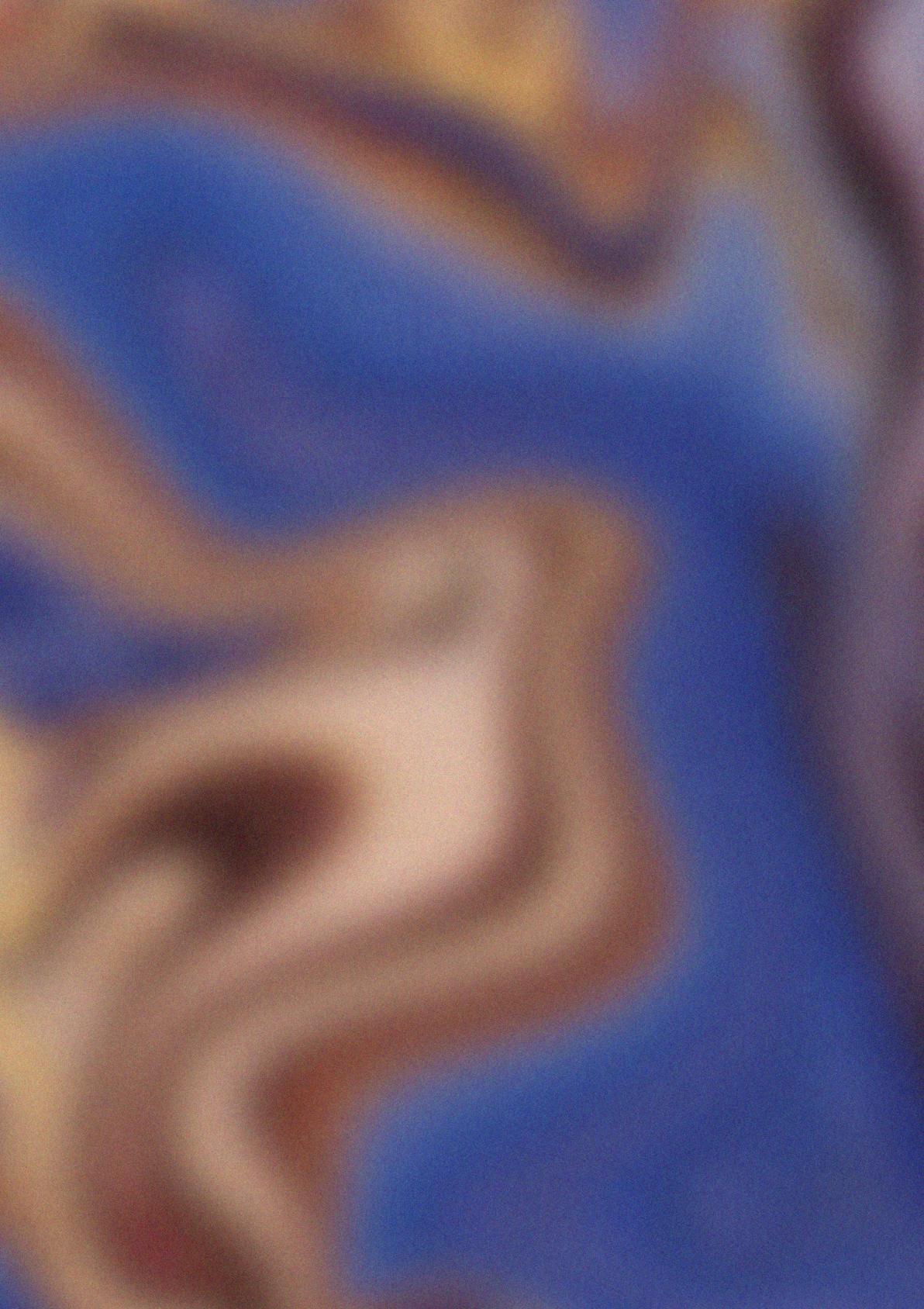
I didn’t tell anyone about the sexual abuse until I was 33. In the intervening years, I did not experience anger. I was frightened of others’ anger, and didn’t express it myself, because I didn’t understand it. I was not aware how much of it there was inside me, desperate to break out. My snake hairs were ingrown. It was painful, irritating, something I knew needed to come out—but I didn’t quite know how. Now I allow my snake hair to grow long. A friend once described me as “anger masquerading as a person”. I love my snakes, and I very much hope that a certain type of man fears me so much that he uses a mirror
to look around corners.
The famous Margaret Atwood quote, “Men are afraid that women will laugh at them. Women are afraid that men will kill them”, aptly describes our gendered power imbalance both historically and today. It is interesting, in light of this reality, to examine the countless examples of beautiful feminised monsters who kill men in folklore. A shapeshifting spirit called La Siguanaba is said to haunt the waterways of many countries in Central America, with regional variations. General consensus is that they materialise in a body of water and appear from behind as a beautiful woman with long hair, washing herself or her clothing. Men follow her, and when they are lured far enough from civilisation, they discover she is a creature of evil with the face of a horse or human skull. In parts of Mexico, La Siguanaba is not a woman at all, but a horse-faced man who appears to be a woman. The type of man they target varies—in some legends, they seek out unfaithful men, and in others, men who are in love, drunk, or womanisers. In some places, they also kill children.
La Llorona of Hispano-American folklore is also associated with water, and wears a soaking wet dress. She drowned her children because her husband was having an affair, or because their father was going to take them away to be raised by his wife, or because of some temporary madness. Whatever the reason, consumed with regret, La Llorona drowned herself, too. She became a malevolent phantom, seeking out children, men, or both as her victims. In Arnhem Land, there are oral histories told of the shapeshifting Yawk Yawks, from the Kuninjku/Kunwok language meaning “young woman” and “young woman spirit being”. These watery women lurk in creeks and rivers, or lie in the sun on the riverbank. They are described as having the tails of fish and flowing seaweed for hair— maybe something like a mermaid, but with malicious intent, as they will drag innocent victims down into the water, especially children.
Why so many legends and oral histories about deceptive and treacherous monsters who have no other goal but to haunt a waterway with the intention of luring men or children to their deaths? What deep-seated fear lies behind this? And what about the evidently connected fear of ugly and monstrous people who
disguise themselves as beautiful to ensnare a man and catch him in their net? That this fear of being tricked by a person’s false beauty appears in tandem with such murderous, man-hating monsters is fascinating and ever relevant. We see it exhibited all the time by men who post memes about taking a woman swimming on the first date; men’s rights activists assert that wearing makeup is “lying”. There are “jokes” and dialogue in pop culture obsessed with whether a woman’s breasts are “real”. And of course, there is rampant transphobia: the idea that a trans woman is trying to “trick” men when all she’s trying to do is mind her own business and live her life. These monsters pretend to be beautiful and kill men in one terrible act, lumping the two things together as equally dangerous. Equally criminal.
In light of such monsters and the idea that we must fear and revile them, perhaps it is time to reconsider. Medusa is a source of comfort and inspiration for me. Seeing her not as a monster, not as a victim, but as the survivor and the hero gives her a new face— one that is hideous on purpose, and strong. We must learn to celebrate monsters, be inspired by their stories, and approach them with empathy. What old-fashioned, misogynistic taboos are they representing, and what alternative lessons can we learn? Accepting and embracing difference? Breaking out of traditional gender roles and concepts of gender? Dragging unfaithful men into rivers? We should take pride in our supposed monstrosity.
The following are five more examples of awesome af “monsters” lurking in folklore, myth, and oral histories from around the world who personally resonate with me. There are more, across every culture in the world, one to represent every facet of a person. No matter what you might reclaim as “monstrous” about yourself, there’s an absolutely hideous creature out there who will speak to you. Happy devouring of souls!
Dulklorrkelorrkeng — Arnhem Land Spirits
I was already all about the Dulklorrkelorrkeng and their genderfluid, snake-based lifestyle, and then I read that some say they keep gigantic quolls as pets. No shade to my beloved dog, but he’s no giant quoll! The Dulklorrkelorrkeng have whip
snakes attached to their thumbs, which is badass af, and they also eat poisonous snakes without being poisoned— probably because they are already evil spirits, and you can’t poison evil. Figures like the Dulklorrkelorrkeng hold an important place in Indigenous oral traditions across Australia, imparting valuable knowledge about hazards in the environment. Dulklorrkelorrkengs are invisible, and can only be seen by men who have the gift; however, you can hear them by knocking on the trees that they live in. The Dulklorrkelorrkeng can appear with the characteristics of men or women, whichever it feels like, and the face of a flying fox—which actually sounds more adorable than scary, but they’ve got freakin’ whip snake thumbs, so don’t tell them I said that.
Echidna Ἔχιδνα
— Greek Mythology
Echidna was the MOTHER of all Greek monsters (literally—lots of monsters were her children). She was half beautiful lady, half serpent. Her bottom half might have been a serpent’s tail, or it might have been the front end of a serpent— is there a “vaginas have teeth” message there, and what does it mean? Frankly, I love it. She apparently used it to devour passers-by whole, after she dragged them down into her cave “beneath the secret parts of the holy earth … deep down under a hollow rock far from the deathless gods and mortal men.” That’s a real estate opportunity I am all about. Does Booktopia ship there? I bet even Zeus left this gal alone. Also, did I mention she may have been GIANT?
Penanggal — Malay Folkloric Ghost
I love her. I love that she flies around as a head with her guts hanging out, making everyone they drip on get sick. That is a statement, and as a woman with an excruciating chronic pain condition, I can 9000 per cent get behind just jettisoning everything below my arms. As an ordinary woman in the community, the Penanggal normally has a whole body— but when marauding the countryside in her vampiric form, this absolute Queen only keeps the essentials. Penanggalan are not exactly vampires, but use meditation (and the magic of vinegar) to detach from their bodies and turn into their blood-drinking forms. Variations of the Penanggal exist across South East Asia. For example, in the Philippines there is the Manananggal, who sprouts bat-like wings and in some regions is accompanied by the grisly Tiktik bird,
which makes a sound like “tik-tik-tiktik”—the fainter the call, the closer the Manananggal, which is said to confuse its victims. If it seems like I’m trying to skip over the Penanggal’s diet, it’s because I am. She targets new mothers, drinking the blood from childbirth, and cursing the mother and baby, which is decidedly uncool of her.
Rokurokubi ろくろ首 — Japanese Legend
These Japanese lasses are sometimes depicted as demons, sometimes monsters, and sometimes ghosts. Very often, they’ve not done anything to deserve this shit. They either have a floaty head that leaves their body when they sleep and roams around the countryside going about its business (not even necessarily that evil, sometimes they just be floating), or they have a big long stretchy neck and the head goes on journeys that way. Sometimes, Rokurokubi are aware of what they are, and will deliberately do evil, or mete out punishments to those who deserve them. In other cases, a woman may not even be aware of her condition, and her head goes off flying around while she is sleeping, though she may have strange dreams.
Baba Yaga Ба́ба-Яга́ — Slavic Folklore
This Slavic witch or ogress is a little more ambiguous than the other monstrous ladies on the list. Sometimes she is benevolent; sometimes she offers you wisdom and gifts. Sometimes she eats you. I relate to that kind of unpredictability. We all have our bad days when we just want to eat a Russian prince who comes to our house asking questions. And what a house! Baba Yaga—who is either one old witch or three old witches who are sisters and all have the same name—lives in a cottage on chicken legs. It can get up and move, which is just great for those introverted days when you don’t want to be bothered by the likes of Lithuanian folk heroes looking for advice. And if they do find you, you still have the option of eating them. Why is this maternal figure both benevolent and also an ugly old monster who eats people? What did the society that created this monster think about mothers and their place in the world? Also, where can I obtain my own chicken leg house to avoid Canberra’s rental market?
12
Triformem Bestiam Alisha Nagle
Now on the mountain of the realm known as Khimaira there appeared great jets of light that erupted and spat from the depths of Tartarus, so that the Lycians were afraid and called it the work of a terrible monster. And while innumerable strange and wonderful creatures dwelled in the highlands of Yanartaş, none were so kind-hearted and so pure as the one whom man gave this name of evil.

They went unseen for many ages, appearing as a mass of grey stone embedded into the earth. Complex was their physiognomy, that they had spent years dreaming, for this way the mind could clear and think as one. Deep through dreams and space they remembered Inanna once called them daughter. Inanna had stroked their fur and told them how special they were, though she looked at them in pity. She knew their soul was unfit for the field of battle, that their heavy paws would stop short of bloodlust and cause peril for her militia. Despite the extent of their malice being a tendency to clamp the wings of butterflies in their three jaws, the continued terror of mortals withered Inanna’s gardens where they played; thus, Inanna sent them to the mountainside to dwell in forlorn peace. Yet this creature called Khimaira was of immortal blood—they lived and lived until settlements had swelled not far from the mountain, and that is when this story begins.
At first people thought the apparition
was some wonderful and momentous anomaly of Nature as they spotted them slumbering atop their preferred rock in the summer: a snake coiled across a great goat’s back, lifeless, still. Yet then, seeing the head of the immense front, the muscles ripple in the legs and jaws when they yawned as one abominable trinity—how they were frightened! They saw the tongues of each face emanating vapour, watched them plunge their maned front into the abyss of a blazing pocket in the earth as a babe bathes in warm minerals, and they spread the word that this beast— this invincible Khimaira that burst into flames and felt nothing—must be to blame for the fires on the mountaintop. Few would presume the Khimaira meant no harm save the beasts, who knew the jets were only the deathless ones, the athánatoi, journeying across the cosmos. Mighty Khimaira had no intention of hurting anybody, for they preferred to devour dreams and sunlight—not mortals. And for a short while the people lived undisturbed by this improbable being who roamed the fiery mountaintop.
They were afraid—but mortals are curious. They learnt to brew tea using the heat of the smallest flaming vents beside the waters at the foot of the mountain. The settlements continued to grow. Soon enough, people visited the fires of Yanartaş every day, even the children; they screamed and chattered on their capers around the flames. Their sounds frightened Khimaira—in the evenings, when the smoke and haze of dusk distorted Khimaira’s vision, the young ones seemed like demons, their limbs dancing back and forth as if caught in the breeze.
Khimaira tried to take shelter in the ruined tombs sculpted into the mountain, but they could not dream— incessant voices from below travelled to their ears. And the more Khimaira roamed awake, the more they felt their body grow heavy, and their tongues would sear in the heat of the mountain. It was not all sadness. On winter evenings, when the children fled from the early shadows and the cold, Khimaira would venture down to the riverside, and drink to soothe their burning throats. Man had carved out pastures across the river, and when the hoofed beasts who dwelled there bleated, the Khimaira understood. The goats would inform them of the best grasses in the fields. Khimaira used their tail to pick choice blades and coiled upward to reach their mouth, bleating gratefully in turn—the hoofed ones seemed very glad to soothe Khimaira’s hunger, as they watched on with watery, nervous eyes. But when Khimaira whispered back gratitude with their forked tongue by mistake, the goats began to fear the abomination they saw, with its writhing, poisonous tail.
Khimaira continued to visit the pastures and tried to prove themselves a friend. This caused so much upset with the livestock that some broke loose and bludgeoned themselves against the fence in their desperation to flee, and when at dawn the farmers found their losses, they raged and wielded sharpened beams towards the sky. Khimaira did not understand; but none could deny the hatred and terror in these faces, in their sounds. So, the wretched creature retreated to the fires on the rocks above, and felt their throat
Ibi est mons Chimaera, qui noctibus aestibus ignem exhalat — Etymologiae 14,3,46
burn more fiercely than ever.
Here on the mountain dwelled snakes who basked in the sunlight, with faces solemn like stone. They were not friendly folk, unwilling to approach the great body so as not to be trampled beneath its cloven toes. The larger snakes would even bite Khimaira’s tail as if it were nothing more than a worm to a goshawk.
Khimaira lumbered further, until the grey stone was very bare and there were only the little fires rustling in the crevices for company. At least here there was less noise. But this was a lonely life. They had not dreamed for a very long time. No longer did they even remember who they were, no longer could they think as one. Every decision they made relied on the three—three choices, three urges, to which they felt compelled at once, and often now each was in dissent. Sometimes this was too much, so that they whimpered in agony. They were too much for the land to bear, and it seemed the earth itself cried out in retaliation whenever they awoke. Oh, the torturous, garish light that lay upon their mind as they tried so desperately to extricate themselves from the chaos! One day the largest of their throats let out a great and terrible yawl of a song that vibrated across the grey stone. The air around them distorted; flames sprouted from within. People at the base of the mountain were nearly burnt by the stream of molten heat lolling down the stone. When they saw there was indeed fire bursting from the maw of the mountain beast, they were eaten by fear, and cried to King Iobates for help.
The mighty winged horse Pegasos heard the cries of the Khimaira long before they reached Iobates, and as he was born of snake, having sprung from the neck of Medousa, he knew them to be sad and lonesome. He glided down from Mount Helicon and summoned cascades of water from the heavens. When it rained, the mountain flames lived on, though they would snort and spatter when touched by the soft crystals spinning down from above. They trickled down into Khimaira’s fur and sunk into their flared nostrils with a hiss. The rain was good—it soothed Khimaira’s boiling throat.
When Pegasos swooped across the valley, the people cheered. They loved
him, for his hoofs called divine waters from the aether, and his whinny could change the form of beasts at will, since he possessed the hearts of the Moirai— the goddesses who predestined the fates of all the souls on the earth. But Pegasos did not greet the settlements— he flew until he reached the summit of the mountain, and there nestled into his friend.
Mighty one, why do you cry to me like a sorry wretch?
When Pegasos sang, the air became sweet, and the notes of even his melancholy songs glistened in the air like jewels. Khimaira purred. They smiled at the winged horse, sadly. “Because when we sing, man is afraid…”
The Pegasos said nothing. He shook his gossamer mane, and dashed at full speed past Khimaira so that their fur was tousled in the breeze. Khimaira felt their heart race; they were compelled to follow.
The beasts galloped beside each other on the mountain. Khimaira was so delighted that their romp became lighter than the step of a dragonfly. When their three spirits united, it seemed no monster appeared at all, but instead a great life force was carried on the wind, embedded into all the hidden creatures in the thickets of the mountain, filling them with vivid dreams so that they glowed and thrummed with joy. But as the evening darkened, Pegasos said, “I am sorry—I’ve grown old, and fear that if I remain here longer, my eyes will be scorched. My respite in this land will soon be over, and I’ll need to find my way to the peaks of Ólympos, where one day I am sure we will meet again, and enjoy many days like these.”
This caused the Khimaira great despair. “What will we do without you? We have not a friend left in the world…”
“They say the athánatoi on the mountain are your doing.” When Pegasos spoke, it always seemed as if he talked to himself only, though he must have been listening, for his ears were turned very keenly. “The mortals use the fires to make the river water bubble, and it keeps them living. What they think you give them, has helped them very much.”
“It is not true—the flames have always
been here,” said the Khimaira. “At night we see them fly up into the sky while they laugh and sing lovely songs, like the songs you sing. We envy them.”
The eyes of Pegasos were strange now, and empty like deep, dark pools. When he looked upon the Khimaira, they could not tell which set of eyes he watched; it seemed as if he gazed into all three at once.
Said Pegasos: “You are unhappy here. I give you my freedom, so that you may fly to Ólympos and be rid of this wretched half-life.”
Pegasos dug his foot across the earth and held his muzzle toward the moon, Selene. His whinny caught the attention of the Moirai, and knowing his benevolence, so fashioned the Khimaira wings. They jutted out from Khimaira’s furry torso, gleaming slick and leathery, elastic as a turtle’s neck. Khimaira’s eyes dilated as they watched the wings grow like moths emerging from chrysalides. Their gaze grew enraged. “A wicked, hateful thing! My wing is as ugly as we three,” moaned Khimaira.
“Nay, little one.” Pegasos paused. He had seen a great many beasts, but never had he seen a beast like this. The wings were immense and terrible—perhaps ugly, indeed. And now when Pegasos watched the Khimaira, their lion’s mouth curled back to expose teeth and tongue, he felt his own body stir with rage; he remembered that he was born in murder and in hate, that something in his body sought vengeance against the mortals; and yet all he had ever known was flight. He felt power stir from within his sinewy chest, and, mouth gaping, his own silver tongue rolled out and hissed, though Khimaira did not notice.
Pegasos said, “They are as strong as the wings of Erinyes. They will carry you well. You must let them get a taste for the air—hold them out, as I do; hold them there in the breeze.”
To Khimaira’s amazement, their mind cleared rapidly—they unfurled like an immense bat’s wings, the veins on each ribbed segment visible and teeming with new life. Pegasos nickered gently in approval. “When Selene is bright in the sky, she will light my way to Ólympos, and you will follow me there.”
14
“I do not want to leave this mountain,” the Khimaira agreed as one. And while the Pegasos was absorbed in only dark things, his gift allowed Khimaira to see vividly, like when in the deepest of dreams. Briefly, they dreamed that mortals loved them just as they did the brave horses, that they were rewarded for the life force they imbued, permitted to sing; in doing so, the mortals heard. Khimaira’s great paws lay upon the Pegasos’s shoulder as he turned before the cliff and readied himself for departure. They knew the horse was privy to man’s desires. “Please. When we sing, we are hated, for our tongues tell not the truth—but the mortals love yours. Tell them that we can serve them and share with them wonderful things. Tell them that we are of the same life— that, should they listen…!”
Pegasos snorted and pawed at the earth. “The mortals love me because they think I am tamed. They think that my heart is weak and fickle, and that is why I fly. Khimaira—while I know not why, in you they see my soul plainly—their souls, also. If I speak of you, they will make me a monster, too. Yet I am tasked with bringing order and beauty to the world, and so to be a monster would be to shirk my sole duty. Understand me.”
Khimaira did not understand. But they felt a new light grow inside them, and it shone even as Pegasos disappeared from the horizon. Their mind was clear and controlled when they swept their wings; the water vapour in the clouds calmed them, their fur became glossy and windswept. They were so grateful that they approached the edge of the mountain every night, and sat awake at the cliffside while the stars travelled all around the sky, keeping watch in case Pegasos arrived to fulfil his promise. Slowly, they learnt to find refuge in the clouds by dreaming up above and far from the mortals, where they could sing. Their voice travelled on the breeze, and the people of the mountain listened unknowingly in daydreams; the benign songs whispered to them, so the mortals sang back as they cultivated the fires of Yanartaş that they now treasured, used their heat for ingenious inventions that the Khimaira’s fiery melody carried to them in spirit.
Meanwhile, the Pegasos flew to the west to visit his brother—the creature Bellerophon, who was, too, born from the head of Medousa, yet who stood
upright like a man. In the plain of the River Xanthus in Lycia was Iobates’s kingdom. Bellerophon was a noble guest and hero in the kingdom, and there had heard reports of a goatheaded monster that terrorised the eastern mountain settlements, but to his brother he said nothing of this news.
Bellerophon met Pegasos one evening at the spring of Peirene, and asked him why he was troubled. Pegasos bent his head low above the spring, feeling the full weight of Selene and her chariot of white horses above as they glinted on the water.
“Belle, it is my friend whom they call the Khimaira—they are one like us, and innocent like a foal, though they are feared for their power—I feared them, too. The beast wanted me to calm the mortals, but it is they whom I mistrust the most, and though I speak in many tongues, I claimed the mortals would not understand me, or would believe only the fear in my eyes. And what was most strange was that I felt myself yearn to bring wrath upon the mortals, and desired to lead them astray. But I cannot. So, I thought to bring Khimaira to Ólympos, yet now I find that my eyes grow tired, and I am lost even on the brightest nights… I am so vain, I fear, I fear…”
For a moment, Bellerophon did not speak. It seemed he had heard no more than the first of his brother’s words, and then his mind had drifted elsewhere, while the Pegasos, who was lost to his agony, had eyes only for his square reflection in the shining waters of the spring, for Selene above his shoulder. Bellerophon stared at the bowed neck of his brother, his long, silvery mane flowing in the wind. Then he said slowly, “I’m afraid here we have heard quite a different story. The king Iobates has sent great warriors to slay your beast.”
Pegasos trumpeted in despair. “Oh! You must go at once, Belle, and tell the people they have nothing to fear. It is only we, who see in Khimaira our own cruelty—I know this!”
Bellerophon looked up at Selene in the sky; she grew brighter by the minute. He smiled. “If I leave now even on horseback, I will not arrive in time. You must carry me. Let me on your back, and I will indeed show these people they have nothing to fear.”
And then, the winged Pegasos who had never let a soul guide his path, neither mortal nor god, allowed his brother to take this pride from him. But no sooner had Bellerophon mounted than did he reveal the truth. Foolish Pegasos, to trust in man! Bellerophon had bribed Athena out of her enchanted bridle, which she traded with him so that she might later acquire his quarry. At once Bellerophon stretched the bridle around Pegasos’s jaws, and he could do nothing but follow Belle’s every command, although he snorted and roared, for his forked tongue alone had saved its agency.
Bellerophon flew them to Yanartaş, and so the raging creature saw how he was tricked; there was no cavalry here other than Bellerophon and he, his steed. They approached the peaceful settlement, where the mortals gasped in awe as the winged beast strode among them with wild, blazing eyes; they wondered at Bellerophon’s command. “The Khimaira lives at the top of the mountain,” the villagers told Belle, “but we haven’t seen her for many days now. We think she has gone, although the fires do still glow here at night.”
“I see. King Iobates sent us to relieve you of the devastation this monster has caused.” Bellerophon displayed his patterned seal, and the settlement drowned in his honeyed words, obliging to believe his every demand— Pegasos found that now even he could not speak, as if he too were complicit in Belle’s lies.
Polyeidos the Seer had said to Bellerophon:
Take a lance of lead and poison, And from above you must drive it into her throat
Upon the wing-ed enemy of chaos.
So the villagers took Belle’s lance and dipped it in molten lead. Bellerophon mounted Pegasos and directed him to Mount Khimaira, and like the gales they coursed along toward the tombs at the summit.
That night a great fog rolled down from Mount Khimaira, as if the clouds had descended—to the mortals, it seemed the gods were falling, either to destroy or to cleanse the earth below. From the cliffside the Khimaira lay watching and waiting under Selene’s moonbeams, just as they had done every night, and
15
15
there appeared like a diamond on the horizon the great winged horse. Pegasos saw the faces of his friend, their enormous, leathery wings stretched out wide in a submissive greeting. Upon the Khimaira’s lion-like jowls lay a grin of indeterminable, rapturous villainy, as if the velvety mouth shrieked both with joy and with rage in the silence of the summit. At once the Pegasos screamed: “Do not trust us! Flee, my dear one; I have betrayed you.”
Pegasos’s trumpets could be heard across the whole valley—he groaned and tried to throw Bellerophon, but it was no use, for he could not kick or even shake his head. There on the ashen black mountain Khimaira lingered, and, whining, took flight to follow Pegasos’s trail. Hissing across the great valley, beneath the blaring lustre of Selene, skin like pearls and rippling, then did the Khimaira sing: When we sing, we are hated— See the great Pegasos With the mortals at his back Come to hurt me, to take me I fear! I fear!

Even in torment, it was forever like magic to Khimaira in this air, absorbing the mist of the clouds—below them, all like ants. Only here, it seemed, were they truly free to touch the mortals of Yanarta their unknown hearts. But now, as their heads raised up to view Pegasos, who had soared beyond Selene in the bright sky, they saw the grimace on the man’s face and the beam of poison he carried, and knew for certain that Pegasos had betrayed them.
Khimaira’s rage set flames upon their assailants, but Bellerophon covered his face with his brass shield, and the Khimaira, though hounded and hoaxed, had no real wish to burn
their winged companion. Bellerophon swooped Pegasos above the Khimaira, his body blotting out Selene’s light, and the man drove the lead-tipped lance into the largest of Khimaira’s throats.
Khimaira felt it in their gullet like ice—the flame within them melted the lead, and they could not breathe. They fell through the thick masses of trees below, and because, strangely, they felt no pain, they thought that they must be sleeping, dreaming; but it was not yet so.
Bellerophon pulled at the reins and sent Pegasos galloping into the heavens. “Now, worry not, brother—I can still see the akropolis there, beyond the clouds…!”
Pegasos roared. His roars thundered down through the aether— they travelled all the way to the mountainside below, and there they made the mortals cower in a torrent of hail and lightning. He roared and roared at the Moirai until they brought off his own wings, and he crashed down towards the earth.
“Betrayed!” cried Bellerophon. Aello the harpy heard the dreaded trumpets of Pegasos and swooped down in a flurry of darkness, howling with joy. She plucked Belle into a spinning
by mortal gaze.
Khimaira felt their body rise up from the blackened stone of the mountain. Their paws were limp, and yet something plucked them from above. On their shoulders they felt new, weightless wings attach—wings that were soft and bright, like feathers—they felt the muzzle of their friend brush their mane gently, although they saw nothing.
Once more, the Pegasos sung: Remember the snakes did birth us both, And inside I feel it too, though they do not see; Little one, be not afraid of the darkness, In the bright stars above That guide us to Ólympos, I will wait for you there.
Now the Khimaira did sleep, and the dreams were endless and vivid as in waking life. Their soul remains in the land of Lycia still, invigorating all of Nature’s forms with fervid life, hideous and beautiful. Pegasos awaits them in the stars, riderless, as though he were always free. And unlike the Pegasos, who man watches still on clear nights, little Khimaira was quite forgotten—though the mortals of Yanartaş remained grateful to the spirit
16
Cornucopia: An Interview with Tisha Tejaya
Interview by Lily Harrison
Cornucopia— A tapestry of tropical produce
This interview has been edited for length and clarity.
Earlier this year, I had the pleasure of meeting Tisha Tejaya—a vivacious young woman with a personality as exuberant as her vermillion jumpsuit,
and a story about creating “home” in Australia’s dusty red heart. Tisha is a Chinese-Indonesian migrant, woman of colour, artist, lawyer, and emerging writer. In 2020, inspired by her family history, Tisha self-published Parap & Rapid Creek Market, a pocketbook
featuring exquisite botanical illustrations, recipe ideas, folklore, and anecdotes from the Northern Territory’s multicultural market community. Within a week of meeting, a copy of the pocketbook—deftly wrapped in pages of the local newspaper—had
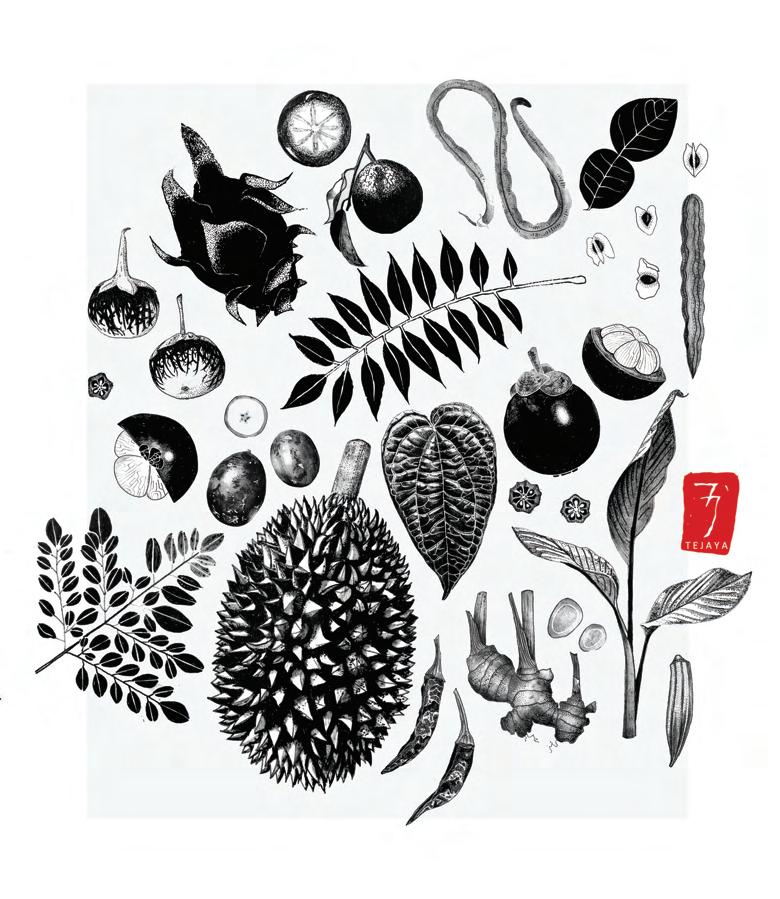
17
landed on the mat at my front door. Captivated by the soft beauty and tender honesty of her illustrations, I sat down with Tisha to learn more about her story, and about the stories she hopes to share through her new creative endeavour, Cornucopia.
When our call connects, Tisha is on Larrakia Country, collecting reference photos of the Yellow Kapok flower— native to the Northern Territory— for an illustration she’ll be drawing later. Taking me on a virtual tour of the swamp area around her, Tisha explains how recent bushfires have left parts of the land black and scorched. As she shows off the yellow blossoms, brightly coloured bladderworts, trigger plants, and swamp lilies going crazy all around her, I’m taken by the symbolism of the scene. Australian natives and introduced herbs and flowers all flourishing together in a cornucopia of beauty against the raw land. A perfect representation of what Tisha aims to illustrate through Cornucopia: the diversity and tenacity of migrants and former refugees living in Australia. The world is not the size of a moringa leaf—“Dunia tak selebar daun kelor”
Tour complete, Tisha settles behind a large rock to muffle the sounds of the wind, and we begin the interview.
Tell me about Cornucopia.
I’m aiming to interview at least 100 migrants and former refugees around the Northern Territory. The big focus is recording how things like food and … art can capture a person’s culture through the generations. I desire to capture the process of migration and adapting to living in Australia.
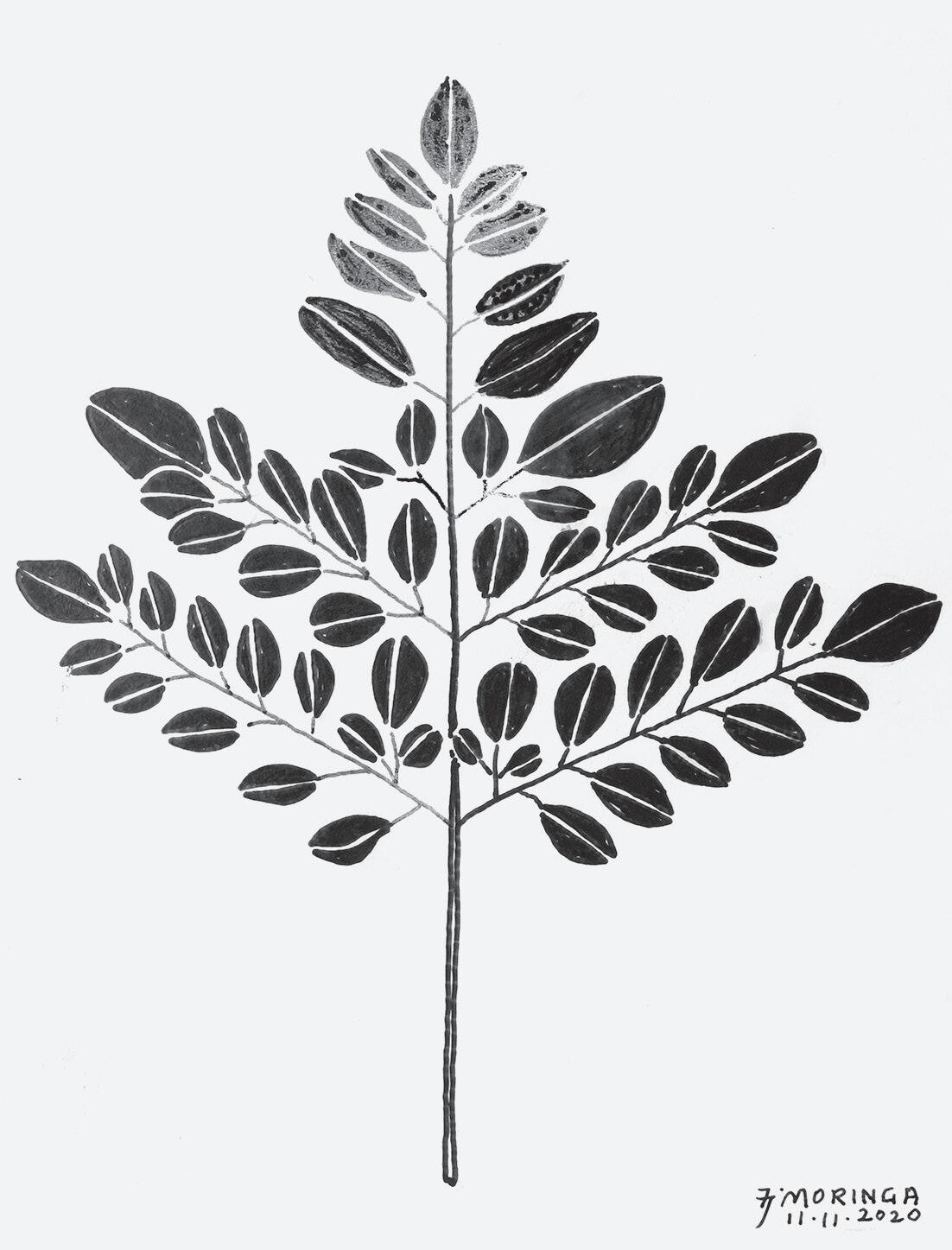
To me, there are three situations that arise when someone migrates to a different country. The first is when there is a gap—some things don’t transfer. Some memories don’t translate, and some information or cultural practices just stay in the old country. The second is when there is a huge clash, like a conflict of values.
A big one is the clash between kids and parents—when one generation acculturates to the new place way [faster] than the older generation. The third one is the bridging spaces like the markets—and also things like sports or comedy. Things that bring people together, where there’s overlap. That’s what Parap & Rapid Creek Market is about.
With Cornucopia, I want to know more about what happens when there’s conflict or a gap. There’s no handbook on how to come to a new country and still be a good kid while being true to your parents and cultural practices. It’s really hard to form values when you’re stuck between two worlds, and I just hope these stories will help people realise that a lot of things they thought were personal deficiencies are actually structural problems that affect everyone.
So, you’re an ANU-educated lawyer. How did you come to be in the creative space?
My creative journey started while I
was still at ANU. Coming from Darwin, I found the winters really difficult in Canberra. My parents would send me pictures of tropical produce, and I started drawing it because I was really homesick and wanted to have that little piece of Darwin here with me. I drew probably about nine tiny card-sized pictures of tropical produce over the course of my law degree. But when I came back to Darwin and was [admitted] as a lawyer I kind of just shelved that and … didn’t do anything with [drawing] until 2020 … when I really wanted to know more about my cultural roots and started going to the markets regularly.
Was there a catalyst for your renewed interest?
I think there were two—the first was that I realised I was the same age my parents were when they came to Australia. [In many ways,] our circumstances are really similar, [but] I can’t imagine now moving to a different country that speaks a different language with a completely different set of people. I mean, I wouldn’t even know if they had the same food that I eat here. How did my parents make that journey? I think it’s incredible that migrants and former refugees do it.
The other catalyst was that I was working as a judge’s associate and I was feeling burnt out about being in law. It’s important that [criminal] cases are heard and dealt with, but I just felt like every day, we were bombarded with the worst stories possible. I thought, “I don’t like how the only time I’m seeing humanity is at its worst when at the same time, I’ve got people around me who are talking about such resilience and generosity and bravery.” I decided to learn more about people’s journeys and realise how strong … our community is. The bad stories will always be preserved in court records … I wish we did the same with good stories, but they’re what usually slips away.
What do you think sharing these
18
Moringa
Leaf
stories means for the people they belong to?
I think it is always important that our stories are recorded, and it would be good for them to be reflected in mainstream media. But I think the impact is even more personal and raw, because I’m inviting a lot of migrants and former refugees to reflect on a past they wouldn’t normally reflect on. I think a pattern with migrants is that we tend to just look at the future and we don’t like to look at the past. My favourite part of interviewing people is when I ask, “Can you imagine talking to yourself when you first came to Australia and things were so uncertain and you didn’t know the language? Look at you now, you’ve made it. How do you feel?” I think that journey of looking back and seeing how far we’ve come is the biggest thing.
A flow-on effect … is that it brings families closer together. When I’m interviewing migrants, their kids will usually be the ones helping me interpret their parents’ stories—and they’ll hear stories they’ve never heard before. I think [hearing them] helps explain so much because sometimes, when you’re sitting between two cultures, what your parents do makes no sense, it seems arbitrary and cruel—but when you hear why your parents are the way they are … it bridges that generational gap of what might otherwise be distrust or misunderstanding by raising awareness that we’re all just trying our best. So much can be lost in definitions and different languages and different cultural practices, but in the end, this is what we are.
Why the Northern Territory? What makes the stories you’ll find there special?
A big attraction of the Northern Territory is that it’s really properly multicultural. [Many] different cultural groups mingle together with food, sport, and art, and you get a lot of friendships across different multicultural groups rather than enclaves. [Like the] growers …
Lilies (Crinum uniflorum) on a Tiger

who took care of my family when we first moved here—my story is threaded through here, as well.
Another is that there’s so much outback in the territory and rugged natural life. [There are] so many deadly and poisonous creatures here—it’s a challenging environment, and I really enjoy talking to people who have professions connected to the land. Whether it be fishing, mud crabbing, growing fruit or vegetables or crops, this is a hard cowboy land to be living on, and it’s fascinating how creative [people are], and how much gumption people have here. For me, the NT is the central heart of Australia.
Tell me about food. What does food represent in the migrant experience?
Food represents an ephemeral memory vessel. When you ask people for their memory of a specific thing, I don’t think it will ever be evoked as viscerally as when food is the thing to trigger it. When a person cooks their family recipe or eats [food], they remember things so vividly and are able to share them. For me, coming from a multicultural family, and because of language [or
value] barriers, so many things don’t get passed on. That’s where food steps in to remind people … I think it’s a really powerful way to bridge those gaps and to share memories and traditions and values that aren’t easily communicated across languages. Food is not controversial. It’s gentle—it’s a loving space … of understanding and of nourishment, because you’re trying to keep each other healthy. It’s a universal form of affection.
Can you tell me more about what the market represents for you in terms of identity and belonging?
When I wanted to learn more about my history and my family’s history, I found it really hard to talk to my parents—it wouldn’t feel like we were speaking the same language, even though we were both speaking English or Bahasa. It was hard for my parents to open up about past memories because a lot of what happened was really traumatic, and the memories of coming here were really just in the past. Even though we’re all physically fine, it was a very stressful time leaving my grandparents behind, and I guess there’s a lot of guilt associated with that, too. The markets
19
Swamp
were such a wonderful place to be because when I talked to stall holders, often bringing my parents or aunty with me, people would start remembering the things they didn’t want to remember or answer if I had just bluntly asked them. People wouldn’t know how to answer questions like: “Why did you come to Australia?”, “What was the war like back home?”, or “What was the hardest part about coming to Australia?”
But coming through the markets and saying, “Oh, we used to cook this because back in the day it was a really cheap thing to cook”, would make the memories bloom back, and I heard so many stories that I wouldn’t have even dreamed I’d access.
I think it really helped to coalesce my identity as a migrant and as an Australian. When people at the markets started opening up about their journey coming to Australia, their struggles, and how proud they are—even though there’s a reason we left the old country and came here, we’re still proud of our culture back at home. I learnt that you can be proud of being Australian and also have a really rich cultural heritage—the two aren’t mutually exclusive. In fact, they enhance each other. The markets are a huge part of my life now—they mean a lot to my identity because they’re the bridging space that allowed me to come back
Drumstick
toward my cultural roots as a migrant, as a Teochew-Chinese woman, and as an Indonesian woman.
What does it mean for you to now feel comfortable in your identity and embracing your culture?
It feels pretty incredible. I think that’s a product not only of the changing environment where multiculturalism and diversity are celebrated, but also growing up a little bit and getting more comfortable with who I am.
For a lot of my life in Australia, I didn’t know much about my cultural identity—and to be
Swamp Lilies on an Ox


20
Moringa
honest, I didn’t really want to. When I was a kid, I felt like I had to wear very different masks depending on where I was—at school, I wanted to be as Aussie as possible and to eat pies; I didn’t want to eat curry, or have my parents’ chilli tolerance teased, or be asked if I was eating cat or dog. At home, I tried to be as obedient and quiet as possible. It was so difficult when those two worlds would interact … my identity would go haywire and just crack. Now that I’m grown, and more confident in who I am and in my rich cultural background and identity, I’m in a space where I really love it when I talk about my family’s food … I feel like I can relax and be really happy for and proud of my community, and that I’m a part of it. I guess when you
feel like you can breathe, you realise how tightly you’ve been holding your breath.
Is there a word or phrase that encapsulates Cornucopia?
“人不打汝 , 汝 打人” is a Teochew phrase. In pinyin, it is roughly pronounced: “nang boi pak leu, leu pak nang” and directly translated into English, it means: “People don’t hit you, you hit people”. This phrase embodies the Teochew pride and selfawareness that we are quarrelsome people. It’s significant to me because it captures the fighting spirit that my family and culture has carried through the generations, despite being far from our ancestral village in South
East China. Though I’ve known of the phrase since I was a kid, I’ve only realised its deeper personal meaning in the past few years as I’ve started having these conversations with my family about our identity and cultural background. The phrase has become sort of an inside joke for my mum and dad, and I value the way I’m now in on it. I think “人不打汝 , 汝 打人” also encapsulates my vision for Cornucopia because it acknowledges the tension that can exist between people and cultures. I find it deeply comforting … to be talking to more people about the conflict of being in two cultures and whether it is possible to live harmoniously in both.
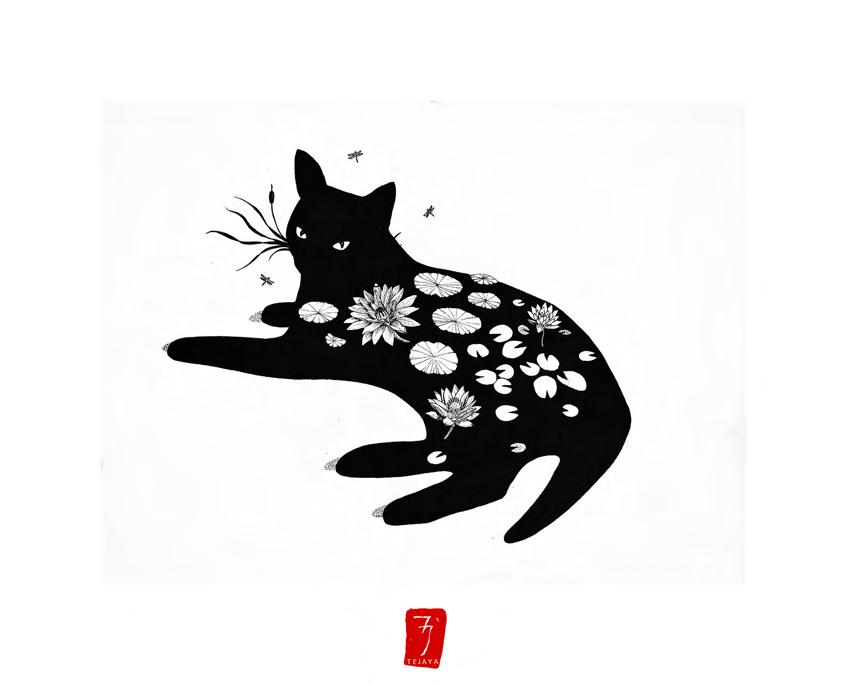
21
'Lily', inspired by the Blue Water Lily (Nymphaea violacea) that is native to Northern Australia
Pliny the Elder Attempts to Describe the Poet for His Natural Histories Bastian deBont

Precocity in youth is a sign of an early death the poet, was attacked with fever every year His head almost severed from his body, he lay the whole of the day upon the seashore A truly graceful device. How has the animal acquired this knowledge? And where has it seen him before, of whom it stands in such dread? By the variety of appearances which it assumes, it puzzles the observers. Its aspect was hideous

Possesses in itself both sexes, being a male during one year, and a female the next These are mutually bound together, and they are often to be found clasped in each other's talons.
To confess the truth
Though I am not quite sure that its existence is not all a fable But, for the present, we are treating of the operations of nature, and not of miracles And so much the more disgraceful is our ignorance, we ought not to be ungrateful to this one part of nature I consider the ignorance of her nature as one of the evil effects of an ungrateful mind.
In keeping with this edition’s theme of Chimera, I’ve constructed a Frankenstein’s monster out of lines from Pliny the Elder’s Natural History, forming a self-portrait out of his descriptions of other animals, objects, people, and phenomena. Natural History was an attempt to describe and categorise everything known to mankind at that moment in time, but is notable today for the many false assertions and conclusions within, and is arguably more well known for all it excludes as well as includes. If we are lucky, then there will always be more undiscovered, strange things in this world

22
Self-Portraits


Jamie Cardillo
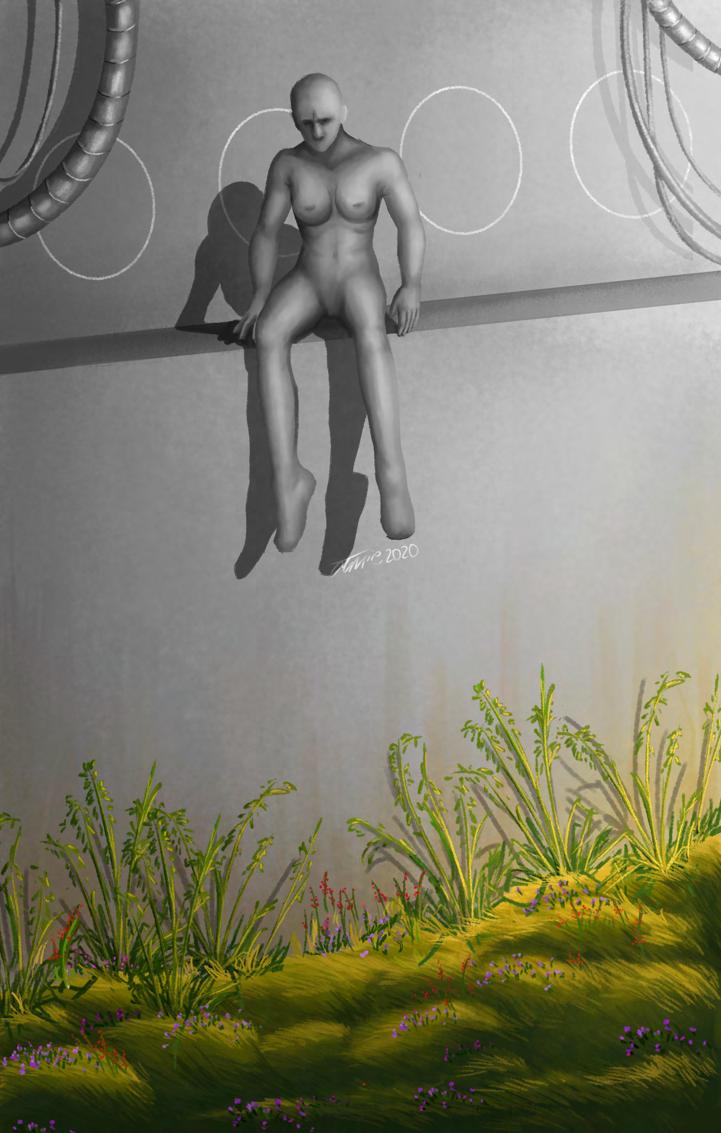
A self-portrait is defined as “a portrait that an artist produces of themselves.” At first glance, the pieces in this collection may not resemble the typical idea of the self-portrait—however, although surreal and dreamlike, each shape and concept within these pieces reflect the person behind the iPad and Apple Pencil who created them. In ‘The Leap’ (2020), I've captured many aspects of my queer identity; sexless, genderless, and undefined, the figure on the ledge fixes their eyes on the warmth and softness of a field that has flourished long before they came into existence, revelling in the growth of generations before them and waiting to take the leap into further self-discovery.
‘Shrimp’ (2021) is fanart of my favourite game series and captures how integral my interests are to my identity. The Rusty Lake series has been an important part of my creative journey over the years. Fanart has kept me drawing during long periods of intense art block, and Rusty Lake played a significant role in the development of my current art style. The dark themes and surreal imagery of Rusty Lake reflect the concepts I love to explore, both in my original pieces and fanart.
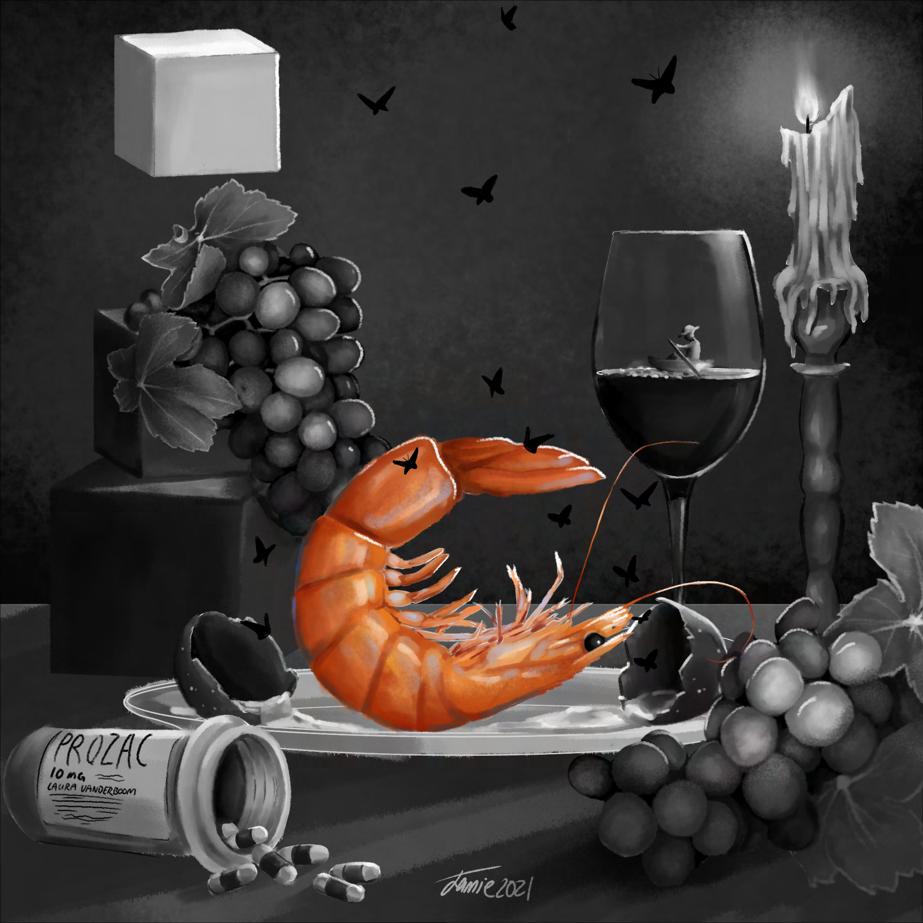
24
Finally, ‘Chimera’ (2022) is a piece I created specifically for this edition of Bossy. Much like how the three heads of the Chimera work together to form the whole, I find within myself three main aspects of my identity—body, mind, and energy—that form a definite yet incongruous mass, which in turn forms me in my entirety. I am surreal, I am dreamlike, I am so simple yet infinitely complex. While these three pieces may defy the literal meaning of “self-portrait”, within them I have produced myself.
Jamie Cardillo (they/them) is a second-year ANU student studying a Bachelor of Arts, majoring in English. A self-taught artist since 2016, they use digital media to create darkly surreal designs that draw from their queer identity, involvement in activism, and interest in classical mythology. Although originally based in traditional colour artwork, Jamie now works in greyscale, often incorporating only a single point of colour or no colour at all in their art. They like to include an array of intricate visual details in their pieces so that viewers can experience their art many times and always find something interesting.

25
Behind the Blog: An Interview with Samia Ejaz Interview by Christie Winn
This interview has been edited for length and clarity.
Samia Ejaz is the creator of the 50immigrants Project, an Instagram blog sharing the stories of immigrants living in Australia. Inspired by her own experiences, Samia’s aim is to create not only a platform where she may share the stories of immigrants, but a broader community that shares the bond of common experience. At the time of this interview, 50immigrants had 25 immigrant stories posted, having grown well beyond the goals Samia initially set for the blog.
First, can you tell me a little bit about yourself and your own story?
Before immigrating to Australia, I lived in Dubai as an expatriate. My parents are both of Pakistani origin, and they raised me with South Asian cultural norms that were also influenced by my immediate Middle Eastern society. My family’s decision to move to Australia was largely motivated by the education and career opportunities available here.
What led you to create the 50immigrants project?
Upon interacting with other immigrants, I realised most of us had stories we wanted to share with our broader communities. My vision for 50immigrants was just that—encapsulating people’s stories using art as a form of self-expression.
Tell me a little bit about the creative process behind the project (i.e., finding people who are willing to share their stories).
It has been quite challenging to reach out beyond my circle of immigrant friends, but I am happy to have found some success in sourcing stories from strangers across Australia. A lot of research and thinking has gone into appropriately marketing the blog and maintaining engagement online. While people love sharing their anecdotes, it is often hard for them to condense their stories within the word limit appropriate for an Instagram blog. For this reason, I’ve also spent considerable time creating prompt sheets and engaging through the Stories feature on Instagram in an effort to inspire submissions to the blog.
You note that it is challenging to reach out beyond your circle. Do you think there is a reason for this? Are people ever hesitant?
Reaching out to people poses many challenges, particularly regarding how and when I pitch the blog. A lot of work goes into convincing people that what you are doing is worth their time, and even more effort goes into convincing them that their story is worth sharing! Interestingly, quite a few of the stories already posted feature very open and honest details about the writers’ experiences; since a lot of these people chose to stay anonymous, I think they were less hesitant to share their stories.
In many of your accompanying illustrations, your subjects are faceless. Is this intentional, related to the desire for anonymity? Is there a message being conveyed?
I think minimalist art styles have an appeal to them, and the decision to opt for faceless portraits has also helped me create a safer platform for sharing stories. There is comfort in anonymity, which has thus far enabled people to be more open about the stories they share. While each portrait is faceless, I put a lot of consideration into personalising them.
I definitely see this personalisation working tonally. I love how when I see the art, I don’t notice that there is no face, because I feel a sense of
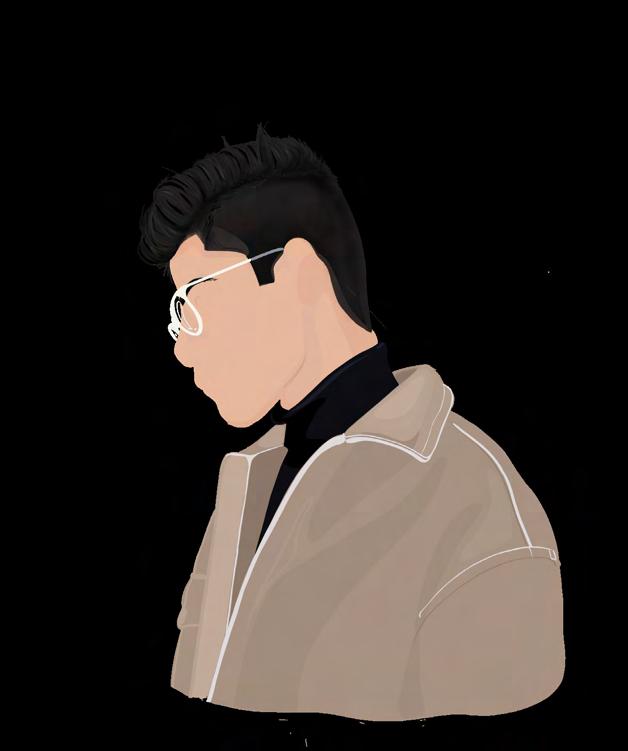
26
Art by
Ejaz.
Samia
learned a lot from experience, yet significant trialling still goes into making sure a drawing looks personalised enough. It is challenging, but I love seeing the picture come together, and this is what keeps driving me.
You mentioned that having the subjects faceless creates a safer platform and that anonymity provides a certain level of comfort. Do you think this is because of the negativity we know can be associated with social media? Or is it purely due to nerves from sharing a personal story with the world?

I think it is a bit of both. Not only is it nerve-wracking to get personal and candid on the Internet (for some people, at least), but there is a lot of stigma associated with certain themes that come up in immigrant lives. Personal image becomes a huge factor when people begin to open up, and to me, this is a natural response—hence, I provide the option to stay anonymous.
Throughout your blog, there is a recurring theme of the challenges involved in being raised with varying cultural norms. How do you think your project creates a sense of community and/or spaces of belonging amongst immigrants?
Through the collection of stories on the blog, I’ve realised that we’ve been able
to develop a sense of shared experience. People resonate with the struggles and successes of others from similar backgrounds, and this does wonders for emphasising the intricate connections within the immigrant community.
Bossy’s print theme this year, Chimera, is about proclaiming ourselves as we are—making our true identities and stories known and accepting the facets of our own being that have been concealed to keep others comfortable—do you think 50immigrants embraces this goal?
Can you see any similarities in your project, or even in yourself?
I think Chimera is a brilliant reflection of 50immigrants and my personal values that are at the heart of the blog. Most immigrants spend considerable time trying to adjust to their multifaceted identities, often plagued by conflicting cultural norms and life philosophies. In beginning to share the vulnerable parts of ourselves, we can encourage others to do the same—to begin to acknowledge and perhaps even accept ourselves for all that we truly are.
My biggest takeaway from running the blog has been the striking diversity in experiences. While most of the stories shared thus far are united in their common search for “belonging far from home”, it is astounding how every contributor’s journey is shaped by unique experiences, perspectives, and learnings. Upon close inspection, no two stories have been 100 per cent similar; rather, parts of an individual’s experiences may be shared with others, creating a beautifully complex fabric of interconnectedness.
It is interesting to realise that people react very differently even during circumstances that may appear similar on the surface. I feel that it is this very thing that imbues a human quality to the contributions, and I can’t help but think of this collection as a capsule of sorts. That
thought in itself is a strong motivator for keeping the blog running.
These realisations have been reassuring. While I have definitely found comfort in the knowledge of shared experiences, I believe the blog has done an even better job at strengthening my sense of empathy and resilience. Life’s events often challenge us, and sometimes we can get a little wrapped up in them; to learn that others have mustered the courage to get through their share of struggle is both empowering and enlightening. I personally feel that every shared story is a reminder to embrace my inherent mix of cultural ideology— that it really is okay to find your own version of harmony within this mix, and more importantly, it is okay to do so at your own pace.
Finally, is there anything else you wish to include or share?
I hope we can all create environments that not only encourage self-expression, but also embrace it. If you would like to contribute to my small attempt at doing this, feel free to message me at @50immigrants on Instagram or via email at samia.ejaz2000@gmail.com

27
A Reading Renaissance? Reviewing the Influence of BookTok Harriet Sherlock
If you are anything like me, you spent your childhood consuming all the books you could get your hands on: the Rainbow Magic series (I was devastated when the fairy with my name was the Hamster Fairy) led to an intense dystopian and fantasy obsession (cue Chosen One tropes and questionable romantic age gaps), with plenty of Archive of Our Own (an open-source FanFiction site) in between. You called yourself a bookworm, until one day you realised that despite your bursting bookcase, you hadn’t actually read anything other than international political theory in years. While my collection of books has never stopped growing, I have only recently gotten back into consistently reading fiction—and honestly, I have TikTok to thank for that. Despite my initial resistance, I have been an avid TikTok user since the lockdown of 2020 (please don’t ask to see my screen time), and a big part of my For You page has by now been taken over by BookTok. This “side” of TikTok is full of book hauls,
commentaries, micro-reviews, book memes, and people showing off their beautifully curated bookshelves.
I’m not the only one whose love for reading has been newly revived by the app. In recent months, BookTok has drastically driven up the sale of print books and sent many older titles to the top of the bestseller list: you don’t have to look further than your local Dymocks to find specially curated #BookTok displays. Reading culture and communities on social media are not new—BookTube, a space on YouTube similarly dedicated to reviewing and discussing books, has existed for years— so why has BookTok taken off in a way that other corners of the Internet never did? TikTok’s algorithm, I suspect, plays no small part in its success. The curated environment of TikTok users’ feeds, based on their interests and content consumption, means that people who are curious about reading do not have to exert much effort to find relevant content; it is simply fed to them in a never-ending stream. The bitesized nature of TikTok content often means that creators will choose to focus on specific themes or aspects of a book, which further bolsters the algorithm’s ability to pinpoint readers’ tastes within a genre. Not only can you find broader Romance recommendations, but books containing enemies to lovers or the “one bed” trope. Other social media platforms such as YouTube, Instagram, Facebook—and even Tumblr—require users to manually search for and follow
creators, and typically provide much longer content to consume. Being able to exist in select subcultures of likeminded people, without the need to search for them, allows users to easily discover new authors and books that are tailored to their most specific interests, and enter into conversations that may otherwise feel unavailable to them. Similar to swiping left and right through your Tinder feed, every slide of the finger leads to another sweet, sweet dopamine hit from each new video. This intense yet effortless immersion invites people to take up the identity of the insatiable reader they may have once been in their youth, and is a large part of the platform’s appeal.
Many of the books that are popular on BookTok fall into the category of Young and New Adult. Young and New Adult books—in particular, those in the Romance genre—have long been stigmatised as “lowbrow”, immature fiction, or even disparaged as “chick lit”. The condemnation and belittlement of young women’s interests as superficial is not new nor exclusive to reading; yet today, it is these young women who are skyrocketing book sales and altering the publishing industry as we know it. Part of my reading hiatus may have had something to do with my internalisation of these associations: in favouring “intellectual” types of books, I wasn’t allowing myself to just enjoy what I was reading. Many other TikTok users have similarly admitted to feeling as though limiting their reading to the “classics” is considered an intellectual imperative; if not achieved, it indicates a lack of care, attention, or thought. Critically engaging with the content I consume and the world around me is something that I want

28
to do every day—but maybe this ability isn’t limited to the classics. When you read a romance novel, you are watching someone intimately discover just how important and necessary another person or people are to them—it might appear silly, but in times when I despair at the ways humans interact with one another, it can actually feel quite healing.
Not only have I been able to easily engage with works of fiction on TikTok that I already know and love, but I have also discovered many more authors. Because the For You page is rooted in an algorithm where anyone’s video can potentially be seen by thousands of others, it has allowed the voices and interests of individuals who are not usually promoted in the mainstream book market to be elevated. BookTok has proven that stories revolving around more than straight white people with the inability to communicate are wanted— and, in fact, already exist.
But am I just on the “right” side of TikTok? While the design of the algorithm does have the advantage of allowing diverse stories to be discovered, it is not bias free. At the end of the day, people will still choose to watch things that appeal to them, and are more likely to view content by creators whom the algorithm deems attractive. The most viewed BookTok videos typically feature white and conventionally attractive readers. While more diverse content is certainly highlighted, there is still a certain level of success that is unreachable unless the subject matter is delivered by algorithmically desirable individuals— and in some ways, BookTok has become not only a means of discussing and spreading books in a quick, digestible way, but also about capturing the “aesthetic” of reading. Like with many things, it can be easy to become complacent and accept what we are being shown just because it is simpler and more pleasant to do so.
But we don’t have to be slaves to the algorithm. While we can certainly just sit back and scroll, if we want to make BookTok a worthwhile platform and community to engage with, a little active content seeking is required. Whether you want to boost Queer and/or BIPOC authors, expand your reading tastes, or are just tired of seeing Sarah J. Maas and Colleen Hoover recs, actively looking for and reading stories that are about and by people with varied life experiences is important.
The problem with potentially neverending amounts of content is figuring out where to begin. My suggestion is to start by making use of TikTok’s hashtag system; not only by searching #booktok or #bookish, but also including #translatedfiction, #literarytok, #queerbooks, and #BIPOCbooks. Make an effort to like videos and follow creators who review and enjoy reading diverse books. Once you show the algorithm what you like, it will quickly become the gift that keeps giving. To get you started, though, here are a few spoiler-free reviews of some of my favourite BookTok finds.

The Priory of the Orange Tree by Samantha Shannon
For some, all I’ll need to say is: lesbians, magic, and sentient dragons. At a hefty 848 pages, this book is not for the faint of heart—but Shannon is a phenomenal storyteller and world builder. The Priory of the Orange Tree is an epic high fantasy novel filled with religious feuding, political intrigue, romantic longing, and a cast of incredibly well-written female characters.
Iron Widow by Xiran Jay Zhao
Are you sick of love triangles that always end with the protagonist choosing the obvious character and are technically more of a “love V”? Iron Widow not only depicts a fully formed polyamorous relationship, but plunges into an incredible sci-fi reimagining of the rise of the only female emperor in Chinese history. While a bit rushed in places, this book is a fantastic read for anyone who enjoys YA dystopian fiction. The novel does touch on some darker themes, so make sure to check the content warnings before diving in.
A Thousand Splendid Suns by Khaled Hosseini
A warning: this book will make you cry. And potentially emotionally wreck you, but I swear it’s worth it…
A Thousand Splendid Suns is a beautiful and deeply moving book that I’m still thinking about weeks after having finished reading it. The story follows the lives of two Afghani women, and is so well written that at times I had to remind myself that it was not real. Again, please make sure
to look up the content warnings before reading.
And what’s at the top of my TBR list, you may ask?
Babel by R. F. Kuang
For all you Dark Academia girlies; I’m very excited to start this one! This book was released in August 2022, and has already begun to circulate with rave reviews on BookTok. Babel is a Dark Academia novel that follows a young Chinese boy who is whisked away to Oxford University, and works to criticise colonialism and elitism within academic institutions. Give this one a go with me and see if it’s worth the hype!
* * *
Diversifying your fiction is vital in a world where the stories of white and heterosexual lives are privileged over the narratives of more diverse lived experiences. So, I’m sorry if I or your For You page have just added considerably to your ever-growing TBR list—but for me, that’s half the fun of reading. Despite its flaws, BookTok has led to my personal Reading Renaissance, and a genuine joy in reading anything and everything whenever I can. If your own BookTok content seems to consist of the same five books (trust me, I know the ones), with a little bit of effort and algorithm tinkering, I promise that you will find there is way more out there. And I know you will love it.
29
Power, Self, and a Voice for the
Voiceless: A Review of Madeline Miller’s ‘Galatea’

equalled … a perfect virgin with the grace of life”. Pygmalion falls in love with his creation. He kisses it, brings it presents, and adorns it with beautiful clothes and jewellery. At last, unable to endure such unattainable perfection, Pygmalion prays to Venus (the Roman goddess of love and beauty) to bring the statue to life, and Venus does. Pygmalion is overjoyed. The perfect woman is finally his, and he need not worry about the worthless, shameless sluts he so despises ever again.
by Pygmalion, for Pygmalion; her sole purpose is to satisfy his desire for a wife and a child. By contrast, Miller’s Galatea has a voice of her own. The entire story is written in first person, offering insight into her feelings and convictions Ovid would never even have considered mentioning. Indeed, with all well-known Greek myths being written by men and men only—to retell one from a woman’s perspective is nothing less than revolutionary.
CW: Descriptions of sexual assault, abuse, and suicide.
Pygmalion saw women waste their lives in wretched shame, and critical of faults which nature had so deeply planted through their female hearts, he lived in preference, for many years unmarried.
This is the first impression we receive of Pygmalion, talented Greek sculptor and self-proclaimed woman-hater, in the Roman poet Ovid’s retelling of the myth of Galatea. Pygmalion believes women flawed and unworthy of his attention, and instead decides to create his own, perfect woman out of ivory. The statue possesses “exquisite beauty, which no woman of the world has ever
Many readers have been inspired by Ovid’s tale. Some view it as metaphorical; some as romantic. But not Madeline Miller, author of the bestselling The Song of Achilles, who was “disturbed by the deeply misogynist implications of the story”; so much so that she wrote her own, utterly different, version of the myth. The short story Galatea transforms Pygmalion from a victim—tempted yet disgusted by the shameless women of society, forced to build his own woman as the only way to satisfy his desires for female affection—to the controlling, spiteful, perverted monster he truly is. Moreover, Miller challenges the ideals imposed upon women by Ovid’s myth: submissiveness, sexual purity, physical perfection, and a total lack of self beyond pleasing a man. Harrowing yet moving, Galatea succeeds in its noble purpose: to confront destructive ways of thinking and to give a voice to the voiceless.
Miller’s first achievement is granting Galatea a sense of self. The original Galatea is a “compliant object of desire and nothing more”. She does not speak and is not given a name. She is created
This powerful stylistic choice allows Galatea’s personality to shine through in Miller’s writing. She is funny, intelligent, caring, and brave. She loves her daughter Paphos, persuading Pygmalion to hire a tutor so that Paphos might study and flourish; and—indicative of her cunning wit— throughout her torment, Galatea tells Pygmalion exactly what he wishes to hear, all while secretly planning his demise. Miller transforms Galatea from a soulless, purposeless being to a complex person with thoughts, opinions, and emotions. To be a woman is not to exist for a man, with no voice nor spirit of one’s own. It is to have passions, desires, beliefs, a soul. It is to think, to love, to rebel against those who try to silence you. This is what Galatea was robbed of by Ovid, and what Miller finally grants her.
Further illustrating her brilliance, Miller condemns Ovid’s idealisation and objectification of the female body. In Ovid’s myth, Pygmalion is drawn to Galatea’s “exquisite beauty”. The story describes in great detail how he “kisses [the statue] and feels his kisses are returned … caresses it with loving hands that seem to make an impress,
30
Taia Apelt CW: Descriptions of sexual assault, abuse, and suicide.
on the parts they touch”. This is Ovid’s picture of a perfect relationship— women as objects for men to use and enjoy. Miller challenges this fervently, making it painfully obvious that Pygmalion does not love Galatea; he objectifies her body and obsesses over her physical appearance.
The thing is, I don’t think my husband expected me to be able to talk. I don’t blame him for this exactly, since he had known me only as a statue, pure and beautiful and yielding to his art. Naturally, when he wished me to live, that’s what he wanted still, only warm so that he might fuck me.
As soon as Galatea slightly deviates from his idealised fantasy of female beauty, Pygmalion turns against her; his reaction to stretch marks caused by her pregnancy is to state: “They are ugly … If you were stone, I would chisel them off.” Miller refuses to subject Galatea to the absurd beauty ideals Ovid imposes upon her, and thus exposes his desires for what they are: fetishisation.
Not stopping there, Miller goes on to denounce Ovid’s repulsive and borderline paedophilic obsession with female sexual purity. In justifying Galatea’s beauty, Ovid describes her as “a perfect virgin with the grace of life”. The first time she turns human, he narrates:
Galatea’s cleverly scornful description of this routine is almost a perfect parallel to Ovid’s narration of the first time she came to life, yet told in an entirely different tone. These contrasting passages make perfectly clear Miller’s denunciation of Ovid’s nauseating craving for female purity.
The final mark of Miller’s creative genius is her unmasking of Pygmalion’s depravity and subversion of his control. In Ovid’s original tale, Pygmalion is a victim. He has been wronged by the women of society; they are sinful and evil; they do not deserve his attention. Readers sympathise with his plight, and his obvious objectification of his wife goes unnoticed. Ovid ensures this by silencing Galatea: with no indication of displeasure, she willingly submits to Pygmalion’s desires. This is Ovid’s ideal woman—one who does not object nor argue, one who complies. Yet this fantasy is in no way a reflection of reality, and Miller ensures that the appalling truth of Pygmalion’s brutality, as well as its heartbreaking effect on Galatea, is revealed.
He said, you do not blush anymore, that is the thing. You apologise and apologise, but you do not blush. Are you shameless now?
and control is just one example of the daily abuse Galatea suffers at the hands of her husband. He is jealous and manipulative, firing Paphos’s tutor after accusing him of looking at his wife. What’s more, ever since an unsuccessful escape attempt a year prior, Pygmalion has kept Galatea locked up in a hospital, where “the room swelled around [her] like a bruise” and “the four wood walls seemed to press towards [her], like lungs that had breathed in”. Miller exposes the harsh reality of Galatea’s existence, concealed by Ovid’s illusive descriptions. Moreover—and this is perhaps her greatest achievement of all—Miller grants Galatea the power to rebel against Pygmalion’s control, ultimately rejecting his fantasy of the perfect submissive woman.
Unlike Ovid’s compliant, agreeable Galatea, Miller’s protagonist refuses to continue enduring her husband’s abuse. She devises a brilliant plan to escape from the hospital, leads Pygmalion to the ocean, wraps her arms around his body, and prays to Venus to turn her back to stone. Galatea sinks, drowning her captor with her. Miller refuses to grant Pygmalion his undeserved happy ending. Instead, he is killed by his own creation, and Galatea is finally left at peace: “The ocean floor was sandy and soft as pillows. I settled into it and slept.”
Now real, true to life— the maiden felt the kisses given to her, and blushing, lifted up her timid eyes, so that she saw the light and sky above, as well as her rapt lover while he leaned gazing beside her
Now real, true to life— the maiden felt the kisses given to her, and blushing, lifted up her timid eyes, so that she saw the light and sky above, as well as her rapt lover while he leaned gazing beside her Once again, Galatea’s blushing face and “timid eyes” paint her as innocent and childlike; I challenge you to read this description without cringing. The implications are disturbing, and Miller does not hesitate to confront this problematic portrayal. Miller’s Pygmalion, indicative of his perversion, indulges in a ritual where he makes Galatea pretend to still be made of stone before performing a fake prayer to Venus and watching her come to life as if for the first time.
And that’s when I’m supposed to open my eyes like a dewy fawn, and see him poised over me like the sun, and make a little gasping noise of wonder and gratitude, and then he fucks me.
No, never, I said. He grabbed the neck of my dress and yanked, but he was not as strong as he wished to be, and it did not tear. He yanked again and again, then pushed me to the floor and held me there, yanking, until the fabric gave way and I was naked.
I covered myself with my hands, and made soft noises like a child. Blush, blush, I prayed. Blush for him, or he will kill you. And I was fortunate, for it was warm in the room, and I was angry, and ashamed too, for I feared that Paphos could hear us, and the blood came to my cheeks and I blushed.
He said, ‘So you are not completely lost to me.’ And he sent me to bed, and after, in the torchlight, he wondered at the marks on me, the red around my neck, and the purple on my arms and chest where he had gripped me. He rubbed at them, as though they were stains, not bruises. ‘The colour is perfect,’ he said, ‘Look.’ And he held up the mirror so I could see. ‘You make the rarest canvas, love.’
This harrowing exertion of violence
Galatea is a masterpiece. Beautifully written, it implores readers to think critically, challenging ideals they may have previously accepted without a second thought. One may argue against the relevance of analysing ancient writings to contemporary feminism, yet history is what shapes modern reality. The biases and prejudices that have influenced literature over time also dictate society’s treatment of women today, and we must examine these closely to ascertain their origin and manage their aftermath. Greek mythology in particular, as fascinating as it is to study, utterly robs women of their voices. Discussions of women are centred around men’s perceptions of their worth, and any characteristics of the woman herself—her thoughts, emotions, desires—are disregarded entirely. Not only does Madeline Miller ardently confront these widely accepted portrayals, she gives back the voice literature stole from women, and that’s what makes her novella so remarkable.
31
The Brothel of Avignon
Hengjia Liu
“Every time I change wives I should burn the last one. That way I’d be rid of them. They wouldn't be around to complicate my existence. Maybe, that would bring back my youth, too. You kill the woman and you wipe out the past she represents.” —Pablo Picasso
We breathe our collective sigh of relief when he sets the brush down. Our bodies, still wet and vulnerable in the dimming candlelight of his studio, soften— once tried their hardest to curve away from the glint of his palette knife. In the end, what we tried would not matter: he would always find us, scoured and scraped clean in those discerning eyes, hung precariously on that furrowed brow. The Schlink of the metal on canvas when he gouged and gashed through rose-coloured flesh— a surgeon purging us of blemishes. The alien feel of the wash brush sweeping abdomens and thighs, but not more intrusive than rough hands mapped over curves and ridges. Calluses dragged over skin. Once, a thumb caressing a smudge of red under my right eye as if to wipe a tear away, clandestine smile on his face. What was he thinking? What did he know? This elusiveness drew me first to him. To be beheld in the eyes of the artist, more intimate than any touch. Is there any greater worship than that of labouring over your features, honing them to perfection?
And in the beginning, there was just us: his breath fanning out over the canvas, burying to the bone; in return, lead coating his lungs. And then— another showed up. And another. And another.
And another. All who drew each breath for him wrestled wildly for his attention on the canvas. Too late when we saw ourselves in such wretched shapes; senseless, doltish over that man, marionettes under his thumb— swine, pink and exposed, trussed up for auction in his cubist cage. And suddenly we felt disgust at his hungry gaze, his roaming hands— the dip and glide of his brush.

Serpentine smile, laced with condescension—
had planned this from the start. In the future, they will say a million things. Unearthed impasto, stripped and picked to the bone to reveal anything more about the painter, our bodies never our own.
When he was done with the painting, we felt glad to be free of him— not knowing he had branded us in the back with a parting kiss, moved swiftly to his next subject. Le Bordel d'Avignon, he wrote, and cast us into the street.
“He submitted them to his animal sexuality, tamed them, bewitched them, ingested them, and crushed them onto his canvas. After he had spent many nights extracting their essence … he would dispose of them.” —Marina Picasso
32
Sit Down, Stay a While. Pip Coddington
About the Artist
Pip Coddington is a second-year ANU student studying a double degree in Law and International Relations. She has felt drawn to all things creative since she was a child, and painting provides a particular escape. Pip is a self-taught artist who uses acrylics as her main medium. Her influences range from blue and white Japanese ceramics to vintage textiles, which often feature in her work alongside distinct tiger motifs. For Pip, painting tiger stripes is a rewarding process, with each being as unique and striking as the last. In mythology and popular culture, tigers can represent femininity, independence, strength, and courage.
Artist’s Statement
Tigers are often depicted as dangerous animals, which should be feared; however, this artwork urges us to embrace the tiger in all of us. The tiger stripes down the female subject’s back, which match those of the tiger, are a visual reminder of their infallible connection. The tiger sits to her right like a reflection, signifying that our true identities will always be with us. The female subject turns away from the tiger to illuminate the notion that we sometimes conceal and reject the parts of our identities that are deemed uncomfortable or animalistic. The blue ginger jar and vintage textile rug featured in the foreground of the artwork represent how antiques, which are often flawed and possess unique characteristics, were once discarded and unwanted. Yet they become items that are admired, their flaws embraced as an essential part of their strength and versatility. Similarly, the complex, flawed, and unique identities that women are told they must suppress should be admired, embraced, and celebrated.
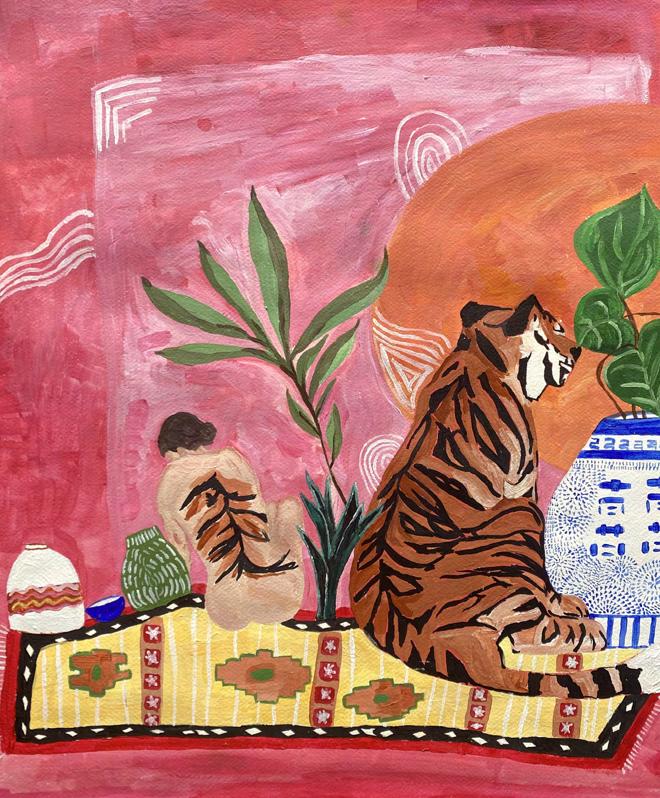
33

34
Vulgar, Emma Crocker and Elspeth Rowell
Emma and Elspeth started making ceramics together in their dusty sharehouse garage at the end of 2020, and have spent time since then working to develop their individual yet complementary styles. They don’t mind being called “vulgar” because they don’t like it when art featuring femininity, queerness, and female sexuality is written off and shielded from the public eye. Elspeth and Emma want to make ceramics more accessible to their local community so that everyone can experience the joys of clay.

35
The Dictionary of Lost Words
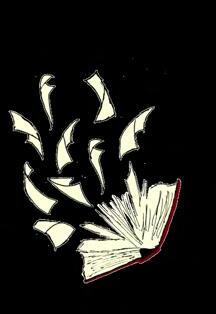

Lily Harrison
In 2021, London-born Australian author Pip Williams penned her most recent novel, The Dictionary of Lost Words. Challenging the authority of words and her own assumptions, Williams explores her realisation that definitions—as contained in the Oxford English Dictionary —are largely based on their use in books written by men, and questions the men who decided which words would be included in the dictionary. From this concern for what is missing, and for those words relating to women’s experiences, unfurls a tender, honest, and deeply moving celebration of women, words, and the power of language to shape our lives and determine how we feel.
Set in Oxford at the height of the suffragette movement and with World War I looming on the horizon, Williams reimagines the true story of the Oxford English Dictionary’s beginnings through the eyes of the fictional daughter of a man working on its compilation—Esme. Sitting unseen and unheard beneath the dictionary sorting table in the Scriptorium where the men work, Esme picks up the slip of paper on which the word “Bondmaid” is written and pockets it for safekeeping. Esme, the heart of this story, is intelligent, ambitiously curious, and authentically fallible. As she grows, she learns that some words—and experiences—are deemed more important than others, and takes it upon herself to rescue the words that have been mislaid or discarded by the dictionary men: women’s words.
It is when she learns the word “bondmaid” belongs to her dearest confidant, Lizzie, that Esme realises the true power of language: “Words define us, they explain us, and, on occasion, they serve to control or isolate us.” Detesting the reality of her friend’s experience, Esme grapples with questions of whether
some words are better forgotten, but soon learns bondmaids will exist whether their existence is recorded in the dictionary or not. So forms the catalyst for a burning need to uncover what other experiences will prevail even if not recorded—what stories should be given voice. With these, and with the words she hears at the market or the pub or from the speeches of suffragettes, she compiles The Dictionary of Lost Words. Her life’s work, the dictionary represents Esme’s labours to understand her own experiences—a legacy.
Words become the central feature of Esme’s life. As she grows into working on the dictionary herself, the library books and scriptures in which definitions are found become her salve. In the secret spaces where women meet and in the streets where women march, words become charged with meaning: “Some words are more than letters on a page, don't you think? They have shape and texture. They are like bullets, full of energy, and when you give one breath you can feel its sharp edge against your lip.” The meanings of words become tools to redefine the parameters of women's experiences.
In Esme, I found visceral, poignant truths about a young woman’s experience of growing and learning and failing. Motherless, she finds comfort and companionship in the women around her: Lizzie, a maid in the house where the dictionary men work; Mabel, an old woman hawking scrap trinkets in the marketplace; Tilda Taylor, a suffragette; and Ditte, her father’s oldest friend and Esme’s assumed aunt. From the very first page, The Dictionary of Lost Words felt like an embrace, a welcoming to the sisterhood—sekura, meaning “safe”: the Esperanto word Esme uses to soothe a shell-shocked soldier as she holds him in her arms.
Reading with irrepressible verve during the uncertainty of lockdown, I came to take comfort in the love-swaddled advice of Ditte’s letters, and in the solitary, diligent work of the Scriptorium. I felt the yearning for and joy of the relationships between friends and daughters and mothers—our mothers, and the women who mother us. I was filled with renewed appreciation for our stories. Williams’ book is both a quest to understand the words and meanings of our lives, and a tender ode to the dreams and sacrifices of the women whose lives are fused into each page.
Williams’ writing evokes all the flushfaced, heart-fluttering wonder of first love, the full-throated heartache of “the morbs” (defined by Mabel as a sadness that comes and goes: “‘I reckon it derives from grief,’ said Mabel. ‘From what we’ve lost and what we’ve never ‘ad and never will…a woman’s lot....’”), and the ever-wandering inquisitiveness of learning, living, and becoming. Her words remind us we are tied together across time and space by our experiences—that it is okay, at times, to ache. I am soothed by Ditte’s wisdom of our pursuit of change: “it will be a long game. Play a position you are good at, and let others play theirs.” When Esme realises words often describe women’s functions in relation to others—wife, mother, whore—she starts to see herself as a word that doesn’t quite fit, written on the wrong slip. As she comes to learn how to define her own story, Ditte’s words remind us all that though we are not without flaws and contradictions, we are brimming with the capacity for joy. I closed this book with renewed gratitude for where I stand today and for all the women who have walked before me: “women bonded by a shared political goal; comrades. ‘Sisters. Thank you for joining the fight …’”
36
"… there was a fine crack through the middle of me, and I suspected it might never mend. I remembered Lizzie apologising to Mrs Lloyd the first time she stayed to chat, for the chip in the cup. ‘A chip doesn't stop it from holding tea,’ Mrs Lloyd had said …"
The Dolmen Georgia Winzenberg
The port watched its ships become cloaked in a cloudy haze as they cut the water. My ferry was set to leave at 5am. I checked my phone again to look at the last text my mum had sent me.
Wednesday, 13 April, 2:54pm Hopefully the jumper will be ready in time for Christmas!
Sunday, 1:08pm Mum! Haven’t spoken in a while, let me know how you’re going x
Work was piling up on my desk and I’d completely forgotten to respond.
Fluorescent lights flickered in the terminal. My £3 packet of crisps caught on the ring for a split second before dropping into the tray of the vending machine; I could feel the life being sucked out of me as I left the gate and boarded the ferry. I ate my breakfast up on deck. The sun had risen by the time we reached land.
Dublin’s bustling horizon turned to rolling green hills as I drove cross country. I approached a small cottage nestled in the nape of the knoll. It had just been my mother and I living there for the majority of my childhood. The land around that place was pretty sparce except for this five-foot dolmen I passed every day on my way to school. A neolithic marvel. On a clear day, you could see it from
the south window of the living room. Stacked arches of heavy stone arranged like the flying buttresses of a church.
Mum used to call it the giant’s dining table, and warned me to never get too close because he prefers to eat alone. I’d nervously imagine him sitting there at sunset, knife and fork in hand, a starved look in his eyes. Mum’s stories of enchantment followed me everywhere. Along with fairy tales and Faustian deals, this dolmen was the backdrop to my childhood, an overbearing presence in the peripheral of my conscience.
And now about the cauldron sing, Like elves and fairies in a ring, Enchanting all that you put in.




I remember marking that line with neon yellow highlighter in my libraryborrowed copy of Macbeth. I didn’t think it was going to see the light of day after the essay was due, but somehow, it stuck with me. I guess it was an easy enough rhyme to remember. No other characters spoke in such heavy rhyme except the witches. I took the play home to Mum, and she couldn’t stop herself from singing that line as her own enchanting stew bubbled away on the stove. I sat listening, dangling my legs off the kitchen bench, and suddenly their words didn’t sound so eerie anymore.
The wind had picked up; I took another layer out of my car and stood at a distance from the house as I checked my voicemails. The Garda í would arrive later that morning.
* * *
“You were a hard one to reach, Sophie,” said the chief inspector of the Garda í. I caught him eyeing my heel as it sunk slowly into the grass.
“Wish I wasn’t coming back this way,” I mumbled. “I’ve been living in London for the last year.”
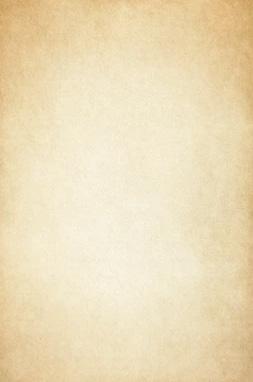
It was the easy response. He scribbled something on his notepad as I spoke.
“Definitely somewhere with a little more hustle and bustle than here,” the deputy piped up. “Easy to lose track of time once London calls, eh?” He imitated an English accent.
“Yeah, something like that.” I thought about the months leading up to when I’d left. Mum’s sunken face, the pallor of her skin, spending her days in bed. I didn’t want them to think that my mum was the reason I left, that I was the one who abandoned her.
“Your mother’s knitting group contacted us last week after she hadn’t turned up to a few gatherings—said it was unlike her not to call,” the chief inspector jumped in. “They asked us to pass on one of her projects.”
I took the fragmented jumper sleeve, held together by a single needle.
I was almost certain it was from Carol, the nurse. She’d suggested that Mum join her knitting group after her discharge from hospital. I remember taking down her number on a Post-it before I drove Mum home. I felt as if the veil was slowly lifting; it was uncomfortable,
knowing that I, as her daughter, was the last person to be contacted.
She couldn’t have strayed too far; her car was still in the driveway. She would’ve had miles to walk before reaching the main road to town. That was all the Garda í had concluded. I trailed behind as two Garda í and two dogs checked the property and combed through the fields. By then it was early afternoon; the same t-shirt I’d worn from the night before was starting to stink. I shovelled down half a sandwich I’d bought from the service station, and we headed uphill towards the dolmen. There it was, perched on the hill, almost piercing the sinking clouds. The giant’s dining table.
“Now that’s a rock!” the deputy said in awe. His gaze followed me as I bent down by the base of the dolmen. “I lived on the outskirts of town too as a boy, and every two years or so, this magnificent ring of mushrooms would appear in exactly the same place. We’d all trudge through the woods to have a look.” He pointed to the base of the rock where I crouched. “A shame one of the mushrooms has tipped over. Would’ve been a perfect circle, just like the one I saw as a young lad. Wouldn’t ever touch ‘em though—beautiful, yes, but nasty little pockets of poison.”



“Like a fairy ring,” I added, gripped by more recollections of Mum.
As August settled in, we would take our baskets and go mushroom foraging. I remember trudging alongside the mossy glen when Mum’s arm swung out in front of me. “Be careful,” Mum said. “Mushrooms are not always what they seem. Some might look delicious enough to eat, but could kill you at the drop of a hat. It’s the way the forest smells after it rains—that’s how you know you’ve found a good cluster.”
It was ceps galore, and sometimes I even found a few chanterelles, bundled together like golden flowers in my hand. Mum would throw them into a stew for dinner and sing as she stirred the pot. She’d ship me off to school with the leftovers; kids made fun of the pungent smell while calling them slimy stinky slugs, but I would retort by claiming they were poisonous, and then I told them to watch out because only I had the antidote.
“Is this something we might look into?” I pointed at the ring.
“I wouldn’t think so. A superstition—but I’ll write a note,” said the chief inspector.
Just like the deputy’s ring, this one popped up every few years, and always in the same spot by the dolmen. Normally they looked fuller, but it was coming to the end of the season; they were beginning to sink back into the ground. And to think, I’d always assumed it would be me who’d get swept up in a fairy tale.
* * *
“Don’t even think about breaking the circle.”
I’d listen to Mum with wide, concerned eyes. “Why?”
“The fairies are spiteful, and not very forgiving. They’re watching from the dolmen and if you break their ring, they’ll come out and snatch you! Leaving what’s called a changeling behind. Changelings will look just like you, but there’s an evil spirit behind those innocent little eyes—that’s how they trick you!”
That night, I remember waking up in a swell of sweat and panic. I dreamt that the fairies had taken me, rain pouring down as they danced around me in a dripping ring through the night.

glanced at the dot points across its halffilled page. “We’re looking into both voluntary disappearance and foul play.”
Our house was now sealed with yellow tape. The sun sank further and further behind the hill. My mouth trembled as I opened it to speak. Instead, I just stood there.
The Garda í waved goodbye, then drove off. I was about to head to my car when I looked up at the dolmen one last time. It had certainly weathered over the years. I remembered that Yeats poem about fairies we’d studied in school:
Come away, O human child! To the waters and the wild With a faery, hand in hand, For the world’s more full of weeping than you can understand.
I scrunched my eyes into a squint. Whatever giant’s table or fairy home that once stood there now had my brain turning to mush. I squinted again. Perhaps Mum would be there, crouched underneath the arch, swept up in her own fairy tale.
The Garda equipment and finalising their notes on my statement.
“Now, Sophie, I’m sure you can gather that these sorts of investigations take time,” said the chief inspector.
The deputy stood behind him, nodding profusely. “It’s just the two of us on the case, and we’ll have limited resources until we acquire further information,” he added.
“We’ll file a missing person’s report, but be prepared for a plateau,” the chief inspector said. He held his notepad at his side, and I
Section Design:
 Suhani Kapadia
Suhani Kapadia
Faith Freshwater
Hengjia Liu
Alisha Nagle Harriet Sherlock Cinnamone Winchester Christie Winn

hy p n g a o g i a
The perceptual experience of the transitional state from wakefulness to sleep.
“Living, being in the world, was a much greater and stranger thing than she had ever dreamed.”
— Ursula K. Le Guin
Watercolour Anonymous



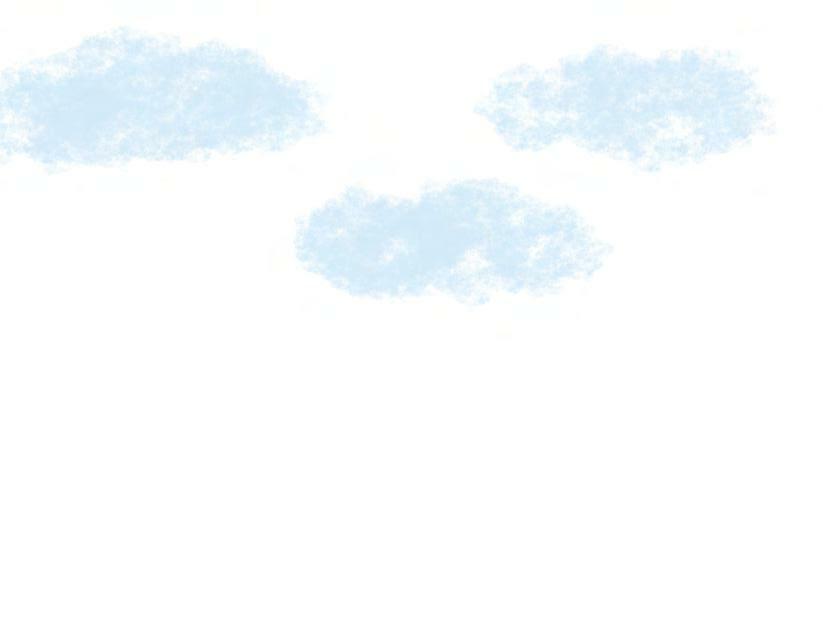
We dream—it is good we are dreaming— It would hurt us—were we awake— But since it is playing—kill us, And we are playing—shriek—
— Emily Dickinson
I used to think it was normal to always know you were dreaming. When I was little, about seven, I would have this frequent, incessant nightmare. I was trapped in a room where the entire floor was a pool, vast like the ocean. No doors. No windows. No lights. A deep, dark abyss. I could feel the wetness on my skin. I would peer down and see a fish, which always seemed so minuscule from where I was, near the surface. But as it got closer, I realised it was a monstrous whale. It would swim up, faster and faster, leap out of the water, and crash down.
As a quiet child, often socially isolated, I spent a lot of time in my head. I would often space out in class. I’d look up and realise the whole lesson had gone by, then stare back down at my blank, crispwhite page. What could I fill it with? I liked to write stories about people who didn’t exist and imagine fantastical worlds. I also liked to draw and paint— except with watercolour. The ink bled through the page, outside the lines I envisioned. It never did what I wanted; I always had to start all over again.

I went to a religious school that taught girls to sit still and shamed those who didn’t. Often, I was ordered to sit in the corner of the room if I giggled, or if a bird had caught my attention outside. Sometimes I was grabbed by the forearm and dragged—to the point where my short legs struggled to keep up—to the head of junior school’s office. She peered down at me from behind her spectacles, looked back at her documents, and asked, “What did you do wrong?”, sowing confusion and self-doubt in my mind. What had I done wrong? A girl told me her mum said I was the “menace of the year”. My reputation made me feel hopeless.
One day while I was drawing, I noticed the movement of my hand with the stroke of every line. I controlled what appeared on the paper. The shapes, the colours; everything. I thought: If I’m aware of my own consciousness while dreaming, what if I can gain control of it? The next time I had my nightmare, I decided the walls were made of glass. The room became bright. The following night, when the whale crashed into the pool, I made the water crawl gently down the sides of the walls so it wouldn’t
touch me. On the third night, I made the whale disappear—then, the dream stopped.
The more I practiced controlling my dreams, the more omnipotent I became. No parochial people telling me: “Don’t do that”, or: “That’s not proper”; in my dreams, I was God. If I didn’t want to be ice skating atop a mountain, isolated in the middle of the sea, I’d fly down and land on fresh grass scattered with daffodils. If I was locked out of a room in the dark, I’d make a door and let myself in. If someone wasn’t listening to me, I’d make them listen. No longer subdued by the painful reality of the waking world, where I was limited by gravity, the law of conservation of mass, and people telling me what I could and couldn’t say; what I could and couldn’t do. Here, the colour never bled outside the lines—I was in complete control.
In the real world, my confidence had plummeted. I started going to speech therapy because of my hearing issues, which explained why I found it hard to follow instructions. They also made it difficult for my peers to understand me. I struggled to make new friends, and preferred to be alone. I shut myself off from reality due to the shame I felt. In my dreams, I could escape.
Over time, my dreams about ordinary activities became so vivid, they began to bleed into my reality, like watercolours. The sweet taste of a tropical icy pole that didn’t exist. The grainy sand and the wetness of the ocean between my toes at a place I’d never been. An important discussion with someone I loved that never happened. What I’d done in my dreams and in real life sometimes blurred. The colours leaked outside the lines. For a time, lucid dreaming was a space where I could feel in control—now, it had become the opposite once more.
Instead of sinking further into despair, I thought about what to do with this feeling of dissociation. If I’m aware of my own consciousness, what if I can use it to face reality? The next time I dreamed,
I began to practise standing up to people who hurt me. I practised public speaking, which I normally would have avoided. Making friends. Opening up to people. Setting boundaries with those
who trampled on me. And then, slowly, I began to do the same in the real world.
I don’t mind watercolour now. How it bleeds outside the lines. Something I’ve learned from lucid dreaming is that I can’t be my true self only in dreams, and never in the real world. At some point, I have to wake up. My dreams helped me heal—now, I embrace their chaos and mystery, and likewise, the chaos of reality.
In those moments when I was made to feel worthless, reality was beyond my control. Others’ mistreatment of me was never my fault. My creativity, energy, and liveliness—things I was once made to think were “wrong” or changeable— were actually my strengths. Instead of facing those instances when we “shriek” or encounter things that might “kill us”, I would hide myself in my dreams. But in reality, there is always going to be the erratic chaos of watercolour. I can’t make everything that’s scary disappear. We can’t control how we’re treated; that should not be our burden. What’s important is that we focus on what we can control: our strengths, and how we treat other people. I can add my own vibrant colour to the world—and that is enough.
41
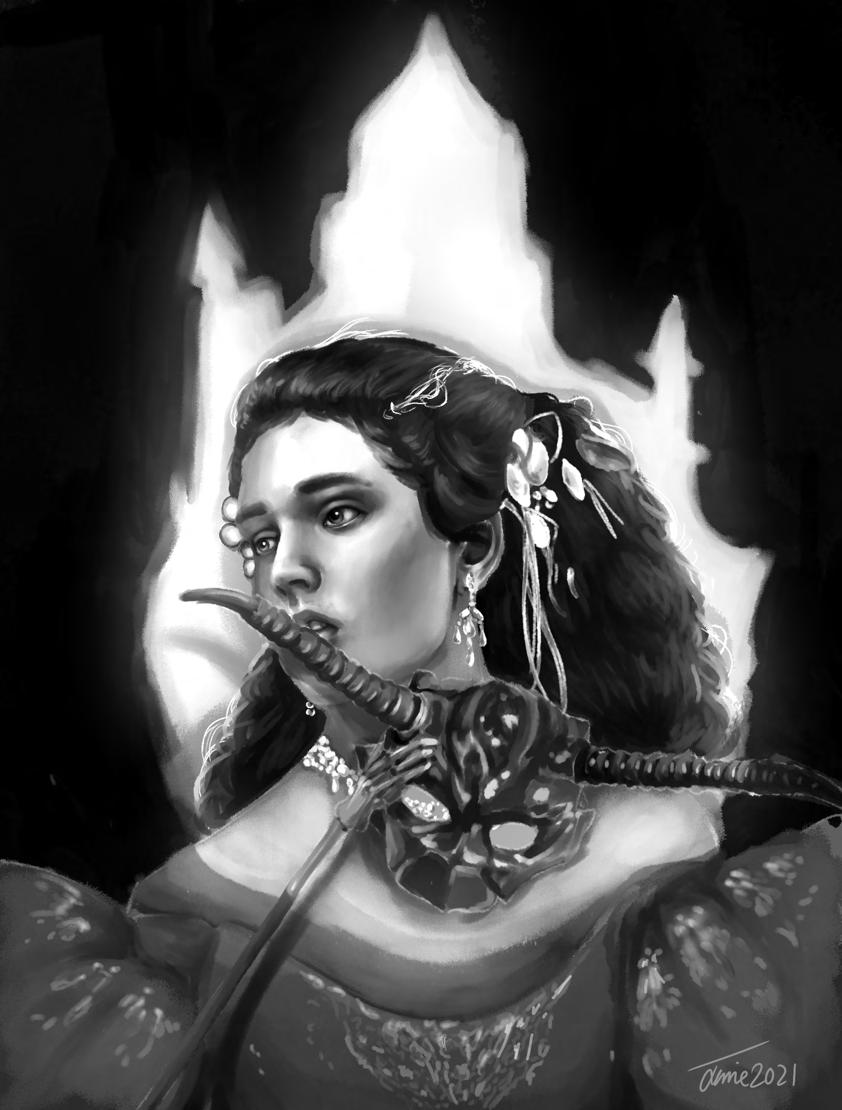
42
Sarah, Jamie Cardillo (2021)



A Recurring Dream
He finally caught me I’ll be put in the stew! I hear them, I hear them In the wicked tower, dreaming Dreading what I cannot see The wizard in his castle, thunder He sends Beastly to uncage me
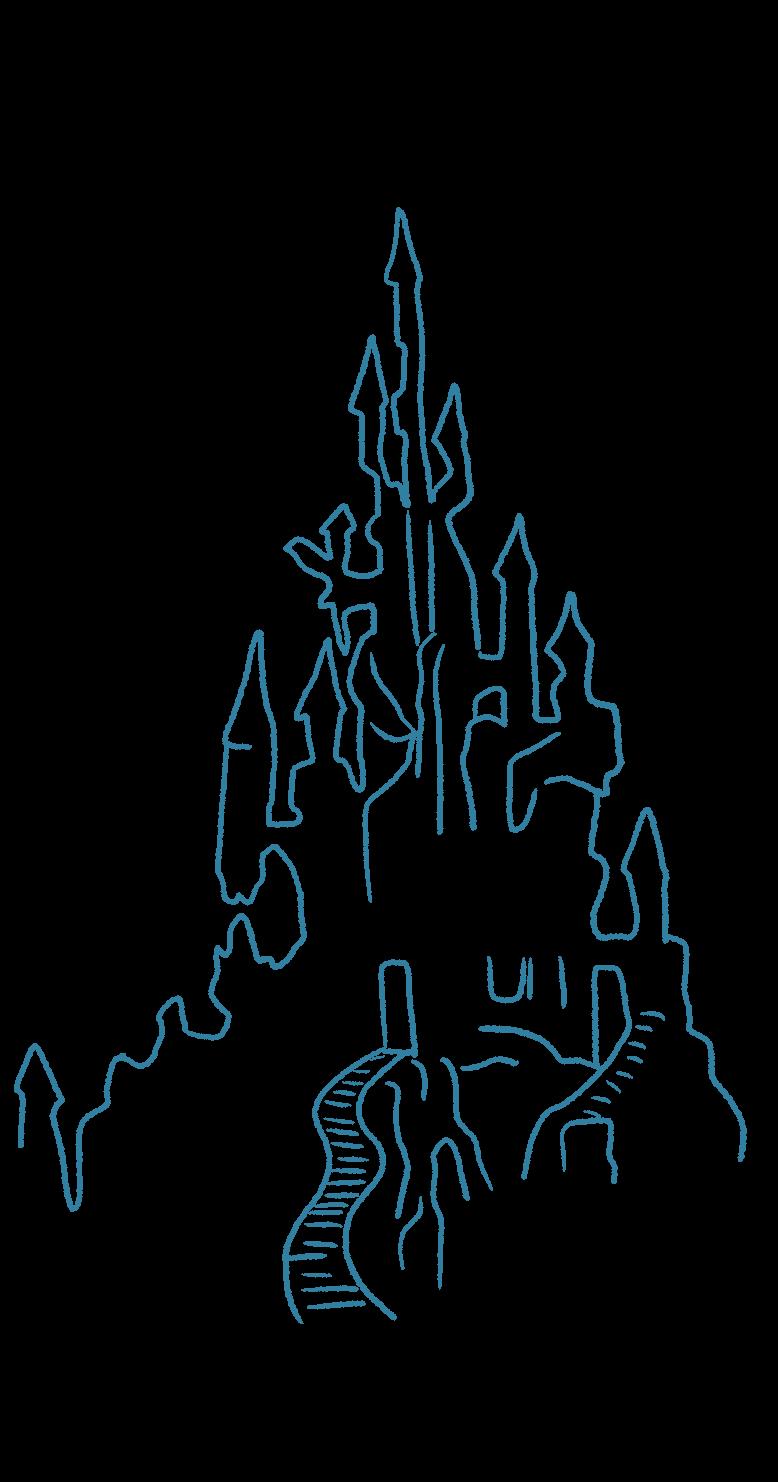
Faster, faster Don’t forsake me!
There’s little Beastly with eyes gleaming Laughter, laughter
Rough brown fur and button tail Pointed ears and sharpened teeth There’s Beastly in the gutter, grinning Between his fangs a rusted key
(If I die, then it’s all over For all time and not just for me So he says he’ll set me free)
Down the dreaded corridor The floor is sticking to our feet Soon the hooded man he finds us Uh oh! Uh oh!
His wraiths twist and swirl like demons Red eyes spiral through the dark There again his evil laughter Winged things hide up in the rafters Flicks his sharp nail, casts a spell Beastly’s cleverer than he seems Whoops! There slips a magic vial Cracked and spilling on the floor Somehow we sneak away again Through blurry plumes of fairy dust
Small claws clasped in hand, I flee Down a trapdoor in the shadows And I see the glint of freedom A patch of light beams through the wall
The little beast is not yet free But do not fret, for he is happy Pats my arm assuredly Goodbye! Goodbye! Come next month for mollusk tea!
But then the master bellows his name:
BEEEEEASTLYYYYY
His teeth chatter— he has second thoughts Catches my dress— Perhaps you’ll play again next week? And bring a nice fishbone? I nod and shake his hand I smile, head upon the pillow
44
MEDEA, the Body
India Kazakoff
I
CW: Murder, gore.
1.
I am myself. MEDEA. Colchis burned into the space behind my eyes, waves crash like acid within golden sheep’s bellies. My world is sticky and slow, maybe honey but maybe blood as well. HECATE LIVES IN MY SHADOW, O MAIDEN OF MAGIC RELEASE ME FROM MY CRAWLING BRAIN. She crawls, slimy, through the back doors of my heart. I sometimes cannot remember where my heart is in relation to my fingers, clasped around the coldness of my breasts. I exist in a vacuum. I PRY OPEN MY OWN CORPSE AND LOOK INSIDE FOR ANY SIGN OF LIFE.

AM MYSELF
Standing on the edge of my land as though it is the end of the world which it is. The ocean is ahead and it is so vast AND I AM SO SMALL. An exportation business exporting gold, timber, my body, iron, my body, my body, MY BODY. I am a woman first and foremost, sew shut my mouth and fuse my birth
canal so my daughters can never be like me. Not like me and not like this place I am from. Enter. JASON.
2. Bottle up my anger and shove it down my throat. He needs my help AND NO ONE HAS EVER NEEDED ME. I am warm and comforting and my patron saint is Hecate and she is capable of both good and evil. I am a creature of the night and she is of me I AM CAPABLE OF GOOD. He needs me and deserves it. My home is of gold but it has never shined as he had when his eyes were turned upon me. And he wanted gold, I should’ve recognised the FOLLY OF MEN AND THEIR SICKENING GREED. A good man, a good man, a deserving man who does nothing for himself so I will do it for him instead.
JASON
Do you not love me? Why will you not help me?
BECAUSE I DO NOT TRUST MEN LIKE YOU. Promise to marry me. I will give you whatever you wish.
AND I DID.
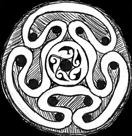

HECATE GUIDE ME IN MY MORTAL

45
LUNACY AND GIVE ME ANSWERS TO MY POTENT QUESTIONS. BESTOW UPON ME A PROTECTION, AN INTELLIGENCE, AN UNQUIET KNOWLEDGE SO THAT I MAY BE GOOD IN YOUR IMAGE. I AM CAPABLE OF GOOD AND EVIL. LET ME BE GOOD.
I have been entrusted with his matrimony and I will protect him and love him and I left my home for him I ended the world for him. The end of this land is the edge of my world but he is my world and the end is further away. His wife his wife priestess of Hecate but mostly his wife. JASON with his chest slit open and ribs hanging out, the bones are clean of flesh that I licked off long ago.
3.
Children children children fuse my womb shut it is all I deserve to have brought children into this world with me. Their crying IT INTERRUPTS THE GODDESS FORGIVE ME. Tiny hands tiny toes tiny eyes I THOUGHT I WAS SMALL.
JASON with blood in his eyes: Do you not love our children?
ME WITH A BOTTLE IN MY THROAT: I love you.
Unceasing, immortal, my nights are long and the nights are for the goddess, not for them. But he is here and it is alright. UNTIL HE IS NOT BECAUSE HE IS LIKE OTHER MEN. Creusa, a princess, a vile, bitter, sycophantic woman I HATE HER but he loves her and she is not me. He is gone, in the night and the nights are for the goddess. ENTER. CREUSA. ENTER. RAGE. ENTER. POISON AND MAGIC AND HECATE IS CAPABLE OF GOOD AND EVIL AND I AM IN THE IMAGE OF THE GODDESS.
ME, abandoned: I HAVE BEEN ABANDONED.
JASON, his head crushed by a ship’s beam: I have abandoned you.
COME TO ME HECATE WITH YOUR VENOM AND VEHEMENCE AND DELIVER ME FROM MY MORTAL LUNACY. MOONS AND DOORWAYS AND WITCHCRAFT AND GHOSTS GODDESS OF THE NIGHT DELIVER ME FROM MY PAIN. YOU ARE ABOVE PAIN AND PERHAPS ABOVE
GOOD AND EVIL BUT MAYBE YOU AREN’T ABOVE ANGER AND RAGE. I DEDICATE IT TO YOU. I WAS MEDEA ONCE AND I WILL BE AGAIN.
Once again BANISHED FROM THE LANDS I CALL MY HOME and at no fault of my own. I HAVE TO HURT HIM AND I DO NOT KNOW HOW TO HURT SOMETHING I LOVE. Maybe love and anger are the same or at least easy to flick between because they are extremes of my mortal coil. I tremble with a feeling and I do not know if it is RAGE OR LOVE. For a woman they are the same.
FUSE ME SHUT AND LET ME SWALLOW THE KEYS. Creusa you make me vomit and I will extract your lungs to help myself finally breathe.
JASON, stinking of rotten fish: I have abandoned you. Your sacrifice is worthless to me.
4.
A left-behind woman with a life she never wanted. Of course she becomes bitter, watching others succeed in a life she should’ve had. If only things could go back to the way she wanted them to.
YOU KNOW THIS STORY.
She is a priestess. She prays to a goddess you can only hope to dream about. A being of NIGHT, of MAGIC, of BALANCE. She can be good or evil. She can embody what she wishes.
Children, brainstems shucked out their ears: Mother, what are you doing?
She knows the earth, the way it smells, and if people would leave her alone then that could be all she knows. But they couldn’t and she becomes too embroiled in her own humanity. SHE HAS NOT FORGOTTEN THE DEEP ROOTS WITHIN THE GROUND WHERE SHE LAID HER SOUL TO REST. She calls upon her goddess for help and receives an echo of an unfeeling reply.
BRING FORTH AN ACCURSED ROBE GARNISHED WITH POISON, SNAKE’S BLOOD, AND SYMBOLS OF UNDERWORLDLY GODS. THEY ARE DEATH AND YOU WILL BE SOON.

Enter. Creusa. Her screams remind me
of my children and her skin stinks like rubber burning in the sun. She is alight, like JASON WHEN I SAW HIM FIRST. He watches her die and he can do nothing about it. Waves crashing two feet away but she cannot move because my goddess forbids it and she will die, burning, a stone’s throw from Poseidon’s protection.
It is not enough. YOU KNOW THIS STORY.
JASON, legless with large teeth: Is this not enough?
It is not.
I HOLD MY CHILDREN BY THE THROATS
THEIR BRAINS SPILL OUT INTO MY BLOODIED HANDS HUNCHBACKED BABES SEWN INTO MY THIGHS OUT OUT OUT OUT LET THEM OUT GET THEM OUT LET OUT THEIR BLOOD A KNIFE TO THEIR THROATS LET THEIR BLOOD GET FREE
Jason sobs. I am triumphant. I am covered in blood. I flee overseas and away but no matter how many times I wash my hands I feel like they are unclean, always, the stitches on my legs never heal and they smell like burning flesh. What feels more satisfying than starting anew in a new land? I shed my skin and slither into the life of a new woman whose hands are never clean and who worships the goddess of night creatures.
46
Identity Idiosyncrasies
Faith Freshwater
About the Artist
Faith is a lifelong artist who is currently studying a Bachelor of Visual Arts at the ANU. Her artistic practice is grounded in both traditional and digital drawing and painting, but she has recently branched out into printmaking. Faith has always been inspired by media and pop culture, but they also have a strong interest in art history, and their current work draws predominantly from postmodernism and activist movements. Their portfolio demonstrates a strong love of colour and shape, and she is always striving to have fun with art and try something new.
Artist’s Statement
This work draws together ideas of gender and the human form. It is a mixed-media painting, using both acrylic and oil paints, and it is composed of found objects: predominantly images from magazines, as well as snippets of other artworks by me and fabric scraps. I was fuelled by a desire to consider masculinity and femininity by pulling apart highly gendered advertising images and breaking them down—lips, an eye, a bow, underwear from a Libra campaign for menstrual products. I was particularly drawn to the androgyny of the figure in the big yellow jacket, and how their gender and the gender of all the other images becomes increasingly obscured by the collage. The media is often inundating us with images trying to sell something by convincing us it will improve our bodies, our beauty, our lives. I repurposed these images to question the limited scope of these messages, and to instead embrace the vast potentiality of people and our bodies.

47
Agitations Josephine Carter
Le poids des pensées. Pourquoi pesez-vous si lourd ? Vous ne cessez jamais. Vous m’inhibez mais vous m’appartenez. Vous m’étouffez mais j’ai besoin de vous. Vous m’encerclez mais je ne veux pas m’enfuir.

Le passage du temps ne peut pas vous ralentir. Vous perdurez. Vous me suivez, Souvent insensées, Troublantes, Douloureuses, Vous vous agitez comme le vent d’une tempête Pour me faire croire qu’il n’y a rien que je puisse vaincre.
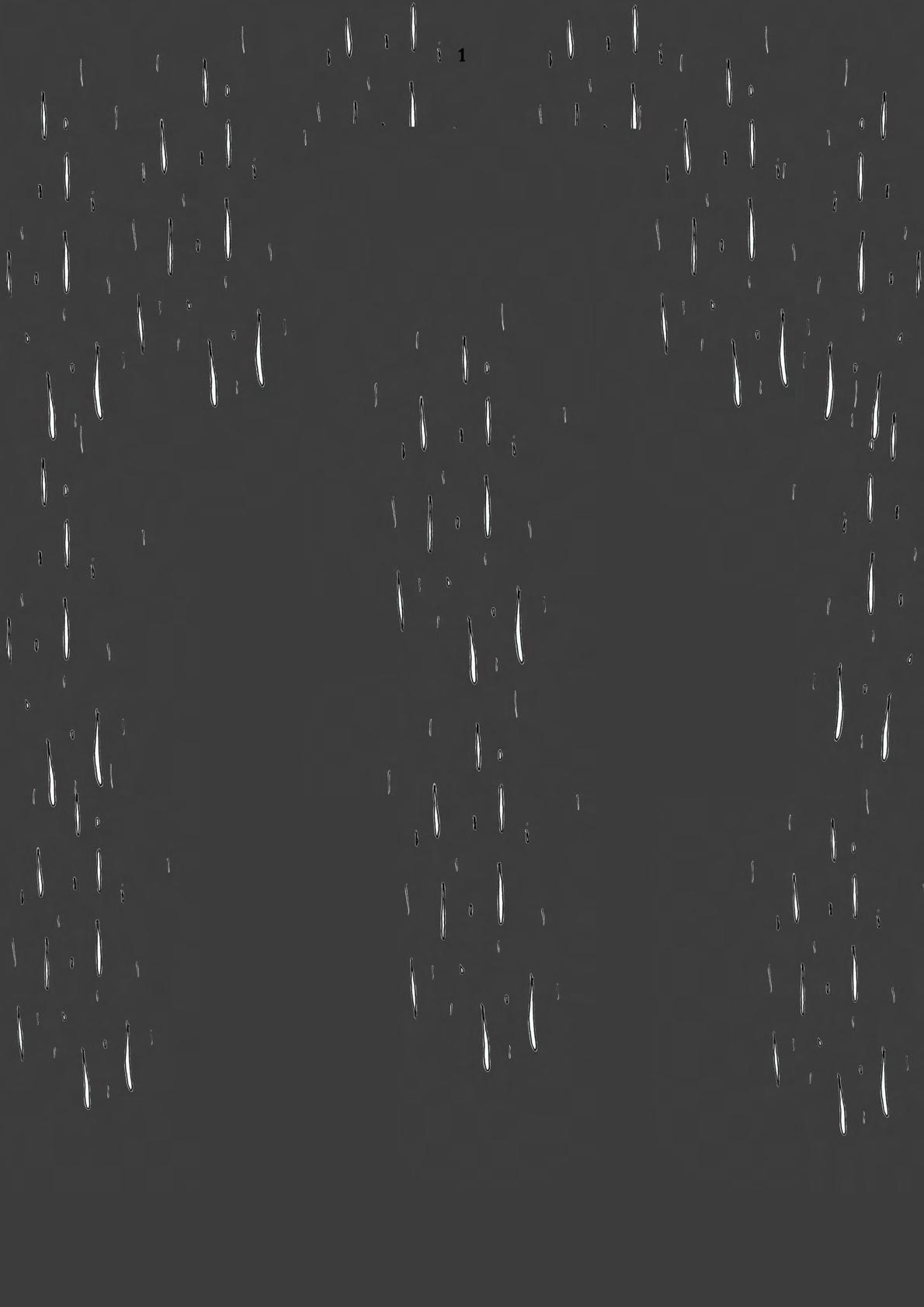
The weight of my thoughts. Why are you so heavy? You refuse to leave me alone. You inhibit me, yet you are mine. You suffocate me, yet I need you. You surround me, yet I will not flee. You are persistent. So determined you must be, That even the passage of time Cannot slow you down. You follow me always, Often irrational, Malicious, Agonising, You shake like the wind in a brooding storm
To make me believe there is nothing I could conquer.
Mystique and Quiet Illusions


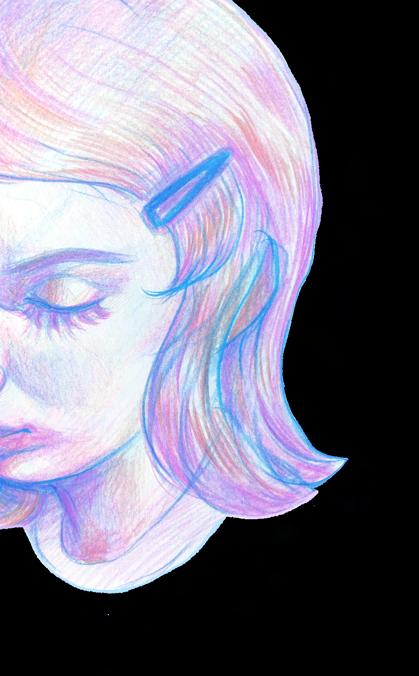
 Olivia Gill
Olivia Gill
In this digital age, a time when everyone shares, shares, and shares, we naturally become curious when someone doesn’t. Being inactive online inadvertently creates, as Virginia Woolf might say, “a room of one’s own”, preventing the rest of us from “filling in the gaps” of someone’s identity based on social media posts. It leaves us wanting more. Who are you? What’s your story? We might revere someone simply because they are shrouded in mystique—they become an object of fascination and intrigue, perceived as immensely private and secretive. Mystique has often been especially admired in women, a cliché that is newly reinforced by social media. Women who flaunt their sexuality, or who are loud and express their views openly online, are commonly perceived as materialistic attention



herself or share as much is likely to be regarded as humble and more interesting. “You’re so mysterious” is used as a compliment. A friend of mine once told me, “I try to be quiet and mysterious, but I just can’t stop talking.” Silence is a virtue—but why?
History has been written by cis, white men. We are used to having our world explained through this gaze. In popular culture, the “feminine” aura is often described as mysterious and incomprehensible. People continue to regurgitate stereotypes like “I’ve never been able to figure her out” and “women are complicated”. Not only does this dehumanise and objectify women, but it demonstrates a continued refusal to empathise with women’s lived experiences; instead, we place the onus upon women—they are the problem. She is a riddle yet to be solved, or too complex to be solved. Misunderstandings are her fault for not catering to his perception of what a woman must be. While the reductive quality of mystique is used to overlook women’s experiences, those who don’t have it are also shamed. You can’t really win.
I’ve been quiet and reclusive for most my life. I’ve held back when asked to speak about myself and share my real needs and desires for fear of judgment. In turn, I’ve watched people fill in the gaps of my story. Men often praised this air of mystery surrounding me. I was unpredictable. “Ah! I told you she’s smart…” a man once said to his friend with a grin, as if he’d just won a bet. It was meant for me to hear; he looked at me as if I was supposed to smile
ever spoken to me before. I didn’t even know their names.
Women with mystique are reduced to a shiny object; their interior world is not worth exploring. Instead, we are subjugated by harmful misperceptions. Society’s tendency to fill in the gaps is evidenced in the existence of archetypes like the Cool Girl—a character used in literature and film. When this trope is evoked, the storyteller is almost always a man, and her characterisation reflects the male
49
protagonist’s expectations and interests. Her sole purpose is to be exactly who he wants her to be—as Gillian Flynn affirms in her novel Gone Girl: “the girl who likes every fucking thing he likes and doesn’t ever complain”. Due to his intellectual laziness and lack of imaginative empathy, the writer fills in the gaps with the traits he wants her to have. He romanticises her. In reality, it’s only a façade.
In light of the entrapment mystique causes, you might be wondering why many women choose to be silent. But I think they have good reason. Decades of research indicate that women are more likely to be interrupted, misheard, or misperceived when they speak. If they are loud, they are accused of sounding shrill and off-putting. If they are assertive, they are too much—but if they remain composed, they are conniving and deceitful. We continue to push this narrative onto politicians, celebrities, and other public figures. Senator Penny Wong was described by a male senator as “hysterical” before he told her to “calm yourself”. Let’s not even start on the misogyny Julia Gillard faced as Prime Minister. Instead of having their arguments challenged, activists like Greta Thunberg are mocked for their age or tone of voice. It’s almost easier to become society’s meek and mild, romanticised version of you.
The vilification women face is at its fiercest online. As Bernardine Evaristo writes in her novel Girl, Woman, Other: “People have to share everything they do these days, from meals, to nights out, to selfies of themselves half naked in a mirror. The borders between public and private are dissolving.” Yet despite these expectations, women who share “too much” are nevertheless shamed or questioned, for example, after posting revealing photos on Instagram. Women Lifestyle YouTubers are initially praised for being funny and relatable, but once their content becomes “TMI”, their audience gets sick of them. In turn, living relatively offline has gained a positive reputation because it implies you don’t need likes and follows to feel adequate. I disagree. In reality, I think that when someone is offline, there is simply a lot less to be judged; offline, the illusory narrative of mystique can continue undisturbed.
The myth of mystique advocates a façade that conceals the parts of


us deemed unworthy or wrong. It conveniently enables others to assign women the traits they want us to have—a manipulative tactic used to force conformity to their idea of the perfect woman, so that our real interests and autonomy can be overlooked. The disconnection from our identities that ensues reminds me of Margaret Atwood’s poem This is a Photograph of Me, in which a woman describes a blurred photograph of the lake where she drowned. The woman outlines everything in the image in detail—except for herself. She then informs the reader that, “if you look long enough”, eventually you will see her submerged beneath the water. We have to take enough care to look past the distortion if we truly want to see a person’s real essence, quietly hidden. Depictions of women are instead often others’ photographs of who they want them to be—not who they actually are. They are an illusion.
As someone who is more private, thinking I sought the attention of no one, I used to feel a certain kind of freedom—to be gazed upon, but not bound by the demands of this gaze. Earlier this year, I was attending a panel on women’s leadership and saw a woman outside the theatre posing for photos. I assumed it was for her Instagram. She was loud and sociable. Her makeup looked perfect. I remember thinking to myself: She must be here for all the wrong reasons were put into groups for feminist consciousness raising. I overheard her voice in the next group. She had immigrated to Australia five years ago. She was the first in her family to attend university. She was studying maths. In that moment, I realised my internalised misogyny had led me to believe that quieter, solitary women are stronger than louder women with a large social media following. What had been done to me, I had just done to her. I saw her as the person I expected her to be, based on readily accessible stereotypes. It was only when she shared details about herself on her own terms, and when I listened and empathised, that I was truly open to seeing her for who she was.
We all have an inclination to fill in the gaps—to paint a picture of who we think someone is based on how we most readily perceive her. But I believe we can choose how we perceive people. Some tell me I’m difficult to read, yet simultaneously deem other women too loud and “over the top” for sharing too much. A woman on social media is typecast and written off as superficial, while a quieter woman with mystique is “unknowable”—consequently, her real needs, opinions, and desires are likewise overlooked. Women continue to face this convenient contradiction in their attempts to be heard. At present, mystique is destructive. We must be willing to give women privacy and not presume their identities. Instead, in our attempts to see women, we need to take care to look longer. Although social media has blurred the line between public and private, we can never truly know someone from a glimpse at a social media post or when walking by them on the street. A person’s identity is none of your business unless they want to share something with you. When women do want to speak, however, we should work towards uplifting and encouraging their voices—to
50
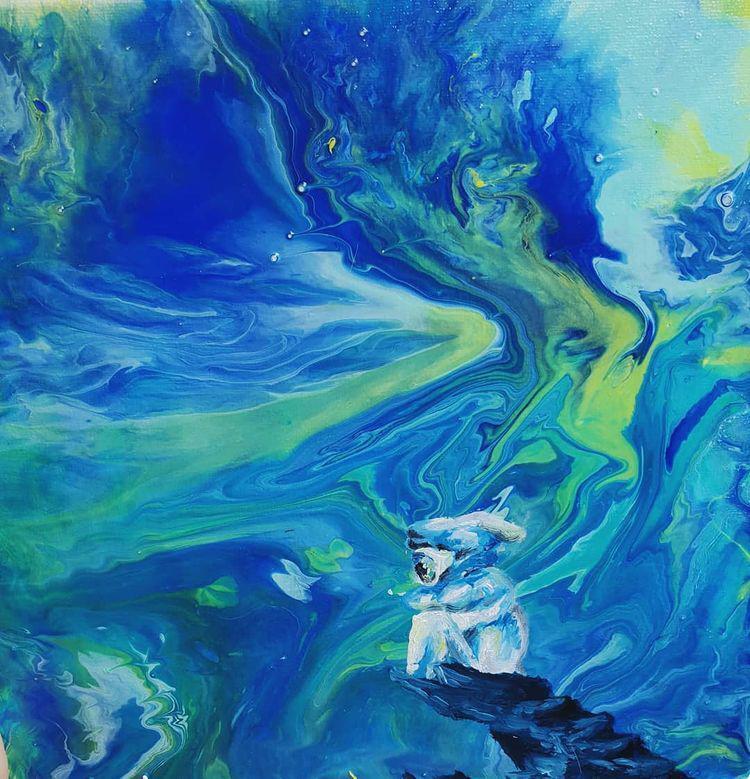
51
Cyclopes Have Feelings Too, Alexandra Enache (2019)
CW: Discussions of bodily autonomy and abortion.

I was one of those peculiar children who spent dewy Saturday mornings sitting on my veranda playing with snails in my clammy hands, moist purple socks covering my scrunched, chilly toes. My first birthday
Invasion Imogen McDonald
was lady beetle themed: the cake, the presents, the decorations. I’ve always wondered if it instilled in me some kind of connection to these tiny animal kingdoms. I stopped playing with snails, however, when I was 12 years old, having watched a news story about a young girl who became paralysed after a snail or two had invaded her brain through her nose. When I think about a snail invading my brain, I feel a shrill, sharp stab. A snail is small and soft; yet even imagining that one was in my brain would lead to some kind of intense, placebo-induced pain. An invasion of any kind would be painstakingly noticeable and all-encompassing—especially an invasion of your brain, right? Anyway, I think I remember reading that girl was dead now.
Unlike snails, ants were never the objects of my fascination. I knew the pain of a green ant bite, I knew how to spot a bull ant, and I had to make an ant farm for a grade one class project, but that was the extent of my ant knowledge. They were too small to properly examine and too small to get my sticky hands on.
My grandmother’s garden was always blooming with Oyster Plants. If I was ever there during a frosty morning, I would tiptoe around whilst turning over the leaves, searching for snails to collect and plop into the empty blue ice cream container I kept in the pantry. I was saving the snails from the perpetual poisoning my grandfather performed to save his beloved garden from nasty little snail bites. This was, of course, before I was horrified to learn of their ability to invade the part of my body that feels most mine: my brain.
Ants are surprisingly similar to human beings. The system of the ant colony is the closest example found
in nature to the structure of a human society, including features of complex communication and problemsolving strategies. Not only similar to human society, an ant colony can also be likened to the human body itself, governed by similar rules and organisms with specialised roles.
I often wonder what those snails were thinking about during their invasion of that poor girl’s brain. Did they know they were entering the most mysterious and complex network known within human anatomy? Did they believe they were simply nestling into a moist cavity underground? Did they have no clue about the detrimental damage they were about to execute? Or did they have every idea of what they were doing, sharing the selfishness of humans?
Each ant colony is comprised of castes—colony workers who differ in physical form and complete differing jobs—similar to the differing roles of human organs. Some ants gather blades of grass and give them to other castes who eat and digest the grass, like the digestive system of the human body. Some ants perform their jobs deep within the colonies, delivering messages and food—a role similar to that of the circulatory and nervous systems—and communicating with each other by releasing odours, like how cells communicate through the release of hormones.
You see, I picture the snail invasion as painful, but what I’m coming to realise as I grow older is that invasions can be subtle. Often, they go unnoticed to the extent where an invasion is no longer even recognised as an invasion; rather, it is justified as the natural way of things. When I picture the woman’s body and really dissect what I’m seeing, I uncover the gut-wrenching truth that this body
52
is so often a conglomeration of invasions. Invasions pertaining to how different body parts are perceived—sexualised (larger boobs), disregarded (reproductive organs with endometriosis), deemed disgusting (vulvas with pubic hair), or autonomy lacking (abortion accessibility). Without invasion, what would a woman’s body even stand for—what would it mean?
I recently learnt about Ophiocordyceps unilateralis: more commonly known as the zombie-ant fungus. It targets the Carpenter Ant. Once the fungus has entered a Carpenter Ant, the ant cannot tell. It has no way of ever knowing it had an entire being outside the fungus invasion; this is who it is now, and as far as it is concerned, this is who it always was.
Farida D, a gender researcher and poet, wrote: “Patriarchy teaches us that a woman’s value is in her body- but then it controls, regulates, degrades, abuses, uses and exploits women’s bodies. Do you see? Patriarchy teaches us that a woman’s value is in her body- but then a woman’s body has no value.” I think this contradictory perception of the woman’s body and its value, or lack thereof, largely comes down to a mistranslation demonstrated by Dr Julia Kristeva, whose research shows that one of the ultimate symbols of “purity”—the Virgin Mary—was likely not a virgin. The “Virgin Mary” was a mistranslation of an ancient Semitic word for “unmarried young woman”, one which “erases evidence of her bodily joy and sensual desires and subsumes it under the sign of the male-controlled ‘virgin.’” This mistranslation, in my opinion, has oftentimes accentuated the unfortunate association of sexuality with impurity, and therefore exacerbated the narrow lens through which the woman’s body is viewed.
The zombie-ant fungus infects an ant’s body and then begins depleting the ant of its nutrients, taking over its mind and bodily control. Within days, it has forced the ant to leave its nest and ascend a plant stem where it eventually reaches a height of 25 centimetres—a location with the ideal temperature for the fungus to thrive. The ant is glued to the plant stem, and a stalk then bulges through the ant’s head.
Historian Dr Fern Riddell writes that throughout history, we have either idolised our genitals, or demonised and sanitised them, and this pattern has become all-consuming. Celebration of genitalia was once depicted through vulva art upon cave walls, while sanitisation today manifests in anything from floral-scented vagina creams to labiaplasty surgeries. This demonisation dates far back, such as in the symbolism of the Sheela-na-gigs found in many centuries-old Catholic churches in Europe; unsettling women with their vaginas depicted as gaping voids, thought to have been used to scare away the devil. Nowadays, a vulva that is anything but a cleanlyshaven neat little slit between the legs is deemed terrifying.
From the height of the stalk, fungal spores pour down—infecting younger ants and zombifying them, too. The ant’s muscles are eventually completely controlled by the fungus; however, it still resembles an ant, aside from the stalk bulging from the head.

Recently, we have plainly witnessed the abhorrent systems of invasion that restrict people from accessing safe abortions. In her New Yorker article “Is Abortion Sacred?”, Jia Tolentino writes: “We are locked into the destruction of the world that birthed all of us; we turn our attention, now, to the worlds—the wombs—we think we can still control.” Control, command, constrain. The distortion of science and health with power, infecting others with misinformation; thus, the ability to invade. As a puppeteer controls a doll.
Eventually, the cells of the fungus connect and communicate and share nutrients with each other. On the outside, it still looks like an ant, and you would therefore assume it maintains the inner workings of an ant. However, the inside is a completely different being. As a puppeteer controls a doll.
53
Study Partners for Sale
Anna-Marieke Lechner-Scott
StudyTube is weird. I jumped in, expecting Lo-Fi music and aesthetic bullet journaling tips. In horror, I travelled down a rabbit hole of self-help channels that finally led me to Jordan Peterson’s top tips on being a far-right wanker. I won’t lie, I fucking hate selfhelp, and StudyTube is no exception. On one end, it’s dominated by selfimportant men, like Jack Ma, Elon Musk, Richard Branson, and other ridiculous billionaires who think that because they have a big number to their names, they have “won” the dogfight of success. On the other end, dripping-with-nostalgia clean girls present a stylised, perfect aesthetic. Between these extremes lie a plethora of creators, all of whom present a similar message: “This video will change your life.”
I struggle to come up with a definition for StudyTube. Five years ago, the StudyTube genre of online content was mainly notebook recommendations and tips on how to make your dorm room look like an early 2010s Tumblr post. Now, StudyTube has developed into a fully-fledged ecosystem of travel vlogs; humble bragging about getting into “OxBridge” or Harvard; day in the life vlogs; and long-form video essays about anything from racism in society to stock market investment advice. It presents a life that is better than yours, no matter how privileged you may be. Video titles like “MY 6AM STUDY MORNING ROUTINE AT UNIVERSITY” present a desirable and peaceful university life, more insidiously romanticised than anything a marketing department could come up with.
StudyTube is like a new version of reality TV, except it’s not fun. Instead of a
hyped-up, larger-than-life spectacle, it presents a Lofi, romanticised student life. You know the vibe: bumps and crackles of a record playing non-penetrative hiphop, maybe some rain effects, pastel or natural colour palettes. You all know her: the little cartoon anime girl who is trapped in an eldritch study prison, doomed to wiggle her pen on a mattebackground notebook for eternity. The YouTube channel Lofi Girl is probably the largest dedicated content creator in the genre, with more than 12 billion views and counting. I’ll admit, as far as white noise for studying goes, this channel makes great content. Lofi extends beyond just the sonic content of these pages—the composition of shots, the design of interiors and set-ups, even the mechanical keyboards and retro-tech all seem to amplify feelings of nostalgia, calm, and quiet in the audience. This feeling is perhaps the soundtrack to your quiet times; perhaps even what you’re listening to now. It is now a product that you can consume.
Worst of all, unlike reality TV, StudyTube isn’t self-aware. The fourth wall of reality TV, the one that separates you from the drama on-screen, is totally absent from StudyTube. As a viewer, I don’t think you feel jealous or inferior as other critics have suggested, but you do dream of an easy way out of the struggles of modern student life. StudyTube gives you simple solutions to systemic problems, such as morning yoga, bullet journaling, and the Pomodoro Technique. Most viewers watch maybe one or two videos before they move on to what they consider to be more interesting media. This is reflected in the massive difference between the view counts on top videos versus regular viewers. Maybe viewers
implement positive changes espoused by these creators; maybe they don’t and move on. Maybe (unlike me) they even keep these habits for more than two weeks. For viewers who stick around, though, the allure of these channels is more like digital escapism than healthy living techniques. Viewers switch on to consume a vision of student life free from any of the barriers or injustices that any one of us may face. To consume the fundamental myth: this lifestyle is possible, if only you had the right techniques.
The lack of real student struggles is epitomised in the narrow vision of student life StudyTube presents. For this piece, I surveyed 25 StudyTube channels with 25 million subscribers and more than 32 billion views. Creators are rarely international students, they rarely show financial difficulty, and all of them attend prestige universities—a term I and others critical of the veneration of particular academic institutions dreamt up to group together Ivy league, Sandstone, Oxbridge, and other self-righteously “elite” schools. Not one of these creators mentioned working during their studies. StudyTube is a space where the audience can live out their fantasies of being rich, powerful, and successful. It paints student life as a fundamentally accessible pathway out of adversity. You aren’t faced with the mental health crisis, the lack of job opportunities, or the financial hardship that students deal with every day. Our own prestige university continues to be plagued with student homelessness, a lack of mental health services, and constant financial stress. Instead, StudyTube showcases a fantasy of what it means to be a student; or, as we peel back the layers of ideology,
54
it pretends that a stable, healthy, middleclass life is achievable for you, too. The travel vlogs, celebrity interviews, and study routines all reflect a lifestyle that is simply unobtainable for most people.

The fantasy of moving to a prestige university and following a disciplined, yet simplistic, routine that is entirely focused on a study/life balance is totally removed from the real difficulties of living away from home. It doesn’t include the real anxiety of not knowing how you will make a living in an economy that increasingly disregards academic thought while also requiring a fully completed degree, unpaid work experience, and hours of futile volunteering. It reinforces university as the foundational meritocratic institution, which proves the success of liberal capitalism. In reality, university is only accessible to those with enough capital to pursue grades or the elaborate early entry schemes offered by Australian prestige universities. StudyTube isn’t a reflection of reality, but a fiction of student life—a propagandistic dream of the way society works.
If we shift our focus from “parasocial relationships” to a systemic pattern of social atomisation, we can draw a more meaningful criticism of online personality porn. The StudyTube audience is driven by a feeling of loneliness, and the desire to fill the social void left by the pandemic. More accurately, though, the StudyTube influencer is part of an online ecosystem that thinks it can recreate the way that we interact with each other. Hanging out with your friends (even on a Zoom call) is supplemented with a Twitch stream where you can tip the creator so that they acknowledge your existence. The “social” relationship becomes commodified, where you can emulate the lifestyle of your chosen superstar, and even communicate with them, without ever actually having access to the privilege that they wield. This superficial capitalist replacement for real human connection has darker effects, too. As has been well documented by tech specialists in The New York Times Becca Lewis’s critique in FFWD is also particularly comprehensive—YouTube has a general problem with putting people on a trajectory to consuming far-right propaganda, and StudyTube
three videos, the top recommended video in my sidebar was Jordan Peterson reading his silly little lobster book.
StudyTube is more than just a toxic point of self-comparison or advertisements for various study aids. It’s a genre that presents a fictional paradise within which students live. Student problems are distilled into little self-contained boxes like “anxiety” or “focusing”—boxes that are easily managed with small changes to the way you live your life. In the StudyTube universe, the fundamentally flawed work environment is a product of your lack of discipline, not the decadeslong erosion of workers’ and students’ rights. I don’t want to blame StudyTube creators for the insidious ideology that underpins their work, but the Pomodoro Technique isn’t going to help a student make the decision between food or rent. StudyTube isn’t the whole problem, but a symptom of a system that is crumbling at the seams. The ideal of a university life free from the demands of living in a capitalist economy is over, and StudyTube is only a product of decades of neoliberal propaganda.
55
BeReal Lily Harrison

In the days before you and I were born, back doors were flung open into suburbs well ventured. Children spilled from houses into weekends of bike riding and adventures— older ones minding younger ones, and all of them a troupe of wanderers. Until dinner… when the aromas of meat-and-three-veg met the blush of evening and called them all home to bedtime rituals. In this lost land of Australian suburbia, friendships existed within the confines of daylight and phones reached only as far as their coiled rope stretched. There were no square-cropped images of a weekend away posted online, no touching up bad days with glossy filters, and boomerangs still called forth thoughts of a curved piece of wood. Or so the legend goes…
My mum has shoe boxes and chocolate boxes and gift boxes filled with photographs from her childhood to her twenties; our bookshelf at home features a row of carefully curated albums of overseas holidays and the early years of my life. But my younger sister’s childhood is best perused via Facebook albums titled “4th Birthday”, “2017”, and “Winter Festival”. Though Mum may revel in the pop-up memories—five years ago today you were on the beach. Here, have a look at the photo you shared! and enjoy the easy access to capturing life that modern mobile phones and platforms like Facebook allow, I know she laments the legend of her youth. She wishes my sister and I were confined
within the parameters of daylight friendships—in her experience, if you had something to say, you said it to their face; or waited for the rumour mill to carry your words from mouth to ear to schoolyard. It’s not the digital era that she fears—it’s the rescission of a bedroom oasis. In the era of BeReal, I’m starting to understand how she feels.
According to its developers, BeReal is the new social media app taking the world by storm. Peddled as the “anti-Instagram”, it promises “a new and unique way to discover who your friends really are in their daily life.”
Once a day at a random time, BeReal sends you a notification letting you know that you have two minutes to take a photo and share it with your friends. If you miss the notification, you’re allowed to post late, but are unable to see your friends’ images until you post your own. Using the front and back camera simultaneously to capture two photos with no filter or retouching options, BeReal aims to promote authenticity and translate the often-mundane reality of life into interesting discussions with friends.
In the App Store, I was warned that BeReal is my chance to show friends
who I really am for once, that the app can be addictive, and that it “may cause accidents, especially if you are riding bikes.”
The example images featured a couple of people mid ski slope, a scenic view from a mountain peak, a neatly swirled ice cream cone, and a bunch of thumbsup big-toothed smiles. I set up an account and was directed to take a test shot: “Smile now. I mean now.” In an excellent beginner’s failure, I now have a terrible photo of me sitting on my couch at 2:06pm on a Saturday afternoon as my first post. I note that, had I accrued 10 or more friends before uploading this snap, I would have been allowed a doover.
Well, it turns out that BeReal has the most confusing interface I have ever come across, and sends AMBER Alert-style notifications outfitted with yellow warning sign emojis seemingly exclusively between the hours of 9pm and 1am. After a week of unflattering half-asleep selfies in poor lighting, and posting BeReals of (mostly) my laptop screen up to nine hours late, I can confidently say that I was not addicted and was never at risk of injury by posting while cycling. As unlikely as it seems given my experience, apparently not everyone shares this opinion. BeReals making their way onto other social media platforms show people using the app to its full life-threatening potential, with photos being taken on skateboards, underwater, and even while performing
56
surgery. Why are people loving this so much?
A review of BeReal in the Sydney Morning Herald points out that you can, and should, post BeReals anywhere: “at the shops, at the beach, at uni, and in bed. No place is off-limits, no post is too boring—in fact, that is the point.” But since when did I owe it to my friends to be constantly available? What healthy relationship has absolutely “no place … off-limits”? In the week that I had BeReal on my phone, I was distracted at work while waiting for a notification, I had my phone by my side all day and evening waiting for an alert, and I delayed going to bed in case my two minutes would start so I could finally share a BeReal that would not have me chastised for “joining my friends” 15 hours late.

I may be biased. I’ve had Instagram since I was about 13 years old. I enjoy choosing which photos to upload and what to caption them, posting random thoughts and slightly blurry photos to my stories, and being in control of what I choose to share and when. For me, the app functions as a digital diary—a photographic timeline of the highlights of my life. At 13, the highlights were trips to Ikea, my cat looking cute, and tickets to the Katy Perry Prism tour. Now, my highlights are a little more reserved—10 photos of scenery and smiles and tasty food throughout January, or guestpresenting at a big event. My friends already know that, in between these highlights, I cry and get recipes wrong and have long, sleepless nights of stress—so do they.

So why would I need to post photos at times totally outside my control to prove I’m authentic and live a life of varied experiences and emotions? In a recent conversation with a friend, we agreed you probably wouldn’t develop a photo of you sitting in your car crying because
your shift ran over time and now you are having a cheeseburger for dinner and you still need to wash your hair—certainly not for the purpose of adding it to a family album on the bookshelf. Yet increasingly, my social media is filled with people sharing photos of them doing just that—well, maybe not exactly that—but they’re sharing every difficult step of their fertility journey, the explanation behind their breakup, difficult stories from their childhood, recoveries and tears and paragraphs telling us why they didn’t feel like posting yesterday. For some, this may be a process toward healing; but I still wonder whether we are forcing an unfettered availability for our followers.
I’m the kind of person who draws energy from alone time. I love seeing my friends, going on adventures, and having long animated discussions, but when it comes down to it, my evenings are when I turn inward and recuperate. I don’t want to be constantly accountable to my friends about how I’m spending a random two minutes of my day. Aren’t we most authentic in the real lived experiences we share with each other, the hours we lie alone pondering our existence? In striving for an influencerfree, ultra-authentic photo sharing tool, I worry we are training a generation to be constantly available to their peers.
At what point did we collectively feel the need to prove our authenticity? In fact, does receiving urgent reminders to share your life with your friends (followers) not encourage an endless state of performance? I recently saw a meme featuring a young woman laying by the pool sipping a drink while repeatedly checking her phone. The caption read: “just me hoping my BeReal goes off during the most aesthetically pleasing part of my day.” I thought, “Yes! Exactly!” The problem with BeReal— as novel as the legitimation of taking and posting a selfie at your grandfather’s funeral may be—is that ironically, it accentuates a toxic culture that makes it harder for us to remain present in our seemingly most valuable or unique moments. Spending the whole time filming at a live concert is often
perceived as an affront to living in the now; similarly, why is sharing a picture of yourself reading ever considered “being real”? As hesitant as we may be to admit it, BeReal is yet another tool encouraging us to disassociate from the present and curate our lives for the screens.
I find it interesting that an app which purports to get us to celebrate our “mundane lives” has actually given way to a meme culture of searching desperately for something “worthwhile” to share, gawking at the misfortune of BeReal alerts sounding during some strangers’ break up. Rather than taking comfort in the beautiful mundane— the intimacy of people’s kitchens, cups of tea, and flowers peeking through the cracks of the concrete bus stop— we’ve just found new ways to paint the artificial culture of other social media platforms onto a new interface. We haven’t developed a new form of meaningful connection; we’ve only further embedded the expectation that a part of us exists only online. Even our weakest and most vulnerable moments have become tailored to an audience, which is unfulfilling, hollow, and not at all real.
If using BeReal taught me one thing, it’s that authenticity may never truly be accommodated online. Perhaps what our generation really needs is a return to the rotary phone? While Mum may wax lyrical about the “good old days” of person-to-person interaction, I think social media certainly has much to offer in the way of sharing moments of joy and pride and adventure—let’s just not pretend it offers the full story. If it’s alright with you, I’ll keep watching carefully edited cooking reels and enjoying people’s holiday snaps, but when it comes to needing a moment to be real, I’ll pick up the phone and ask a friend to come over for
57
Held Adeline Higgins
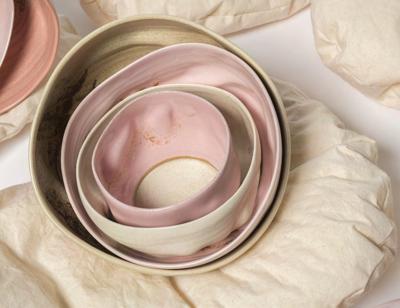



58
The connection between body and creative practice is a constant inspiration for my art. My graduating work ‘Held’ draws on my sense of personal identity, self-acceptance, and appreciation, exploring the idea of body and driving connections that are relatable and comforting.
This series centres around organic bowl-like forms that speak to the body as a vessel. The forms are wheel thrown and altered by hand to represent the folds and creases of skin. Some of the forms have no base to emphasise our bodies as cavities. The intimate and nestled composition highlights the vulnerability and softness of the body and clay itself.
‘Held’ recognises and celebrates the interconnection of body parts and our perceptions of the body—functional, imperfect, beautiful.
Adeline Higgins (she/her) is a ceramic artist living and working on Ngunnawal country. Adeline developed her practice while completing a Bachelor of Visual Arts at the Australian National University’s School of Art and Design. She is passionate about creating organic, expressive, wheel-thrown forms that focus on perceptions of body and identity.
59
One Time My Doctor...
CW: Eating disorders and medical gaslighting.
Every year, on the 2nd of August, I go to the local bakery, buy myself a slice of cake, and stick a candle in it to celebrate another year of recovery from anorexia, and another year of psychology appointments. I would have been able to celebrate this anniversary well before August, if it weren’t for the invalidation and gaslighting I experienced from a professional psychologist that set me back months.

When I first moved interstate to Canberra, I’d been (unknowingly) struggling with an eating disorder for more than a year. It was the first time I was living away from my parents, and my disordered habits increasingly worsened over the first few months of university. At my mum’s concerned request, the next time I went to a GP, I asked if they could weigh me, as I didn’t have scales at home. The nurse weighed me and told me that yes, I was underweight, but I looked like I was in proportion so I should tell my mum she had nothing to worry about. I allowed this flimsy reasoning to convince me that I was physically fine, and let that conviction fuel my snowballing eating disorder.
Finally, after months of increasingly meagre meals and growing more and more obsessive about food and exercise, I slowly started to accept that something needed to change. I gathered my nerves and trudged into my very first psychology appointment. The kind-looking psychologist listened as I finally began sharing
60
conviction that I was fine. Living with it was a constant battle between logic and self-loathing. It was compulsively starving myself and overexercising as I tried desperately to feel some semblance of control, whilst another part of me watched on in horror and tried to keep me alive. It was debilitating. Crippling. Having a mental health professional dismiss my pain provided ammunition to the side of the fight that was already winning. The voice that convinced me to skip meals, to run on broken and blistered feet, to close myself off from my friends and family, continued to grow louder and more demanding.
A nurse had told me that physically, I was fine, and now a psychologist had just told me that mentally, I was, too. So, I must be fine. I must be fine. It took me many more months, and my family intervening, to allow myself to believe that I was “sick enough” to seek help again. I tried again. I found a new psychologist, and from the very first appointment, I felt everything that I had been desperate to find months before. I found someone who believed me, who cared, and most importantly, who validated me.

I feel infuriated now, as I write this three years later. I also feel fiercely protective of my younger self, who was alone and scared, and abandoned by the health professionals she should have been able to trust. What is even more terrifying to me now, though, is that I know this is just one story among thousands. Thousands of people across Australia have endured the same belittling feelings of invalidation. Not just in terms of mental health—in all areas of healthcare.
* * *
In the article “Towards a Sociological Understanding of Medical Gaslighting in Western Health Care”, PhD student Jennifer Sebring describes this invalidation as “medical gaslighting”. The experience of medical gaslighting leaves an individual feeling much the same as regular gaslighting does. It reinforces power dynamics and makes a patient question their own judgement and intuition. This added pain—feeling invalidated and unheard—adds to the mountain of existing stress and leaves people feeling worse. Further, medical gaslighting is something that
disproportionately affects people who exist in marginalised groups, such as women, people of colour, the LGBTQIA+ community, and people with chronic health conditions or impairments.

Of course, this is not something that all doctors do; we are very aware of the many incredible healthcare workers who do amazing work to save people’s lives. The issue that concerns us is systemic, and preys upon vulnerable members of the community through prejudice and unconscious bias.
We are members of a group from the SOCY3124 course at the ANU that is passionate about ensuring our healthcare system can become an inclusive, validating, and nonstigmatising one, which allows all patients—no matter their background— to receive the care they require. Our goal is to support people who have been victims of medical gaslighting in feeling less alone through hearing the stories of others and raising awareness of this issue. If you want to learn more, please listen to our podcast One Time My Doctor… or read our Reddit forum.
61
Growing Up Biracial
Zoe Grahl and Erika Chaki
One of the most significant determinants of our identity is the culture within which we are raised, forming an imperative part of our selfhood that continuously develops as we witness and adopt the norms, behaviours, and values of the groups we surround ourselves with. As human beings, we all long to be embraced by and belong to groups that enhance our self-perception. Isolation from our connections to culture can have complex and often negative impacts on our mental health and self-image.
My friend Erika Chaki is a JapaneseAustralian woman who grew up in Australia. We’ve often talked about her identity, and how she has struggled to feel connected with either group of her cultural heritage. I sat down with her to explore this experience, and to understand how this estrangement has shaped her perspectives and sense of identity. * * *
When did you first feel aware of your race and its effects on your identity?

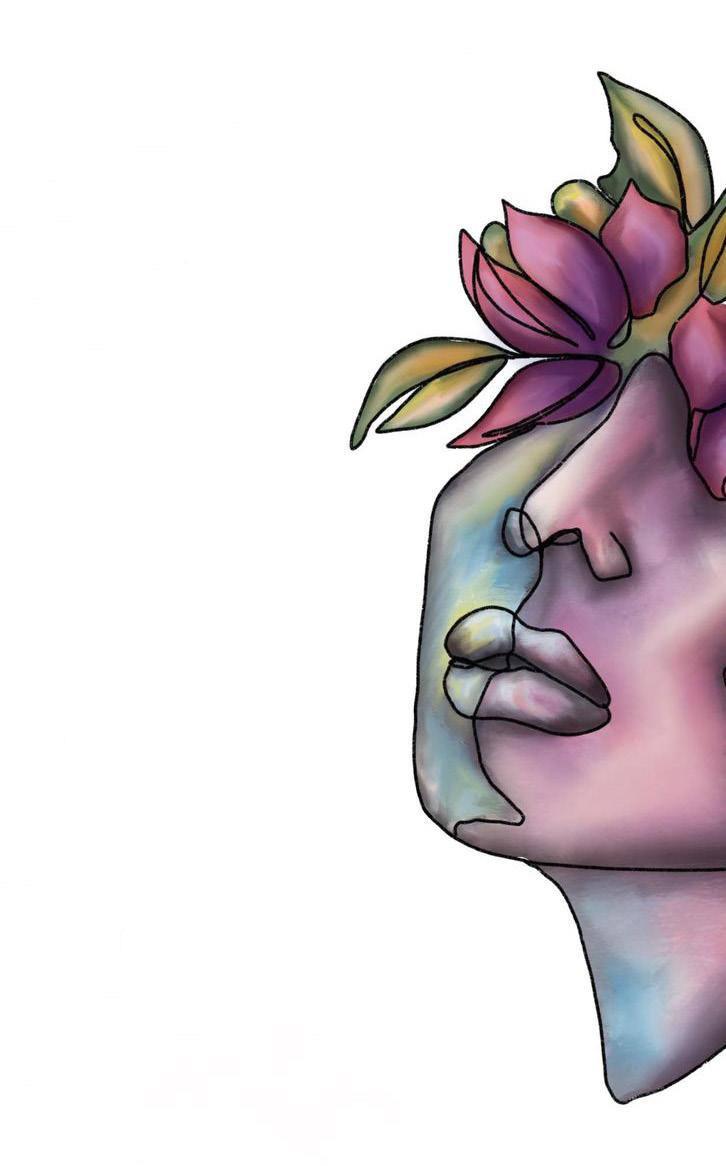
I think I was always aware of my cultural identity—how could I not be?—but it was more just a “fun fact” rather than a deep part of who I felt I was. That’s why casual racism in primary school never really offended me—because I didn’t even see myself as what was being mocked. But I was always somewhat aware of my Otherness. I remember noticing how I looked compared to my white friends and how they looked more like my mother than me, which made me feel isolated and confused. When high school came around, this feeling of Otherness amplified. I didn’t feel
and straight up say to my face that I was the sidekick. I mean, that’s what we see in the media, the POC sidekick. I felt like
who looked like me in media—it was more about how POC were never the “it” character. That’s what sparked my
62
Wijeratne.
Artwork by Navita
white girls in their white linen. So, by the end of early high school, I didn’t feel connected with my Asian culture.
there were only like five white people in my grade, so it didn’t make my fear of their judgment any better; it rather exacerbated my preteen anxieties that all white people secretly thought I was weird and different. Every time someone proposed going to a party with people not from the school, I wouldn’t want to go because of my experiences at my old

Were you ever scared of being labelled as “whitewashed” by Asian people?
For sure. At first, I feared making friends because I felt like I wasn’t integrated, that I lacked the “rite of passage” into acceptance by “proper” Asians. It was like I was torn between my two cultures. I’m not fully white, but I couldn’t feel comfortable with these Asian people even though that was how people had seen me my whole life. I was embarrassed to like Asian things at first because I feared I wasn’t “Asian” enough to like them. But after some time, I began exploring what Asian culture had to offer, and felt comfortable sharing my newfound interests with the world. Now with my Asian friends, we always go out and eat food, listen to music, and watch shows, and it’s so nice to talk to people with similar interests and not feel

As you got older, did you find that your culture influenced your view of yourself romantically or sexually?
One of my main sources of insecurity was men and if they found me attractive. Hearing boys in school say “I’m only into white girls” upset me. It was like they were confirming this secret fear I had that people didn’t find Asian girls attractive. What really stuck with me was an Asian guy saying he was not into Asian girls. How does this run so deep that a person is against their own race? It went the other way, as well. I was scared Asian boys wouldn’t like me because I looked too white. I just felt like I was never anyone’s “ideal type”. How could I be? Unless they specifically go for “Wasians”, but even that seems more like some weird fetish over a genuine attraction. I hate this idea of preferences. You can’t deem every person from one race unattractive; it just feels like masked racism. So yeah, when any boy liked me, I considered it an exception.
weight lifted off my shoulders now that I didn’t have to prove my individuality to my peers. The bad thing was that
When boys approached you, did you ever encounter any racial fetishisation? Did it influence the way you acted?
caution when meeting new people, monitoring how they make me feel.
Do you have any advice for people struggling?
Unfortunately, you can’t change the way people act, only your environment. I think if you’re unhappy, explore avenues with people you align yourself with, whether that’s a new job or a uni club. You’ll be surprised by how many people you can talk and relate to about this stuff! I would also say don’t feel you are obliged to explore anything, either. What’s most important is that you feel happy and comfortable in your environment, and that will influence how you act and perceive yourself as well.

Reflections of a Would-Be Runaway Lucy Waterson
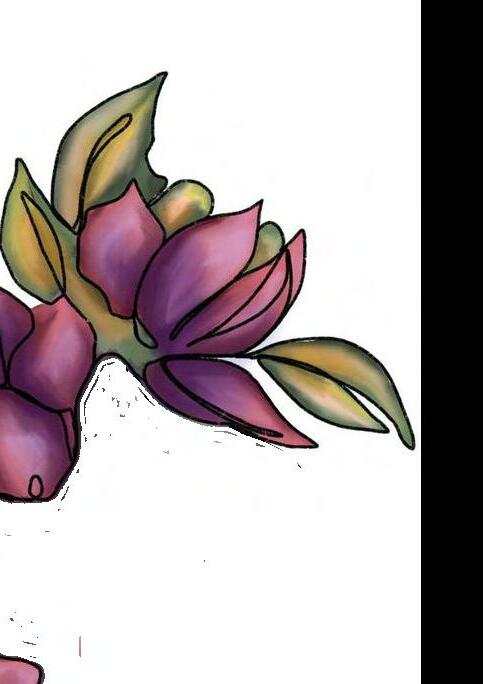
Growing up, children dabble in a variety of hobbies. Some try their hand at tennis or soccer. Others love their dancing classes, are always glued to a book, or spend every minute of their spare time drawing. However, there was no after-school class or training session for my chosen hobby. No weekend games at the local park. My favourite thing to do was run away.
Maybe it started with a disagreement between my sister and I over who got to choose the television show. Maybe Mum refused to let me skip netball practice, or my dad said no to a second Magnum ice cream after dinner. But that doesn’t matter. If felt wronged, upset, or ignored, I was out the door with the tiny black-and-white striped suitcase my mum had handed down to me in tow. This donation was something she probably came to regret as soon as I was old enough to use and abuse it for my dramatics. In fact, that suitcase might have been the catalyst behind the increasing frequency of my escapes—it would have been rude not to use it for its very design.
In my seven, maybe eight-year-old mind, the streets I am about to encounter are rough and not for the faint hearted. I wonder where the next bus might take
me and who I might meet. Maybe I’ll change my name and be free, kept warm with the feeling of vengeance as my parents search frantically, wishing they’d let me watch that extra episode of Hannah Montana
In reality, I’m about 60 metres down the suburban street I live on, which is a kilometre minimum from the nearest main road. My dad is likely curbside, keeping watch as I stand furious at the bus stop for five minutes (an hour at least in my mind) before getting bored, tired, or hungry and deciding to sneak back home. I hope to go unnoticed, leaving my parents to relent over my disappearance.
It’s comical to reflect on the essentials I thought necessary to shove into my

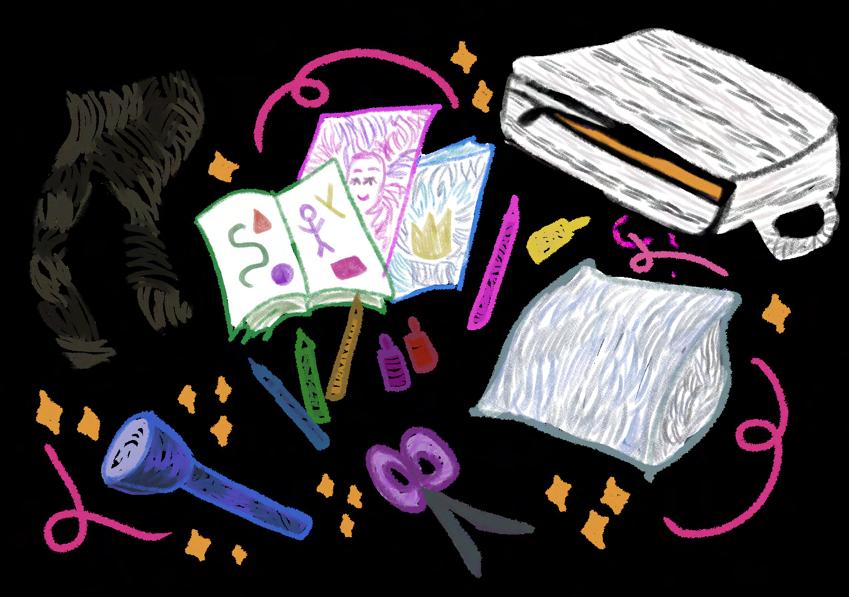
I was facing an indefinite amount of time on the road without a dollar to my name. What made the cut?
The first thing I knew I couldn’t live without was a pillow I’d wittily nicknamed Pilly, which by about age four, I had turned into a knotted bundle of greying fabric scraps. Next on the list were colouring books and a few loose textas or Smiggle smelly pens. What if I got bored on the bus and needed something to do? I never brought any food, as my escape missions were far too covert to risk being caught red-handed in the kitchen. On a particularly considered day I might have remembered to bring a spare pair of leggings. If I was feeling a little more industrious, I chucked in a flashlight or a pair of scissors—for when I needed to build my outdoor shelter, obviously.
65
I wonder what exactly this eclectic choice of belongings reveals about my personality, both back then in my heyday and as I’ve gotten older. It certainly demonstrates a lack of forward planning—a skill I’ve still yet to fully master—and speaks to a lifelong sentimentality that has resulted in my keeping of storage bins filled with old stuffed toys.
In some ways, I’m sure I’m not all that different from the stroppy kid who insisted on storming out when things went wrong. Old habits die hard, and like many individuals in their early 20s, when I find myself able to escape my normal life for a few days away, I’m quick to seize the opportunity. Lately there are more and more things that I wouldn’t mind the occasional unannounced break from: the daily stresses of work, university deadlines, complicated relationships, and the ever-looming pressure to figure out what’s next. I yearn for the simple days when the most upsetting thing I wanted to get away from was my parents’ refusal to let me have a guinea pig.
Running away is an idea laden with negative connotations, commonly associated with fear, cowardice, and avoidance. It’s seen as the inferior adrenaline response when things get rough: the “flight” over “fight”. Older generations mock younger people for what they believe is a modern inability to endure hardships—as though it is a mark of weakness to leave behind careers, relationships, and situations that cause us pain.
Maybe I’m biased, but in my mind, sometimes the running away is the fight. I can think of a few examples in my own life—struggling daily in unrewarding jobs, desperately trying to make a toxic friendship work—where “giving up”
was the wisest choice I could make. Thankfully, with an ever-growing global understanding of mental health, we are finally beginning to recognise the strength and value of stepping away when we feel we need to. Running away also speaks to a traditionally unfavourable trait of defiance, an innate desire to rebel against the expectation placed upon us as we grow older to stay put, settle down, and carry on for the sake of those around us. With this in mind, I feel empowered by the idea of venturing a little further than the bus stop down the road, with plans to explore a whole new hemisphere and see where I end up. Travel is one (and perhaps the most obvious) of my personal adult escape schemes, but it’s certainly not the only option, with many far more accessible activities providing us with a well-deserved break.
black-and-white suitcase was retired a long time ago; it probably resides in the bottom of the linen cupboard with a few relics of past getaways rolling around inside. I wouldn’t be surprised if my mum is keeping it safe for the day I might decide to have my own children and she can finally get her payback by passing it on to them.
After all, the childhood running away gig is a bit of a rite of passage: testing how far you can push the boundaries before coming back to the familiar comforts of home, then doing it all again two weeks later when you’re craving a bit of drama. Maybe I’ll try it out for old times’ sake the next time one of my housemates forgets to take out the bins.
Sometimes the trickiest fight we face is against our self-inflicted obsession with productivity, and allowing ourselves the time to watch our favourite TV show or spend a night out with friends is a bigger win than we think.
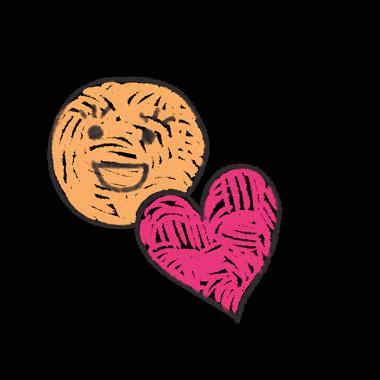
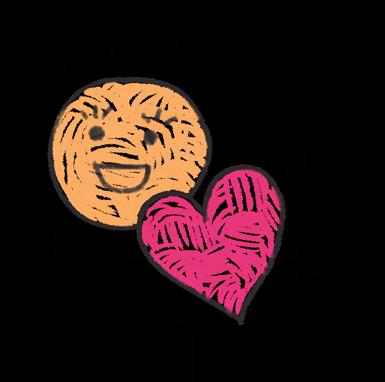
When the time comes around, my travel bag may look a little different, and I’m afraid to say Pilly hasn’t left my childhood bedroom for a while. The colouring books have long since been replaced with shinier, electronic pastimes, and I rarely feel up to leaving my embarrassingly heavy bag of toiletries and skincare behind, even for a night. My little

66
Only by Enduring Myka Davis
Out beyond ideas of wrongdoing and rightdoing, there is a field. I’ll meet you there.
— Rumi
CW: Allusions to sexual assault.
P: Where do you come from?
Marisol is not interested in insincere platitudes, especially not those sanctioned by the person she had tried to burn alive. She folds her arms across her chest. The protruding carpal bones partially obscure the letters PDL emblazoned on her yellow shirt.
Persons Deprived of Liberty.
He clicks his ballpoint pen. Once. Twice.
P: Look. If you don’t want to talk, you don’t have to.
Marisol frowns. His words clutter in her mind; her understanding of the Cebuano dialect is rusty and spider-webbed from disuse.
T: [taps paper] Write.
Her muscles tense as she takes the sheet he pushes toward her.
in the end, stories are about one person saying to another: … Can you understand what I’m saying? does it feel this way to you?
— Kazuo Ishiguro
She knows they will demand more, as they always do. More and more and more until it all spills from her guts. She shakes her head. No.
She won’t give herself to them.
The man sighs and knocks his hand on the desk. The door behind her swings open.
The hospital room has been sterilised, wiping even sound clean. It is a cavernous tomb. There is no one remaining but her to hear the grief beckon.
She lets the curtain fall, a halo around her mother’s body.

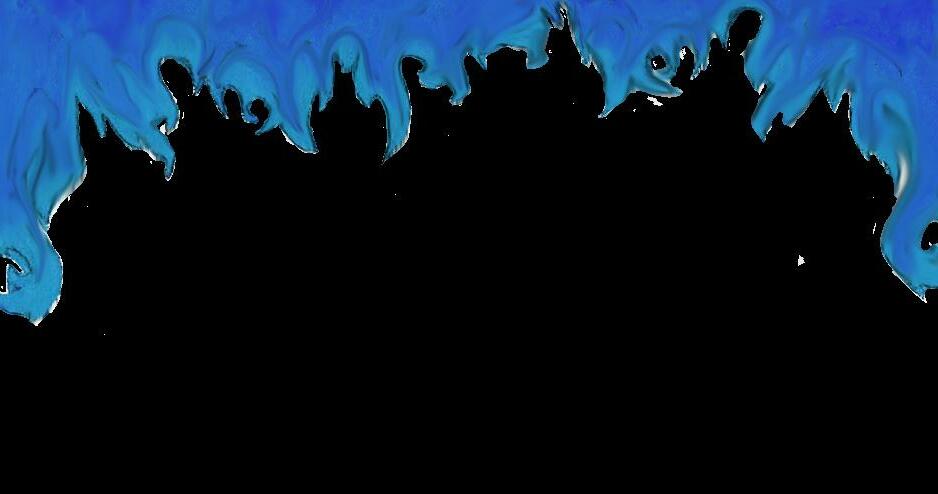
Marisol wants to wipe her mind blank with sanitiser, disinfect the misery in her bones. She sits beside the bed, numbness crawling up her legs.
She wants to weep. But the monsoons have passed, and so have her tears.
Marisol cranes her head, wincing at the soreness in her limbs. She stands awkwardly, grasping the hospital bed. Sweat collects in the hollows of her skin, the grime becoming a paste in her hands.
NURSE: We need you to sign a few things.
There are no condolences. They have already been said, wasted and blown away in the dry, suffocating heat. She accepts the pen, looks at the form.
She can’t sign it yet. That would mean her mother is truly gone. She holds this moment in her hands, clasping it gently like a hummingbird retreating into the dips and hollows of her emaciated skin. Her eyes feel limned with livewire, the keen scent of iron and blood stings her nostrils. The words look like bokeh, unfocused points of light.
It hits her. She is alone. The only thing she can do is breathe.
NURSE: Your father should be notified.
The nurse hands her another form. She sees a name. Unfamiliar but intimate; she has heard it somewhere before.
Marisol signs it, hesitating at the finality under her fingertips. The nurse pats her shoulder, and leaves.
We write from the marrow of our bones. What she did not ask or tell: how victims save their own lives.
— Adrienne Rich
I was born in a dusty, nondescript town. The long and short of its reputation is that everyone here is trapped. They were either born here and couldn’t get out, are hiding from crimes they may or may not have committed, or are too disheartened to bother wrenching themselves out of the mud.
There are only two weather dynamics in this hometown of mine: honeydew summers, and dark tropical monsoons. The tug of war between them began several weeks ago. The tempest had danced between draughts of breathing and dry-skinned heat, until it erupted, digging its claws into the mud, forcing the lifeblood to the surface. Its heartbeat slammed against our tin roof, each raindrop punctuation of the seconds slipping into the bottom half of my mother’s hourglass. The fire was flickering lower and lower.
She was so frail, dwindling like the palm tree beside the stove. The covering of her bones was worn down, cruelly mimicking the weathered leather boots she’d used whenever she had tended to the chickens.
Those chickens were all gone now. A payment for an education she never had.
And as I lay beside her in that creaking bed, it hurt to acknowledge that all the fire in the sun could not eclipse the thick despair and poverty in this home.
Home.
A memory is a story told so well it
* * *
Home.
becomes part of your body.
— Olivia Gatwood
When I first started writing this down, I hated myself. Despising the imperfections in the tale I was weaving.
Who was I lying to? My choices were mine.
There was no disputing the cruelty, the spiteful passion I had indulged in. It was shame—clear cut, shining diamond bright.
When I first started writing this down, uncertainty tainted my voice. Images, ideas. Your Marisol hid from me. Every sentence started with maybe, I think, I believe.
Doubt is everywhere. Mama, it is intoxicating, seductive, terrible. All I know are the circumstances of my life.
Restaurant.
The lighter is out of place. Neon green and silver, with a little yellow man— some foreign brand. Worry tinges her movements, leaking queasiness throughout her stomach. The caustic scent strips her nose bare, dries her eyes and throat.
Abandoned aerosol cans are littered among the dim alley, like bright metallic fluorescent flowers. Stacked containers of linseed oil; flour sacks sitting drowsily under a sheet of metal.
MARISOL: No.
Maybe he had seen the selfishness, the weakness inside her, and abandoned them both. Maybe she had deserved it. She was a punishment for her mother.
She begins pacing. It would be ridiculous for her to stop now.
There is no time to feel guilt. She doesn’t quite know what motivates her to kick the tubs of oil over. Rip open the sacks with her teeth, spreading the white dust everywhere.

She doesn’t particularly care. She isn’t an angel. She is carved out of her circumstances and her choices, and so is he.
She might burn in hell. But she’ll make
sure he’s there too.
Prison.
It is overcast today. That is what she was told, anyway. Marisol doesn’t know what to do. She wishes she knew the names of the clouds. There is no way to peer outside; her curiosity is not satiated by stained grey concrete and rank air.
Marisol rocks back and forth on the bed. It isn’t hers. The cheap polyester scratches at her bare feet. She had been cheated. How foolish of her, to think she could go unscathed. She wonders how long they have deliberated over her.
And what would they do to her? Her father surely would want her dead; how could he not? There are stories every Filipino knows. People caught on the wrong side of the affluent, or simply unable to escape corruption’s iron fist. You end up disappearing. Forced wisps in the wind—everyone who once knew you dusting the remnants away.
It will either be a bullet to the head or a hole in the ground; the worst part is that she won’t be allowed a choice. She is sick of asking herself why she is climbing up this hill. The skin on her body has paled, no longer the rich tan it once had been. Now the blue on her wrists is too saturated; sometimes, the urge to bite through it with something sharp consumes her.
Murmuring from outside the door. It swings open, and she retreats backward, the edge only just missing her toes. She sees the exchange of pesos, the heavy disjointed clunk of boots echoing further and further away.
Her heart is pounding. She feels bile crawl up her throat, an amazing feat given she hasn’t consumed anything for a few days now. Her hands skitter across the floor, searching for a sharp utensil, anything to defend herself.
She knows what happens to abandoned girls here.
Marisol watches as the fire leaps onto the flour sacks, skidding on the oil in its excitement. She is lightly dusted with white. The smoke hoods the amber eyes of the blaze, a blade of honey slicing between the night’s shoulders. She is quietly smouldering, with fire under her nails and ash embedded in her skin.
The first plank of the building catches alight.
She is full of bitterness and rage and grief, and it is all directed at her father. A man who flung people away like matchsticks, who believed in the single-use lives of the poor.
She remembers him vaguely.
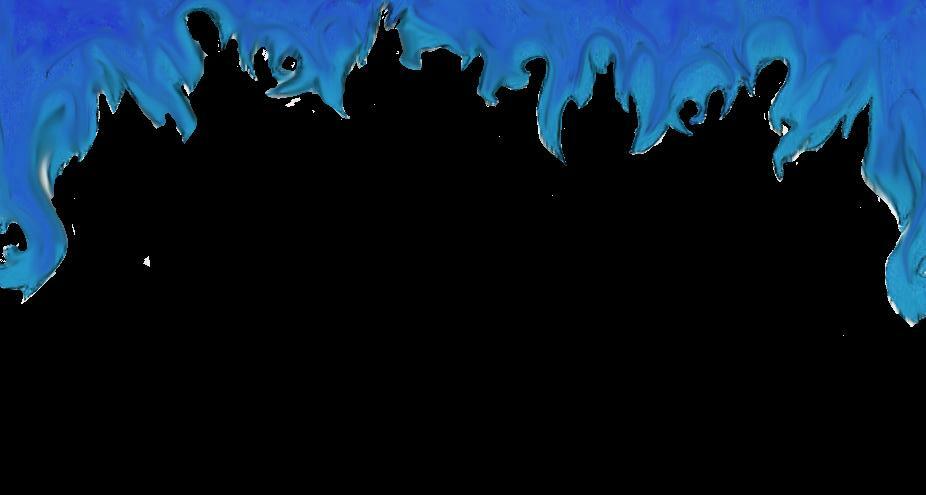
Not as a constant figure, but a shadow, who drifted in and out of the fabric of her childhood. But even though she had never felt his absence, she knew someone who had.
The air warps with heat, distorting her vision; the taste of burning saturates the insides of her mouth. Marisol laughs—a derisive, humourless bark—like everything had not already collapsed around her.
Marisol wishes her memories weren’t so erratic, so spasmodic. She wishes that when she did remember, it didn’t feel like an iron brand on her soul.
Sometimes she would wake next to her mother, and instead of a greeting, the intonation of him was on her mama’s lips; a prayer in its desperation, recognised by all who have ever desired the utterly hopeless.
It was these little things that had shaped her mother’s goodness, the same way they had handed Marisol unadulterated fury.
The fire is burning in earnest now. She is engulfed in the crackling, eyes watering. Marisol drops to her knees, coughs shaking her entire body. She can only see flames and darkness; she cannot imagine what it must be like inside the building.
Restaurant.
There is something breathtakingly visceral about the selfishness of fire. The way its flickering waves obliterate the oxygen; the unabashed savagery in its relentless starvation.
She hopes her father burns.
She remembers the only time she had seen her mother yell. The village had one phone box. It barely worked. The sides had one uncracked screen; the rest decorated the concrete in glittering
shards.
It was the screaming that alerted her, in streams and streams of rapid-fire dialect she couldn’t decipher in her youth. Marisol watched—na ïve, confused—as her mother sank to her knees, weeping. The same circumstances that melt wax, forge steel.

Her mama did not survive nearly everything that attempted to end her only for Marisol to shrink. Only by enduring has Marisol been able to carry the weight of the forgotten and their rage, like her mother, like herself.
She hopes he burns. That the skin flays and peels, his ribs charred like the roast lechon hanging from the butcher’s hooks, the type to feed a village.
Sometimes you have to burn everything down to begin again.
The aluminium cans explode, rupturing from the pressure.
Her work here is done. Home.
You have survived so much that no one remembers. … And you still get dressed in the morning.
— Jacqui Germain
The exhaustion crawled slow and tepid as I trudged home. It was a shitty day to be out. The heat screeched along the tin roofs, baking its fury into the skin. My feet were dragging along the dust, tinting my wrinkled uniform a powdered beige. Sweat trickled down the crevices of my spine. My tongue ached for water.
I hadn’t noticed the children. Not old enough for school, not hardy enough to work. They were shrieking and gallivanting amongst the roadside shanties. It was a usual sight in these parts—their balloon stomachs and twig arms, brown eyes huge in their tiny faces.
Seeing malnourished kids was normal. I may have been poor, but it didn’t mean I couldn’t turn my eyes from their plight. That was their lot in life. This was mine.
I still cannot believe how selfish I had been.
Call me mama, my mother asked every
time I returned home.
I was stubborn. That’s not how they do it, mother.
And then she would rub her left cheekbone, the one without the protruding mole.
The message implicit in my response was that I wanted—no, needed—to be like the other privileged kids. I needed the meals only my eyes touched; their polished inflections; the freedom clinging to their uniforms; but most of all, their security. Maybe I had to fling something of myself away, but if it made us better, I would give up anything.
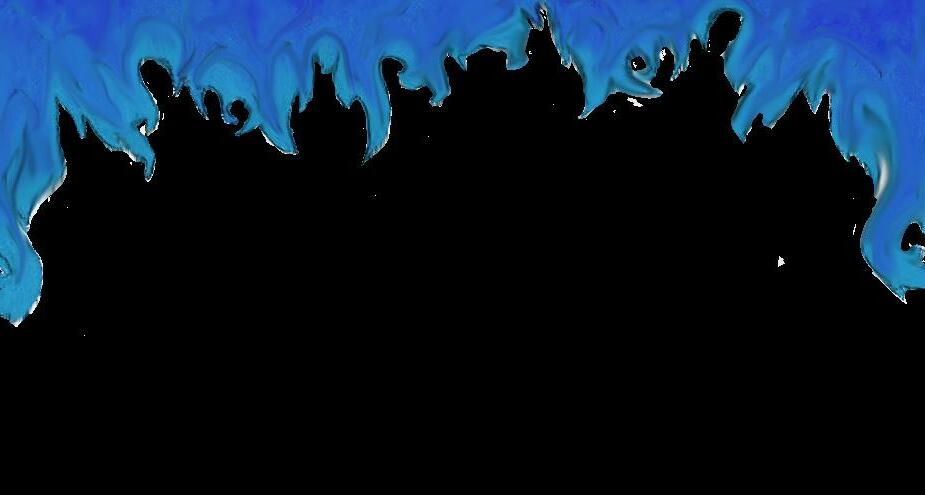
I slowed. There was a mass circling around someone. I was too short to see over anyone’s head. I was immediately suspicious.
This was not one of the charities. All they did was recite something about “teaching a man to fish”, which was ridiculous. The coast was nowhere near this village, and the river was too temperamental to bother.
My heart rate elevated. A businessman? I hoped it was a rich person returning from the city, giving supplies away for kindness.
I weaved under people’s arms and dodged their elbows, muttering, “Makikiraan po,” whenever I hit someone. Mama—no, Mother—would adore having a full pantry for once. The sun was no longer burning so harshly. Excitement danced up my veins.
I was wrong.
There was a small, angular woman gathering containers of dried fish. She handed a full plastic bag to a man physically hunched over with a rusty trolley for a walker.
She turned to me.
MARISOL: Mama? What are you doing?
Nothing was exchanged. Not a single peso. Horrified wasn’t even close to what I was feeling. The outrage was pouring from me in waves. We could have kept it. All of it, and not have gone hungry for a year. A few people were eyeing us, concerned.
MARISOL: Where? Where did you
even get this from?
I remember the glint of guilt in her eyes. The fidget in her stance. I should have realised.
MARISOL: I don’t understand. Why?
She sighed. Placed her bony, worn hand on my cheekbone and cradled my face. I noticed how much taller I was than her, a testament to how hard she had tried to save me from her fate.
MOTHER: See that child over there?
She pointed to the child I’d seen earlier, dumping his stash of food into his grandmother’s basket. His face was shining.
Shame crawled up my neck. She hugged me, and I felt like collapsing. She was too good for this village, for me. Mall.
The newsagency is uncomfortably full. There are too many people milling about the entrance, spilling like flour out of a hessian sack.
The rain is beaming down upon the streets, sending islands of refuse travelling joyfully down the gutters. Little children in bright colours dance among the hawkers and the homeless huddled on corners.
She hates crowds. The sweat, the brush of skin against hers, the paranoia of pickpockets and losing her precious few possessions. Clutching her unassuming purse to her chest, she steals her way through, under arms and dodging errant legs.
After a few minutes of wading, she is spat out near the counter. Marisol is looking for something, and the shopkeeper, a tall balding man, notices.
SHOPKEEPER: [broken American accent] Don’t steal anything.
He waves an umbrella menacingly. She rolls her eyes.
MARISOL: Mister, I was wondering whether you have a Yellow Pages here?
SHOPKEEPER: Yes, yes! Only in the Philippines! Tell others.
Marisol didn’t have the energy to inform him that most people she knew couldn’t read.
* * *
Names, numbers, addresses. She had never known how many humans could exist in one city, let alone the world itself.
She thinks of the local church’s Registry of Births, Deaths, and Marriages. How her mother’s records were neatly filed away in the drawer by an austere nun, her beginning and end contained in two sheets of paper.
Would she ever appear in these yellow pages?
Marisol shakes her head. She needs to focus.
There is someone she must find. City.
As she watches them dine, she cannot forget. How her people went hungry. They consume artwork, while the poor scramble for the leftovers. Elect clowns, expect a circus.
And she knows damn well that settling for crumbs leaves you starving.
The intense urge to wipe all expression from their features wraps its fingers around Marisol so forcefully it almost chokes her, but she pulls the lump in her throat out with her teeth. Straightens her back, carefully strokes the silver in the hidden pocket of the overcoat. It feels exactly like what it is: a round of revenge in a striker designed for fire.
It is a rattle, a hiss in her breathing. The uncoiling of scales, the baring of fangs. She grins—a wide, Kaa-like, shit-eating grin.
Marisol is ready to strike. If she could burn the entirety of this place down, she would unflinchingly. It’s a howling cobalt night that swirls heavy with summer mist, and the rumble of an impending thunderstorm matches the tempest in her eyes.
Who would find her?
She is nothing and no one in this city. A
faceless marble statue.
Nothing but dim streetlights to distinguish her from the liminal spaces of the dark. The ice in the air steals into her bones, calcifying the steel. * * *
The lie rolls off her tongue, as careful as saccharine nectar. Rapid as a spitting cobra rushing a mongoose.
MARISOL: I need to go! [presses legs together]
Her voice is breathy, speaking a scratchy mix of dialect that does not belong in her mouth.
She knows what the ma î tre d’hôtel must think of her pathetic, ragged clothes. Enough wear to look decrepit, but not so she appeared homeless. He appraises the downturn of her pouty mouth, the innocent desperation.
He gestures to a side door, tucked away from the hawkish eyes of the patrons. Marisol knows it is for waiters and cooking staff.
Her vengeance awaits at another destination.
That this is the heart’s constant project: this simple learning; learning how to hold hopelessness and hope together.
— Unknown
There are days I don’t speak the truth to anyone but these pages. The emotion runs dry inside the ink, and the period captures my silence. In the emptiness of these moments, I remember why I am here. It is a prison made of paper and ill will, but even though I am the architect, the exits are lost to me.
They don’t ask about my mind. They leave those questions to the psychiatrist sitting across from me, secure in the knowledge that I could not possibly be a threat.
He is unaware. He does not ask: “How is it that you can vanish so quickly into solitude?” People here are escapists in the most ironic way; we’re all sprinting, lonely and desperate, from the tragedies no one pays to see. Do the sunflowers, too, chase spring, even if they never know the day it arrives?
It wouldn’t matter. The clear growth of spring does not reach the people, the sunflowers, or me, because here, it simply doesn’t exist. There are two extremes. We are choked, kicking and screaming into the dichotomy, and nobody ever leaves.
She massages her knuckles with her left hand, stares at the icon of the Virgin Mary above the table. The woman looks on fixedly, with impassive grief. Marisol has noticed that no matter where she walks, the Mother will not meet her eyes.
Marisol does not believe in anything that might greet her in the dark spaces of the afterlife. Still, she has a sneaking suspicion that this does not bode well.
She hears shrieks in the hallways far beyond her, and sighs deeply. Puts her head in her hands. Revelling in the multicoloured static dancing behind her closed lids.


She hopes that if she stays motionless for long enough, the overgrowth of her hopes and dreams will tug her home.
Her sneakers are slapping against the spit-packed road.
Her breath is collapsing out of her chest; she doesn’t know if it’s out of exhilaration or adrenaline or pure fear, but what she does know is that she needs to move, and she needs to move now.
She jumps over skips of rubbish, people lying down under tarpaulins. Misses one step, accidentally kicks a small child and hears a yelp. She barely has time to hiss an apology before she’s moving again.
The smoke is far behind her now, the faint boom of falling wood follows her footsteps.
She doesn’t know if she will be found, but all wisps of regret are gone with the fire.
Section Designers: Suhani Kapadia Hengjia Liu Alisha Nagle Sebastiàn Ungco Cinnamone Winchester
s u c c u b a

“…a wild thing caught in a woman’s skin, monstrously alone,” — Djuna Barnes
To lie beneath.
The Death of Koschei the Deathless Cinnamone Winchester and Sebastiàn Ungco
In a certain kingdom there lived a Prince Ivan. When winter came to its deadliest on the eve of his twenty-seventh year, his father the king took Death’s hand in his own and departed their mortal realm, leaving Ivan with but one command:
“My dear boy, take you an arrow, draw your strong bow and let your arrow fly; in whatever court it falls, in that court you will find and take a consort before the last of the snow melts.”
Though he felt that the black clouds in the sky above might never give way to gentle spring, Ivan let his red-fletched arrow fly over the bounds of his kingdom and into the next, where it settled to roost at the doorstep of the Princess Marya Morevna.
When at last the prince alighted from his silvery steed, he found the warriorprincess idling in wait of his call. “Dear Fate! I have been led to the dwelling of a handsome maiden. I am Prince Ivan, and I have come to collect my arrow.”
“Your arrow struck true, indeed,” said she, “though I am inclined to keep it, as a token by which I may remember the fortuitous crossing of our paths. I pray you tarry awhile, prince—if your business be not pressing.”
It was not, nor had he any business but with her. By all accounts in the days that followed, it was clear that—contrary to his father’s wishes—Marya Morevna had taken him
While Prince Ivan delighted to sojourn in the warmth of her palace as opposed to the icy frore, mere days passed on the cusp of an emerging courtship between
the two before Princess Marya Morevna was obliged to leave for the unabated warring on the borders of her country. She took great care, by then, to render all the pertinent house-keeping affairs to the prince before bequeathing the following instructions:
“Go about everywhere, keep watch over everything; only do not venture to look into the closet in the west wing.”
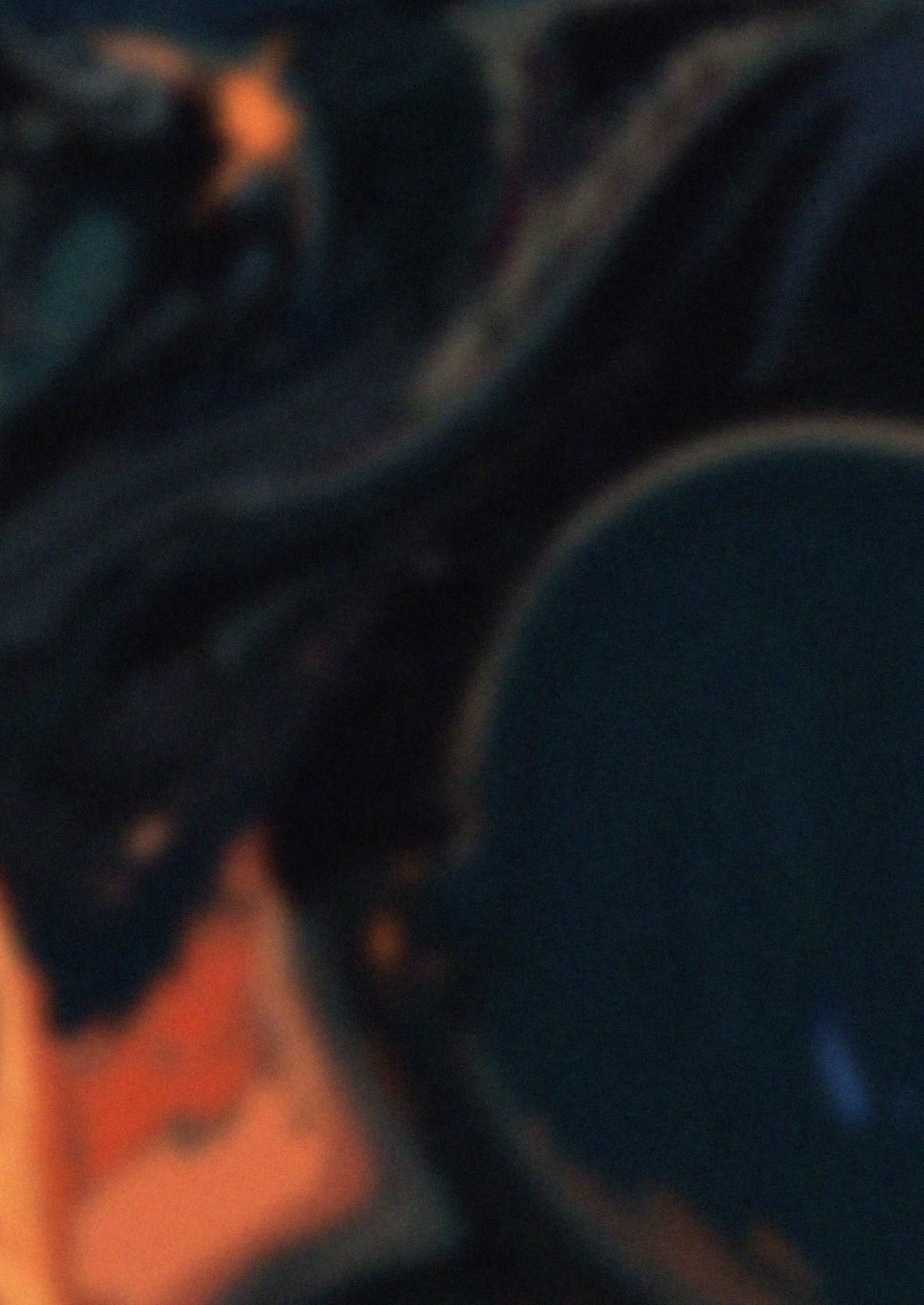
But Ivan could no more help himself from sating his curiosity than a seabird could remain grounded. The great doors of the palace did no sooner close behind Marya Morevna than Ivan turned about, followed the setting Sun to the west wing, and opened the closet door nestled into a shadowed alcove. The prince descended the stairs inlaid within the stone, holding his candlestick aloft to quell his distant trembling—and below, in a tawdry cell, found Koschei the Deathless.
“My prince,” Koschei rasped, brittle hands clasping at the iron bars of the rusted prison; from behind the empty aperture through which one typically served meals, Ivan could see that they were fettered by twelve chains. “Please, my prince—grant me mercy! It hath been ten long years since even a single morsel flattened mine tongue with its weight, ten years since I last knew not what it was for mine throat to be set ablaze by thirst. Water. Please, my prince. Spare some water.”
With pity building in his breast like kindling in a hearth, Ivan fetched the prisoner a pail of water, and watched as they took their fill, gulp by wretched gulp. Once finished, they pleaded again:
“Please, my prince. Another.”
And so it went on until the third bucketful, when the wizard cast the empty pail onto the stone floor and shattered each of their twelve chains with a shake of their great shoulders. No longer was Koschei an old man; rather, they now stood taller than Ivan himself, dust-kissed rags crumbling to ash at their feet in exchange for a gleaming, crowfeather cloak.
“You have my thanks, princeling,” Koschei crooned; tucking a sturdy finger beneath Ivan’s chin, they fondled the prince’s head into a rough slant and nested their lips against his temple. “In return for your generosity, I offer you a glimpse of your future: you will sooner see your own ears than my captor, Marya Morevna!”

“What of Marya?” questioned Ivan, skin crackling with whispered remnants of Koschei’s magic—but in a terrible whirlwind, the wizard vanished, and he was left alone.
With his horse gone from the stables, the prince fastened his winter coat, steadfast in his purpose to thwart the wizard’s vengeful ambitions. Time and distance muddied his memories of his father, and even of Marya Morevna; though—curiously—he could still recall the touching of Koschei’s mouth to his skin, the sweeping of their dark lashes as they had slipped from his reach. In the harsh snow, he sighted a baleful trail of horseshoe tracks leading into the woods; unperturbed by the wizard’s head start, he hastened after Koschei and his purloined stallion.
One day passed after another as the prince trudged his way across the evergreen forest, knees and shins damp with frost. At the dawn of the third day, he came upon a felled tree and decided to rest at the hoar-covered log—but from behind its stump hopped a jackrabbit with a flaxen coat and a belly as white as snow. It thumped raptly upon the solid wood, squarely regarded the prince, and asked:
“Are you a wizard?”
Ivan shook his head and let his finger point ahead of them. “The wizard went that way. You had better steer clear of the blizzard, or else the cold will get you.”
“Oh.” The curious jackrabbit deflated, before it shot back up again to inquire, “Well, would you like to be a wizard?”
The jackrabbit then took it upon itself to elaborate on what, exactly, a game of chase called ‘wizards’ entailed. Starved for excitement after having spent countless hours ploughing the snow with his boots, Ivan placed down his weapon and shook the jackrabbit’s paw. He would come to find it a challenging playfellow, with its furry legs built to evade the forest’s most ruthless predators, but their cavorting and gambolling was nothing short of merry for the bored prince—and so they played wizards until the Sun sank into the earth.
“That was fun,” the jackrabbit chirped to the apparent victor— it seemed not to care at all that the prince had an unfair advantage in the end, tall as he was; only sullen that the games had ended. “My mother never lets me play outdoors. You should have this.” White paws took his hand and gently enclosed a shard of a heart inside his fist. The prince thanked the jackrabbit kindly, and went on his way.
He let the Sun and Moon make their weary exchange in the sky overhead, only minding the tell-tale divots in the ground for their steering of his journey. Hours passed in much the same way before there suddenly came a thunderous noise from afar. The earth shook and quivered, compelling Ivan to press himself against an unyielding tree and wait for
the tremors to pass—but subside, it did not, and so the prince set out to follow.
At last, he came upon a small hut, tilting and tottering on restless hens’ feet. As he approached, Ivan put his hands to his mouth:
“Izbushka! Turn thy front to me!”
And lo, the hut did so at once, scaly legs buckling at the knees with two great thumps. Down from the house stepped a peculiarly beautiful old woman; she lifted her broom high above her head as she peered at the prince, who was illuminated only by the light flooding each windowed eye at the izbushka’s
“Speak, boy,” called the woman. “What brings thee here? Free will, or the call
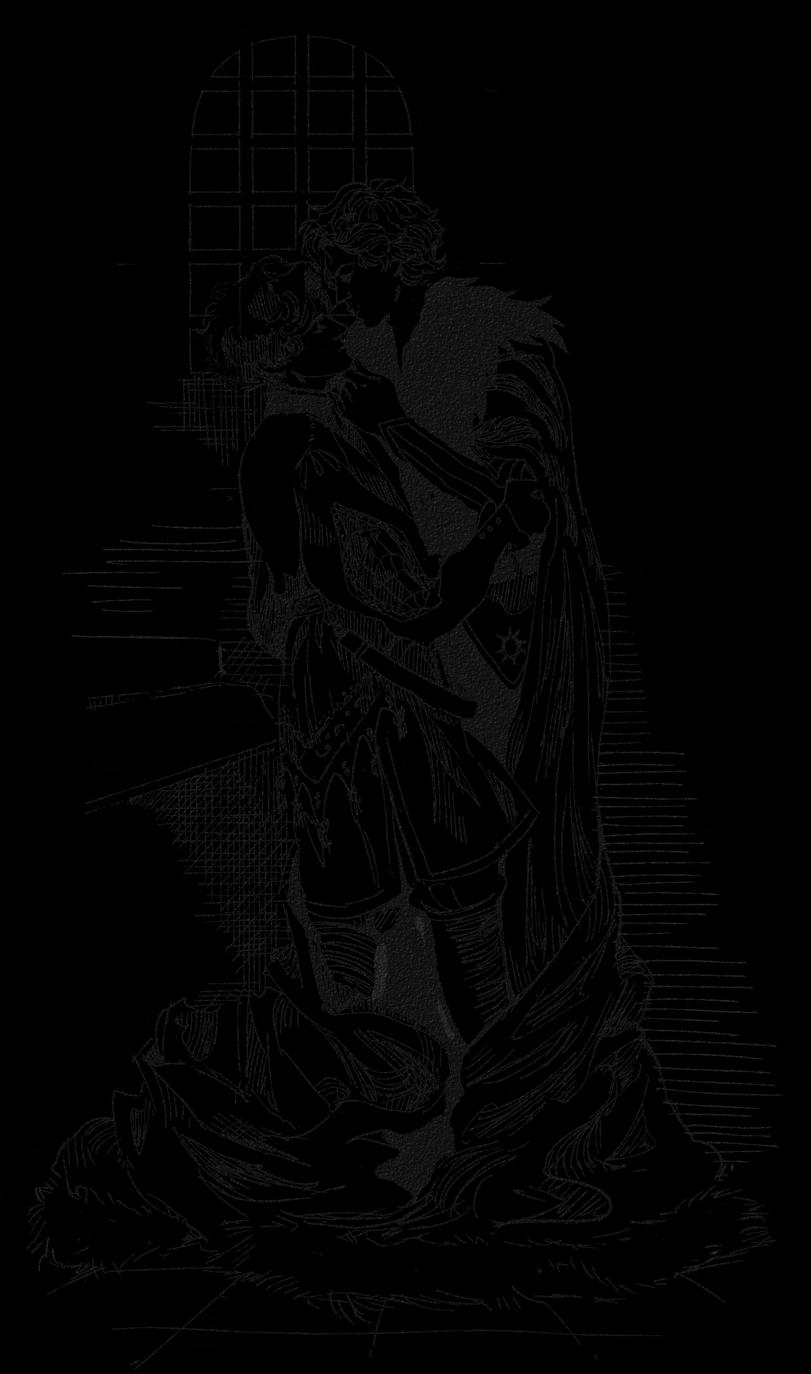
“Free will led my search inside this forest, dama—but it was fate that I be
With a deep, tremulous wheeze, the old woman laughed. “Lively?” said she, looking back to the hut. “Hear that? And so—not only is he courageous, but spirited, too!”
“I mean no harm,” said Ivan, but the old woman shook
“Naturally, naturally. Thy skylark with the lagomorph proved as much. Nothing escapes Baba Yaga, boy—not here, in the woods.”
She took Ivan into her hut, where he was swallowed by the izbushka and soothed with a herbal tea that smelled of anise. “Now, then: what do you seek that does not already lie in your pocke-
73
“Baba?” From his purse, Ivan drew the rabbit’s gift—beneath the glow of the furnace, it almost appeared brighter.

“Fate knows your path, even if you yourself do not. There, in thine own hand, is the heart of Koschei the Deathless.”
His hold became less grip than cradle. “You know of Koschei?”
“I know that this is not their first visit to mine forest,” said she. “A great many years ago, Koschei suffered a terrific tragedy at the hands of those who thought them a monster for their abilities: unable to defeat the magician, the peoples’ ire turned to the one Koschei loved most. Their heart lay shattered—so they entrusted a piece each to the animals of this wood. This is but one of five such fragments.”
“And what must I do, once I have all five?”
“If I gave you all the answers, boy, the journey would no longer be yours! The heart is the soul; the heart is life. Do with it what you will, knowing that Koschei’s destiny will rest in thy hands.”
Cup drained of tea, Ivan thanked Baba Yaga and went on his way.
The snowfall grew harsher still in the days that followed, but the prince paid no more heed to the weather than he did the creatures scuttling from thicket to thicket, in search of shelter from the blizzard that rattled the distant woods. None, in turn, tarried long enough to regard him but one: a peevish little hedgehog who bickered and raised its quills in petulant contempt even as Ivan’s hands cupped its soft belly.
Though the hedgehog sheathed its blades once it was petted and exhausted of its scorn, it only truly lapsed into docile silence when the second shard of Koschei’s heart was passed from paw to open palm. There was no conversation to be had while it sniffed curiously at his gloves and stiffened at the sound of snapping twigs—so the prince brought it to a hollow tree where it might take shelter, and went on his way.
The wizard’s tracks led Ivan over hills, through valleys, and past many precious spectacles in his trek about the woods—though none struck the prince quite like the welcome sight of a dry
cave tucked into the foot of a low hill. Yearning for refuge from the building storm, Ivan crept into the cavity, blind to the slumbering brown bear, who had already claimed the cave as its own, until the beast lifted itself onto its hind legs with a great groan.
“Hail, friend,” called Ivan, scrambling to his feet. “Sorry to wake you!”
But the bear was in no real mind for forgiveness. “Damned human!” Lurching forward, it swiped its claws at the startled prince; though he raised his hands in a gesture of peace, it was clear that no amount of reason would keep the bear from hacking him into smithereens. Unable to flee, he drew his sword, and engaged the creature in battle.
The worst of the storm had begun to roar at the precipice of the cave by the time that Ivan dealt his final blow. Lacking any proper defence from the winter chill, Ivan turned the great beast over and closed its unseeing eyes before beginning to cut away at its skin for protection—and lo, an eerisome light seeped through the cleft at the bear’s sternum, so bright and blinding it could herald only one rarity: there Ivan found another shard of Koschei’s heart, nestled inside the bear’s stiff chest.
He shed his winter coat in fair trade, blanketing the bloodied cloth over the creature before winding its pelt tightly around himself. Leaving the bear in its resting place, Ivan set on his way, weathering the pitiless blizzard all the way to the hollow of a snow-blanketed fallen tree; there, he fell into a deep slumber. He soon roused to calmer skies, and went on his way.
Baba Yaga’s woods were beginning to thaw enough for ice to melt into puddles; this, Ivan discovered when he came upon a pond so still it stirred with his approaching footfalls. Here he met a pair of swans, one of whom bent its slender neck to pluck a flower adrift in freshwater with its yellow beak. The other flapped its elegant wings, preparing to accept the blossom from its companion, but alas, the flower was swept away by a strong breeze. Surrendering to the unlucky swan Ivan’s own swaddle of peony petals, which he picked from a nearby thicket, returned their thanks and a fourth piece of Koschei’s heart.
Ivan lingered, for a moment, to watch the swans preen one another. When
the time came for him to take his leave, he marched onwards, unrelenting; with every step, the tracks in the snow grew clearer and seemed fresher, until he reached a canopied glade and found that there was naught left to follow.
By the last of the hoofprints, Koschei’s cape slithered over the wet snow. “I hear that thou hast been seeking mine heart.”
“I am,” said Ivan, unwilling to deceive the wizard. “Do you still seek Marya Morevna?”
“Perhaps.”
“And what do you intend to do with her, if you find her?”
“If?” The wizard laughed, coming to a standstill before him. “I could very well ask the same of thee. What will you do with mine heart, princeling?” A long arm encircled Ivan’s waist. “Keep it tenderly?”
To this, Ivan had no answer. “I cannot let you hurt her,” said he, finally.
“And so you come to me, expecting a hearty concession. Doest thou take me for a fool? Doest thou believe thyself the first in this attempt? I know precisely what you seek—but I would sooner spend another ten years as Marya Morevna’s mounted insect than let you take my power, my only protection!”
Their grip loosened, but did not fall away entirely; as they averted their eyes, the prince studied the troubled divot between their brows. “Now, leave me.”
“Your protection blinds you to your cruelty. As the fool who freed you from your prison, I cannot stand back and let you take up your path of old; I have found thy heart, Koschei, and I will keep searching until I have every piece. Do you not hear, how it calls to you?”
At this, their expression grew cold. “Then so be it: a heart for a heart.” Releasing their hold on Ivan’s waist, Koschei raised the stone dagger at their hip and struck a neat slash across his chest, through the linen strap of his purse and the thick furs that shielded the prince from little else but the snow. As the former began to slide from his hip, Koschei snagged it between their fingers, clutching the shattered remnants of their heart close to their breast.
Again, the wizard disappeared from
74
beneath their fluttering cloak, leaving Ivan alone in the bitter cold. Still determined to pursue, he dragged his feet across the snow as he clutched his wounded chest—but he did not travel more than a dozen paces before a distant rustling from between the trees snared his attention.
Heavy hoofs bore down on the earth as a great stag straggled into view, antlers spread wide like tree branches reaching for a sliver of sunlight, mane rippling in the wind. Its head drooped toward the prince, slow and graceful as a gigantic thing would—until its snout thrusted forward to nudge at his bloodied palms. The stag snorted, a white cloud swelling from its flared nostrils and into the frigid air as it began to fumble in terror.
“You are bleeding,” it bellowed, gently biting and tugging at Ivan’s sleeves. “Please, please be still, I
“Peace, fair stag,” said Ivan. “Peace. The blade did not cut deep.”
The stag took no heed of his words. Still stricken with panic, it continued:
“I must tend to your injuries. Please, do not leave me.”
“Then I shall stay.”
At this, the stag fell silent, and in the end finally seemed calmed. It led Ivan to a clearing left untouched by snow, where the two made a pile of drywood and huddled close to one another as Ivan cleaned his wound with the gentle moss retrieved by his companion.
“Who hurt thee so?” the stag asked.

“Peace, fair stag,” said Ivan. “Peace. Allow me to rest, for now.”
And so the stag remained with him through the night, the firm press of its grey
75
75
barrow against the prince’s body keeping him warm long after their campfire dwindled to ash. Left in its place, when at last Ivan awoke, lay the last fragment of Koschei’s heart.
As the Sun rose over the forest, Ivan journeyed back to the glade and untethered his horse, whom Koschei had left behind in their hasty flight. With no tracks left to follow, he instead took the final piece of the wizard’s heart into his hands, listening to the way it hummed and glowed with each step in the right direction and letting its call guide his journey back to its kin.
Ivan raced through the melting snow, past great pine trees and around their ice-capped branches before finally sighting a black speckle in the distance. He urged his stallion onward, even as a great river approached them in their path—undeterred, it charged and jumped an impossible jump across the rapids, the distance between prince and wizard steadily dwindling.
At last, Ivan’s steed galloped past Koschei’s dark mare, the prince drawing rein a few paces ahead to obstruct their path. As he leapt from his horse, Ivan watched Koschei unsheathe the sword at their saddle before they, too, alighted.
“Let me pass, or draw thy blade.”
“I will not take arms against you,” said Ivan, “but I cannot in good faith allow you to continue.”
“Then you have chosen.” Ivan was ready, this time, when Koschei raised their weapon, and as he parried their blow,
a clanging of steel rang so thoroughly throughout the wood that their mounts grew disquieted, snorting and stamping at the melting earth. When Ivan next struck, it was to disarm—though Koschei caught his blade with ease.
“Na ïve mortal,” panted the wizard, “I am Koschei the Deathless. Doest thou believe I can be stopped?”
“I do,” came a third voice, speaking from over Ivan’s shoulder.



A barded destrier strode before them, Princess Marya Morevna saddled on its thewy back. Without ceremony, she drew her bow and let fly a red-fletched arrow, which whistled through the air for an instant before it pierced Koschei’s chest. The wizard gasped in pain, buckling at the knees as the princess watched from her mount:
“Take their heart and burn it. Koschei the Deathless shall torment my kingdom no longer.”
But Ivan remained deaf to her orders, casting aside his sword and hooking his hands beneath Koschei’s arms as they fell. Carefully, he lowered them to the grass; called to them once, twice—but Koschei did not hear him, dark eyes cast upon the Moon above, which was just now coming to its apex in the upper sky. “Beautiful,” mumbled the wizard. After a moment, their eyes closed, and they moved no more.
“Pitiful creature,” said Ivan, cheeks guttered with tears. “You knew not what you were missing, knew not what you were giving away when you gave it.”
“Prince Ivan,” repeated Marya Morevna. “Their heart.”
At once, Ivan remembered the fragment in his pocket. It thrummed and sang to the others of its kind well before he placed it upon Koschei’s still body; hearing its call, he reached into the hollow of his purloined purse and ordered the five fragments over the cavity at their breast. “You were good, once. It is not yet too late to make you good again.”
And though their heart lay rearranged, it was only when a solitary tear slipped from Ivan’s nose and wettened the fifth piece that light began to spill from its shattered cracks, and it was drawn into Koschei’s chest once more. With a sombre breath, the wizard silently unclasped their lips:
“Alas, I am whole again—and you have doomed me to a mortal’s death.”
“And a mortal’s life,” said Ivan, tucking an errant lock of hair behind Koschei’s ear, “if you will have it.”
And though their heart was a heavy burden, Koschei came to treasure their mortal life, filled with mortal things. Dreary winter bloomed into a verdant spring, life erupting within the barren thickets of Baba Yaga’s wood once again. Prince Ivan returned to his kingdom, hand in betrothed’s hand—his father had led him well, even if his arrow had taken twice to strike true—and with a promise to Marya Morevna that the wizard would mend their ways as company mended their heart, his people made merry all the way to winter next, for Koschei the Deathless was no more.
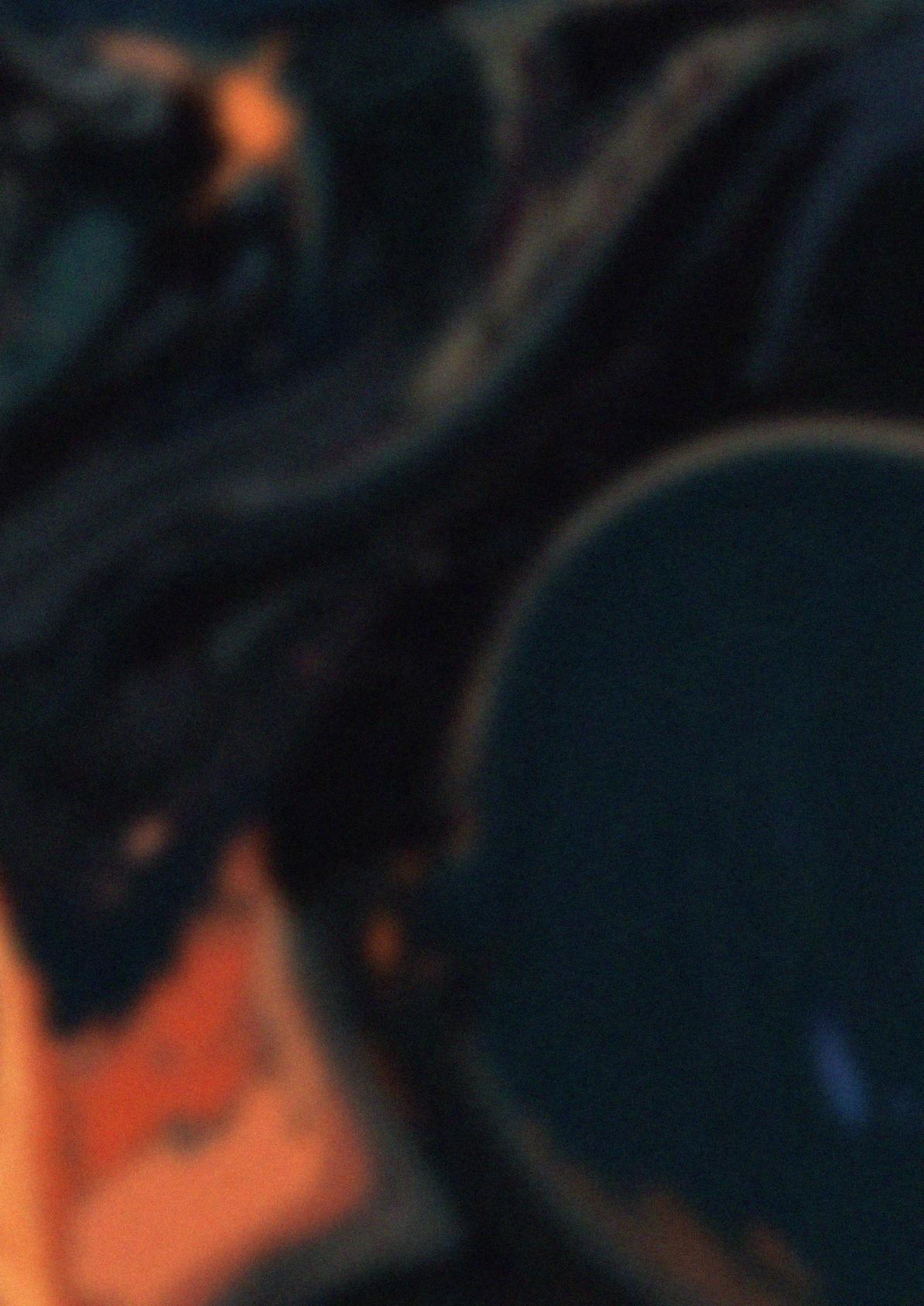
76
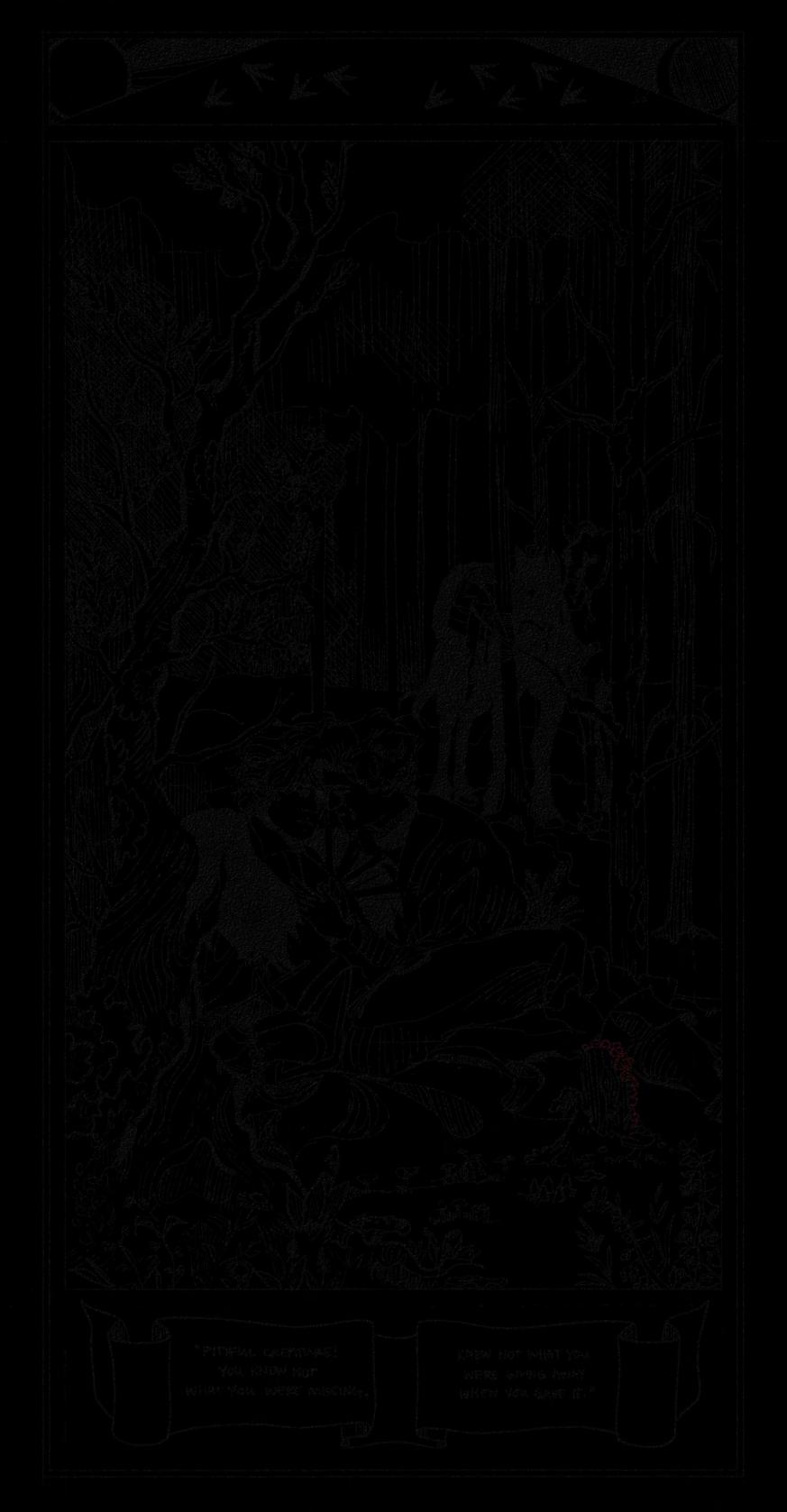
77
An American W-Wolf in London Zara Hashmi
Is the characteristic flaw of a smaller mind a lesser known, though not altogether dismissed, monster where transatlantic guilt is assuaged with a cleaved tongue the archives were wrong! (The museum was looted) but they are sure it is the crescent moon which marks the advent where all but the basest thoughts will be subsumed in a violent frenzy batwings that crave clear skies when they rain firebombs bullets that lie in wait in beasts before men who slick blood, laughing, on oil and paper for even in the worst of horrors they find comedy

And a crisp, mid-evening scream mollifies me and mine And then she’s awake And to our hollows we will return And on this the paintings did not lie We do burn in the sun redden and shrivel Palimpsest baptism like TV channel-change As if the houses were never burnt at all
But to query such a mode of expression, it’s rather crude The beast makes short work of things, a solitary cadaver The imperative is in understanding fighters are just Lost Boys, piteous and poor so it’s not transmorphing; more transubstantiation they are purer than those who study them

The Good Girl Gone Bad: The Victorian “Madwoman” in the 21st Century Charlotte Stump
CW: Discussion of mental health and abuse.
In 1847, Charlotte Brontë published a tale of women’s courage and resilience, embodied in the heroine orphan Jane Eyre. But Brontë’s novel also exposed a darker, shadowy side of feminine identity: Bertha Mason, the mad ex-wife of the male protagonist, Mr Rochester. Bertha is depicted as “wild”, “demonic”, “hysterical”, and “savage”. In 2022, we are familiar with this language. These are the adjectives we ascribe to women who have fallen from grace— Lindsay Lohan, Amanda Bynes, Britney Spears, and countless other women in the spotlight—all contemporary manifestations of the Victorian trope of the “madwoman”. A trope that presents women as either angel or monster, or in today’s context, the good girl gone bad. This binary representation of women is consistently found throughout the works of Victorian literary greats: Jane Austen, Charlotte Brontë, Mary Shelley, and George Eliot. Metaphors of locked rooms and enclosures plainly reflected the oppressive patriarchal structures that suppressed women’s liberty.
Why does the Victorian trope continue to hold relevance? Collectively, we expect women in the spotlight to fulfil a specific role—perhaps it is the role the media prescribed them, perhaps it is a role they choose themselves. And when these women inevitably display complexity of character, or a “flaw” that contradicts their assigned role, we ostracise them. This sequence of events is so deeply ingrained in our portrayal of womanhood that it transcends temporal and societal borders, remaining as relevant today as it was in Victorian
England. In Brontë’s novel, Mr Rochester felt compelled to marry Bertha Mason because she was rich, beautiful, and alluring. However, when he quickly discovered that she was violent and unpredictable, and that “madness” ran in her family, he secreted her away in the attic, later welcoming the innocent orphan governess, Jane, into his life. When Bertha’s “condition” is discussed, there is no attempt to understand her family’s history of mental illness nor her tumultuous experience moving from Jamaica to England. Bertha is “mad” and therefore flawed, so she must be physically and metaphorically removed from society.
Brontë’s characterisation of Bertha and Jane hints at the complexity of Victorian feminine identity without quite managing to discard the well-worn trope of the madwoman. For example, Brontë subverts Victorian convention by alluding to the similarities between Bertha and Jane—two seemingly polaropposite characters. In The Madwoman in the Attic, a feminist critique of Victorian literature, Sandra Gilbert and Susan Gubar describe Bertha as Jane’s “truest and darkest double”—the manifestation of Jane’s inner rage and rebellion from childhood. However, while Brontë alludes to the nuance of feminine identity, the novel still upholds the literary madwoman trope by never granting Bertha a voice to describe her suffering or incarceration. Her ultimate liberation is found only through death, when she burns Thornfield to the ground. Bertha remains a pariah, and Brontë’s novel finishes with Mr Rochester happily wedding Jane.
Victorian England’s obsession with the
trope of the madwoman is found in literature, art, and medical discourse. We can see this obsession resurfacing in the early 2000s tabloid-ridden culture that dramatised and relished young celebrities falling from grace. Amanda Bynes fell from childhood stardom to being a publicised party girl whose drink driving charges and drug problems caused her parents to take conservatorship. Lindsay Lohan went from being a beloved Disney star to the scandalous subject of magazines that exploited her every misstep and widely proclaimed that she “didn’t so much fall from grace as plummet”, as Stack Magazine put it. The media’s good girl gone bad narrative plays out over and over again, entrapping women like Lindsay and Amanda within a onedimensional character: the madwoman. These women have all been labelled crazy, hysterical, and messy, with the public collectively revelling in their spectacular “fall”.
The most prevalent reflection of the madwoman trope can be seen through the media’s depiction of the rise and fall of Britney Spears. Britney’s extraordinary rise to fame was accompanied by the hyper-sexualisation of her beauty and her brand. Her first single ‘…Baby One More Time’ featured the glowing 18 year old in a schoolgirl costume, both innocent and seductive. Britney’s public image was built on the angelic aura she possessed at 18 years old, perfectly conforming to feminine conventions of purity. Thus, her fall from grace was even more damning. The headlines in February 2007 followed Britney checking herself in and out of a rehab facility in 24 hours, shaving off all her hair, and attacking hounding media with
79
an umbrella. Britney’s brave act was a warning to the world: she would no longer be defined, nor entrapped, by her sexuality. But the media and general public would neither accept her defiance, nor contemplate their complicity in her breakdown. After Britney’s iconic stunt, she no longer satisfied her feminine role, and therefore the familiar Victorian narrative of “hysteria” followed.

After Britney’s breakdown, she was committed involuntarily to a psychiatric ward, had reduced visitation rights over her two sons, and was forced into a complex legal conservatorship: a modern-day Bertha Mason, locked in the attic. Even Framing Britney Spears, the documentary following the #FreeBritney movement, was created without her participation. The depiction of women in the 21st century is painfully reminiscent of Brontë’s one-dimensional portrayal of Bertha Mason—“hysterical” and “mad”—and still denies women the right to participate in the creation or direction of their characterisation.
Only recently has Britney herself contributed to the conversation. Appearing virtually in court in June 2021, Britney described the abusive nature of the conservatorship and the traumatised state in which it left her. She explained why she remained silent for so long— fear that the public’s response would be to belittle and mock her. Britney’s fear was well-founded; headlines in 2007 followed her breakdown hungrily, flaunting her “downward spiral from pop tart to deranged diva”. Britney’s conservatorship meant she had no control over her finances, her career, or even her physical body; however, following the trajectory of her life in the spotlight, it seems that Britney never had any control over her own narrative. The conservatorship was terminated in November 2021, and Britney has since regained her voice through her own social media account. However, tabloid journalism continues to enslave Britney within the madwoman trope, framing her sharing of emotional captions and nude photos on Instagram as a cry for
help rather than a legitimate expression of her emotions and sexuality. It is clear that the media will not allow Britney to step beyond the confines of the madwoman trope she has represented since the 2000s.
We must demand a more nuanced and multifaceted consideration of women’s narratives, with women’s voices at the centre. The language we ascribe to women in the public sphere matters—it entraps and exploits them. But through her social media, Britney is finally reclaiming her narrative. As many women continue to suffer from stereotyping and humiliation in the media, the characterisation of Bertha Mason and Britney Spears offers an important lesson. Can we pledge to accept “flawed”, complex women, or will we continue to condemn those who do not uphold their assigned role? Will Britney’s voice cut through, or does she have to burn down the attic to make her point?
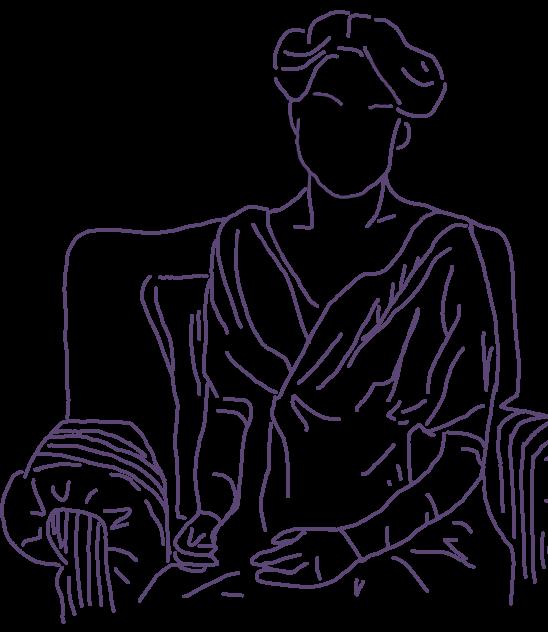
80
Perfume Imogen McDonald
Hanging from my collarbone: a slither of lace Flowered with presumed lust
Lace that is holding the part of me That will connect me to my children And that connects me to the grope And pull of an anonymously experienced hand
Girls are not girls Except in a camouflage of candied ornaments The afterlife is not the afterlife Except when camouflaged as paradise
A rip of the lace The rip of a gun The trained, hardened hand Hacking out the roots
A shard A flare of a façade
What it is the sugared lace conceals Underneath the dainty floral scents
A $12.99 concealer that seeps into my pores Like a sponge absorbs the scum of shower tiles
Dirt thick and grime and rot Like the remnants within my laced undies Ripped and planted in the bin The bin settled below the shower tiles
On top of a rose-red drenched cotton liner
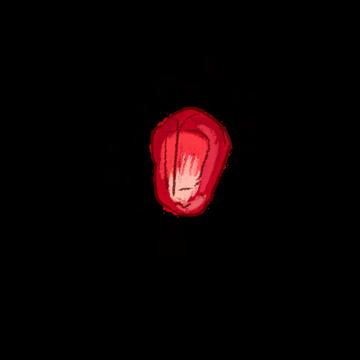




The same rose red that stains my lips My lips that conceal an infestation of sorts My own little ecosystem

No— not mine but bloomed by hundreds of men Who have filled me up with that same presumed lust Sometimes I ponder my own discharge As the chosen specimen for my biology labs
To see if I can grow my own roses With which to brew my dainty perfume Floral and sweet and syrupy Dripping with pure rot
A shard A flare of a façade




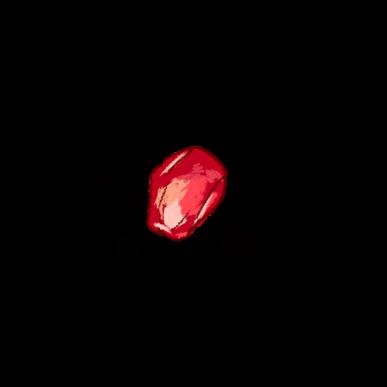
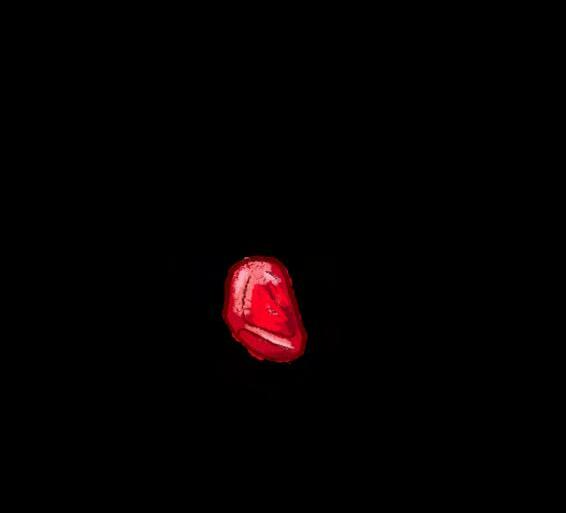

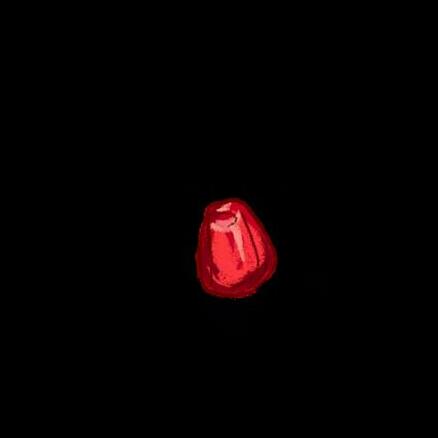


82
Sub Rosa Confessions collected by Lucy Sorensen
Harpocrates ( Ἁρποκράτης): the god of silence and secrecy.
Adapted by Greek mythology, Harpocrates originated from the Egyptian god Horus. Harpocrates was depicted as a small boy, with his right index finger held to his lips. Greek mythology interpreted Harpocrates’s gesture as a need for silence.
The key symbol associated with Harpocrates was a rose.

Sub rosa : under the rose of secrecy.
According to myth, a rose was given to Harpocrates to ensure that his mother’s indiscretions were kept silent. This led to roses often being painted within the walls of Roman banquet halls, suggesting the secrecy of discussion within— particularly when conversations were held under the influence of wine.
Although he has now passed, Harpocrates continues to carry the weight of all secrets in the afterlife.
* * *
Throughout our lives, certain truths are encouraged to be kept secret. Aspects of the self are silenced, with many never to be revealed. Such secrecy can become heavy. Sometimes, we may feel inauthentic, isolated, and even fraudulent, as a result of what we are keeping hidden inside. Sub rosa, this burden can be lifted. Through confession, the most hidden aspects of the self may come to light, for Harpocrates’s rose will carry the weight of confidentiality.
Welcome to the confessional.
Protected by the rose of Harpocrates, you may speak your secrecy. For your burdens will be lifted, and authenticity restored.
“I think I should’ve maybe taken a gap year.”
“Sometimes I lie about what I’m doing because I want to seem more interesting to people I’m into… SUE ME. Like once, someone messaged me at 10pm and I set up my room plants behind me, turned the lights off, and took a picture so it looked like I was out in the bush somewhere, and then went back to bed…”
“I’m a compulsive liar and hate myself for it.”
“I’m really lazy and don’t put the work in and then get shocked when I get a bad mark.”
“I am aggressively insecure about my age, and how people perceive and treat me because of it. I never know if I am truly ‘in’ with people or if they’re just being nice to me because of the age difference.”
“Queer hook-up culture scares me. I want to hook up with girls, but I feel like I can’t reject any of the girls who pursue me. I feel like I have to hook up with any woman to prove I am Bi like it is the Summer Bisexual Olympics in Moose. But I want to actually like someone before they stick their tongue down my throat, I’m sorry.”
“I feel the urge to laugh when a man is
being vulnerable with me. I swear they play the victim and are really dramatic because they like the feeling of being vulnerable for once.”
“I care way too much about what other people think of me.”
“I want to move out and break my lease. I currently live with my best friend, but living together has become really challenging for our friendship. She’s very difficult to live with and makes me feel like I’m always in the wrong. But I really don’t want to hurt her feelings by moving out, and I also don’t even know who else I would live with.”
“I think I have so much internalised misogyny.”
“I haven’t had a home-cooked meal in months. I’ve been living off Uber Eats, and it’s devastated my savings.”
“I hate dating. For me, dating is just so overwhelming. The thought of meeting up with a total stranger for a drink floods me with anxiety. I worry that they won’t like me, that I will want to leave but won’t be able to think of any excuses, or that there will be too many awkward silences. I get so worked up thinking about all these possibilities that I would rather not go on the date altogether. I wish it was easier to meet people organically. Or more normalised to be single without even attempting to casually date.”
“I graduate next year and I have absolutely no idea what I’m going to do with my life.”
83
‘I’m Glad My Mom Died’: Jennette McCurdy and Liberation
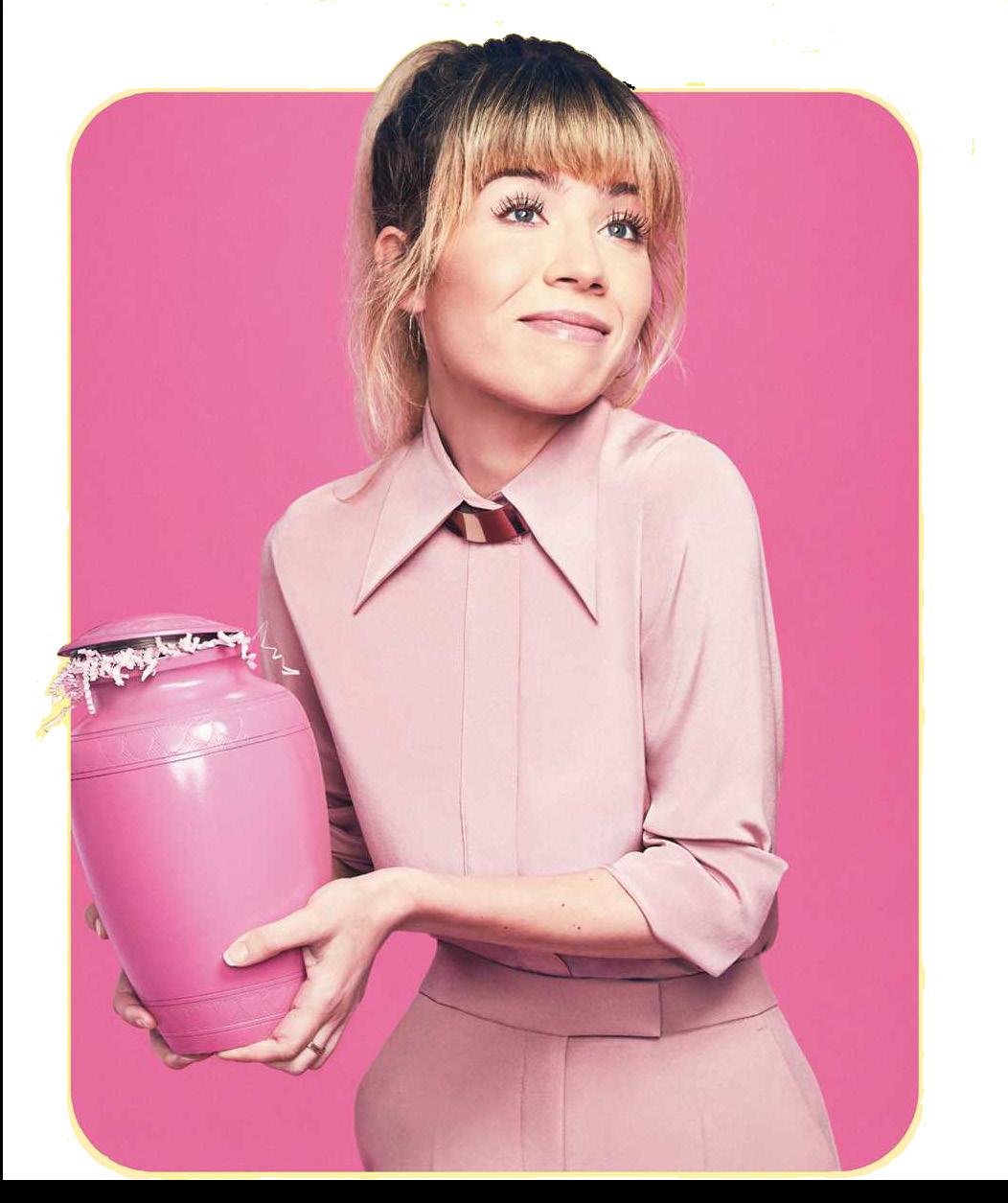
Isabella Keith
CW: Discussions of sexual and emotional abuse, sexual assault, sexual harassment, death, and eating disorders.
Like many older Gen Zs, I grew up on a diet of Nickelodeon and Disney Channel. iCarly was a regular part of this rotation, and Jennette McCurdy’s Sam Puckett was a particular favourite character. A decade on from iCarly wrapping up and a few years after she stepped back from acting, McCurdy has released a memoir: I’m Glad My Mom Died. It’s a confronting title, albeit one she has proven she deserves to use. I devoured the book the day it came out, in a twohour sitting while slightly jetlagged in a Korean hotel room that was suffering from a blackout, having downloaded the eBook a few hours earlier. It’s written in a self-effacing series of bite-sized vignettes, though the content is anything but bite-sized. In the following days, McCurdy’s words continued to swim around my head.
The title is, of course, a headline
grabber that could easily be written off as unnecessarily attention-seeking. But McCurdy’s description of the abuse she suffered at the hand of her mother, painstakingly laid out over the 91 short chapters, inductively reasons towards it as an inevitable conclusion: in a recent promotional interview, she told Good Morning America Host George
Stephanopoulos that “I get that it’s attention grabbing, but it’s also something that I mean sincerely.” 55 of the chapters come ‘before’—that is, before her mother’s death from cancer— and 36 are ‘after’. Each one is written in the present tense; where events occurred during McCurdy’s childhood, she inhabits that point of view. The death is a central element of the memoir and serves as the event around which it is framed.
However, the shocking events that occur ‘before’ are equally as important as those that come ‘after’, and emblemise McCurdy’s reckoning with what, if anything, she owes to the woman who subjected her to emotional and sexual abuse from early childhood. Throughout the memoir, she grapples with the aftermath of her mother’s death, navigating grief, trauma, relationships, eating disorders, and obsessive-compulsive disorder. No detail is spared: it’s a perceptive, deeply honest reflection written in a rambling, revealing, bare prose. The topics McCurdy broaches are difficult ones, and, at times, are hard to read, but the way she reflects on the
84
“layers of grief” left by her mother makes it even harder to stop: “The initial grief of her passing, then the grief of accepting her abuse and exploitation of me, and finally the grief that surfaces now when I miss her and start to cry because I do still miss her.”
The brevity of each chapter—often only a couple of pages—lends itself to the slightly erratic nature of the narrative. Some are funny, some are bleak, some are angry. It’s a bit like weekly coffee catchups with a close friend going through a difficult time, receiving dribs and drabs of updates on their life, full of recounted dialogue. McCurdy’s story is also a non-linear tale of recovery; a reckoning full of false starts, self-doubt, and what she refers to as “slips”. She strays from stereotypical stories of recovery with a brutal self-honesty and self-reflection; rather than reflecting on her life from a distant vantage point, McCurdy crawls inside the skin of her former self and directly confronts her past. Rather than aligning herself with the polished, “resolved” stories of difficult pasts we so often encounter from figures in the public eye, McCurdy never promises that everything is completely “fixed” now. Her memoir is one which truly reckons with the lasting effects of trauma; the baggage that never quite falls away.
Her story is, of course, also occurring within a broader conversation about Dan Schneider, creator of iCarly and other Nickelodeon shows, which has been brewing for the past few years among the tide of the #MeToo movement. Throughout the memoir,
McCurdy refers to a network official called “The Creator”, who has predatory tendencies, giving unwanted shoulder massages and encouraging underage actors to drink with him. The Creator is never explicitly linked to Schneider— who left Nickelodeon in 2018 amid widespread allegations of inappropriate behaviour—ostensibly to avoid defamation proceedings and other legal complications, but the similarities to other accusations made against Schneider are telling. McCurdy adds to these allegations, but also places them within the broader context of allegations made against industry executives by child actors, and reminds us that the exploitation and abuse they can be exposed to doesn’t necessarily just occur on set.
McCurdy also discusses her relationship with Ariana Grande, her co-star in the iCarly and Victorious spinoff, Sam and Cat. This has garnered significant media attention and tabloid headlines about the “tension” and “drama” between the two, effectively glossing over the main point of the book. I’m Glad My Mom Died is far from a standard, gossipy celebrity memoir; rather, McCurdy increasingly breaks from the traditions of the genre with each confession, discussing her jealousy towards Grande as part of her own reckoning with her upbringing: “I grew up in Garbage Grove in a goddamned hoarder house with a cancerous mom who constantly wept about not being able to afford rent and utility bills. Ariana grew up in Boca Raton, Florida, an incredibly wealthy, idyllic town, with a healthy mom who could buy her whatever she wanted,
whenever she wanted—Gucci bags, fancy vacations, Chanel outfits.” She also shares that the Nickelodeon spinoff was originally meant to be called Just Puckett, and only feature McCurdy’s character. McCurdy’s revelations are far from a drama-driven, hate-filled takedown of Grande: by owning up to her feelings of jealousy and comparison, she exposes her own vulnerabilities. The chapter serves as a timely reminder that celebrities, too, are prone to jealousy and insecurities. It also stuck out to me as quite a graceful, self-perceptive reflection on why McCurdy felt the way she did—she does not excuse her behaviour, but makes sense of it in a logical, rational way.
All at once, McCurdy’s memoir is a blunt, honest, keenly self-aware reflection on grief, trauma, being a child actor, family estrangement, abusive parents, and recovery. McCurdy embarks on a thoughtful exercise in self-narrative, and in trusting the truth of survivors of child abuse. As McCurdy works through the trauma of her past, she opens up a place for discussions not only about the child acting industry, but about abusive parent-child relationships more broadly. She challenges our views of what it means to grieve, and how we relate to the dead; the importance of having our experiences validated. It is a brave, full-bodied confessional-style memoir centred on the liberation that her mother’s death afforded her. It is a step closer to an answer to the question McCurdy sets out in the opening lines of the book, as her mother is about to die: “So without Mom, who am I supposed to be now?”
85
Abortion Inaccessibility in a Post-Roe Australia
Eliza Wilson
CW: Abortion, references to rape and incest.
On 24 July this year, I stared at my phone in shock, struggling to digest the words splashed across my screen. Frantically, I skimmed through each news article, trying to make sense of it all. I thought the world had progressed; I thought this fundamental right would remain safe in a country for which it had been fought with such perseverance. For weeks after the Supreme Court’s ruling, I thought of the millions this would impact, the countless lives that would be lost—the futures of so many tainted with uncertainty.
The 2022 case of Dobbs v. Jackson Women’s Health Organisation ultimately led to the overturning of Roe v. Wade. In 1973, Roe established the right to an abortion until the end of the second trimester, the time at which a foetus is believed to become viable. This year, however, the US Supreme Court decided that the Constitution does not recognise the right to abortion, and therefore “the authority to regulate abortion is returned to the people and their elected representatives”. Now each US state can make their own laws regarding abortion. As of 18 September 2022, 14 states have banned abortion, with at least eight more expected to follow suit by the end of this year. Restrictions vary from state to state, with some not even allowing
to abortions, creating situations in which illegal (and usually unsafe) abortions are sought, or people are forced to carry their pregnancies to term. Unsatisfied with what I had read and wanting to learn more about the impact of the Court’s reversal, I spoke to ANU Gender Studies Professor Natasha Szuhan. Speaking about the decision, Szuhan noted the “bodily and mental stress of an actual pregnancy” that will result due to the new restrictions, and highlighted how abortion is both a physical experience and a psychological one. People face a plethora of emotions both before and after the procedure, including relief, pain, calmness, anxiety, and grief—and without proper support, these effects can come with a high risk of jeopardising individuals’ safety. Further, Szuhan stressed “how personal
and individuated responses are to pregnancy, and therefore its termination”, and the multiplicity of ways one may be affected.
One potential impact is the “inherent labour involved in the process.” As Szuhan pointed out, “even the most desired pregnancy warrants nearconstant psychological and physical investment. [There is a] literal investment of growing a living being, along with the mental preparation for it in all its stages.” Forcing this burden upon someone who does not wish it is a form of cruelty that can have lifelong impacts, particularly given that access to respectful and traumainformed abortion care has also been threatened. As discussed, abortion can be an emotional and traumatising experience. Previously, US citizens could be assured that doctors were legally obliged to act in their best interests and that they had the option of counselling. Now, abortions in the US may be undertaken by illegitimate practitioners with no legal responsibility to care. No oversight, no one checking safe practices, no one monitoring the person’s mental health, and no one providing abortion aftercare.
While abortion has been made legally obtainable in all of Australia’s jurisdictions as of this year, its accessibility remains a paramount issue. When I asked my mum—a

86
midwife who has worked in Victoria, South Australia, and Queensland— about the potential psychological impacts of abortion inaccessibility, she emphasised the necessity of ease of access during what can already be a traumatic and emotional time. One of the worst cases she dealt with was due to the inaccessibility of abortion in Western Australia, in which the woman in question had to travel alone to eastern Australia for a medically required abortion. The woman’s emotional distress was sobering for her medical professionals, and she needed extra care to ensure a path to physical and emotional healing. The continued inaccessibility of abortions for regional, rural, and remote Australians makes it clear that our right to an abortion is still not being fulfilled. How is it fair that someone may have to travel hundreds of kilometres, alone, and then fork out hundreds of dollars for a private clinic to access necessary medical care?
Interested in learning more about the history of abortion in post-invasion Australia, I sat down with Frank Bongiorno, Australian historian and author of The Sex Lives of Australians: A History. We discussed the process of legalisation, as well as the history of abortion practises. He explained that abortion has “been widely practised in Australia, [yet] was entangled with police corruption due to its illegality”. The legalisation of abortion varied greatly from state to state. Bongiorno notes that it was “controversially legalised … in South Australia in 1969, yet had many restrictions and accessibility issues”. Abortion became legal in Victoria in 1972 after the R v. Davidson case found a doctor not guilty for providing an abortion based on the woman’s health. In the following decades, abortion was slowly decriminalised in various states through criminal cases that similarly found doctors not guilty.
Bongiorno highlighted the fact that the history of abortion in Australia is filled with activists pushing for its legality and accessibility. In the 1970s, Australian feminist group Women’s Abortion Action Campaign lobbied for “abortion at no cost, with no legal restrictions, no quotas in public hospitals, lots of good clinics run by women, plenty of information about abortion, contraception, and sexuality, no guilt trips, and no discrimination against young, Black, or migrant
women”. Fifty years on, discrimination and inaccessibility remain prominent issues in Australia despite the immense efforts of numerous activists. This continuing inaccessibility is recognised and echoed by some politicians, with MP Tanya Plibersek explaining that “for many women, abortions are unaffordable and unattainable. The legal right to access a termination isn’t much use to a homeless teenager when the upfront cost of an abortion is more than $500.”
After speaking with my interviewees for this article, I realised that the overturning of Roe has had a collective impact on our trust in institutions to uphold our rights. For many years, we have experienced a reliable script: issues are fought for, through demonstrations, lobbying, and activism. After decades of campaigning for abortion rights in the US and Australia, it seemed fair to presume that even a small amount of progress had been made; that this work had paid off. But this assumption was naïve. Issues that once felt somewhat overcome are now major anxieties again. The overturning of Roe traps us in a situation where we must question if hard-fought rights and laws will ever be safe.
This is exhausting. For so many—from the activists of the ‘60s and ‘70s who originally fought for these laws, to the current generations grappling with the fact that we must resume this fight— issue fatigue is real. This is why this ruling is of global importance. The fight for safe and legal abortions will never be over. Australia has had a long history of staunch, fearless, trailblazing activism for the legalisation of and safe access to abortion, and this legacy is continuing with the many protestors who stand in solidarity with the US.
Australia’s response to Roe's overturning has been immense, with protestors immediately taking to the streets. Tessa Hemming, one such participant, stated the prevailing reason for her attendance was “to stand in solidarity with those in the United States who have had their bodily autonomy taken away”. The “[heartbreak she and others felt] for the women, transgender, non-binary, and gender-expansive people whom the overturning impacts” indicates the global empathy for this assault on rights.
In Australia, the fear of conservative
politicians restricting abortion access remains similarly present, and this fear is not without precedent. In times of the Howard government, conservative Catholic Senator Brian Harradine used his position to ban the manufacture and use of the abortion drug RU-486 (mifepristone) in Australia. Further, Harradine forged an agreement with the Howard government called the “Family Planning Guidelines”, modelled on the US’ “Mexico City Gag” rule, banning Australian foreign aid from funding organisations that provide abortionrelated services. These guidelines were only overturned in 2009.
Hemming stated that, given the potential of “politicians in power getting excited for what is happening in America”, showing up at the protests is vital to send the message that this will not be accepted. The reignited fear of complacency fuels many to fight. While the ruling may not yet directly impact us here in Australia, it demonstrates, as Hemming explained, “[that] we cannot afford to be complacent and feel secure in the laws we have. The assault on rights as seen in the US, and previously in Poland, shows the fragility of a right”.
These protests enable people to reassert their voices in the wake of the fear elicited by the Supreme Court’s decision, and the wide demographic of their attendees signifies the universal impact this ruling has had. “People from all walks of life showed up to chant and march together”, Hemming noted, “mothers with young daughters, older women who fought for our rights before our time, men showing up for the women in their lives, a legion of young women, and a huge amount of queer people”. It is so important to remember the people who have fought this battle for many years, and the continued support from each subsequent generation.
This is why protests must continue, and why advocacy remains vital in Australia. Echoing the petitions of Australia’s 1970s abortion activists, “abortion on demand”—meaning access for all—is still a right we must fight for. As shown by the many protests still occurring, we are not giving up on this right. Drawing from the inspiration and energy of generations before, the fight for legal and accessible abortions will continue despite this heartbreaking global setback.
87

88
(2022)
Mandy, Sebastiàn Ungco
True Love Aveline Yang
When you stopped loving me Revulsion seeped To every extremity Bombing my body with blight Shot patterns of slits and circles Marking every conceivable scar

In every mirror I passed I only saw your hatred Crawling skin plastered in toxic labels
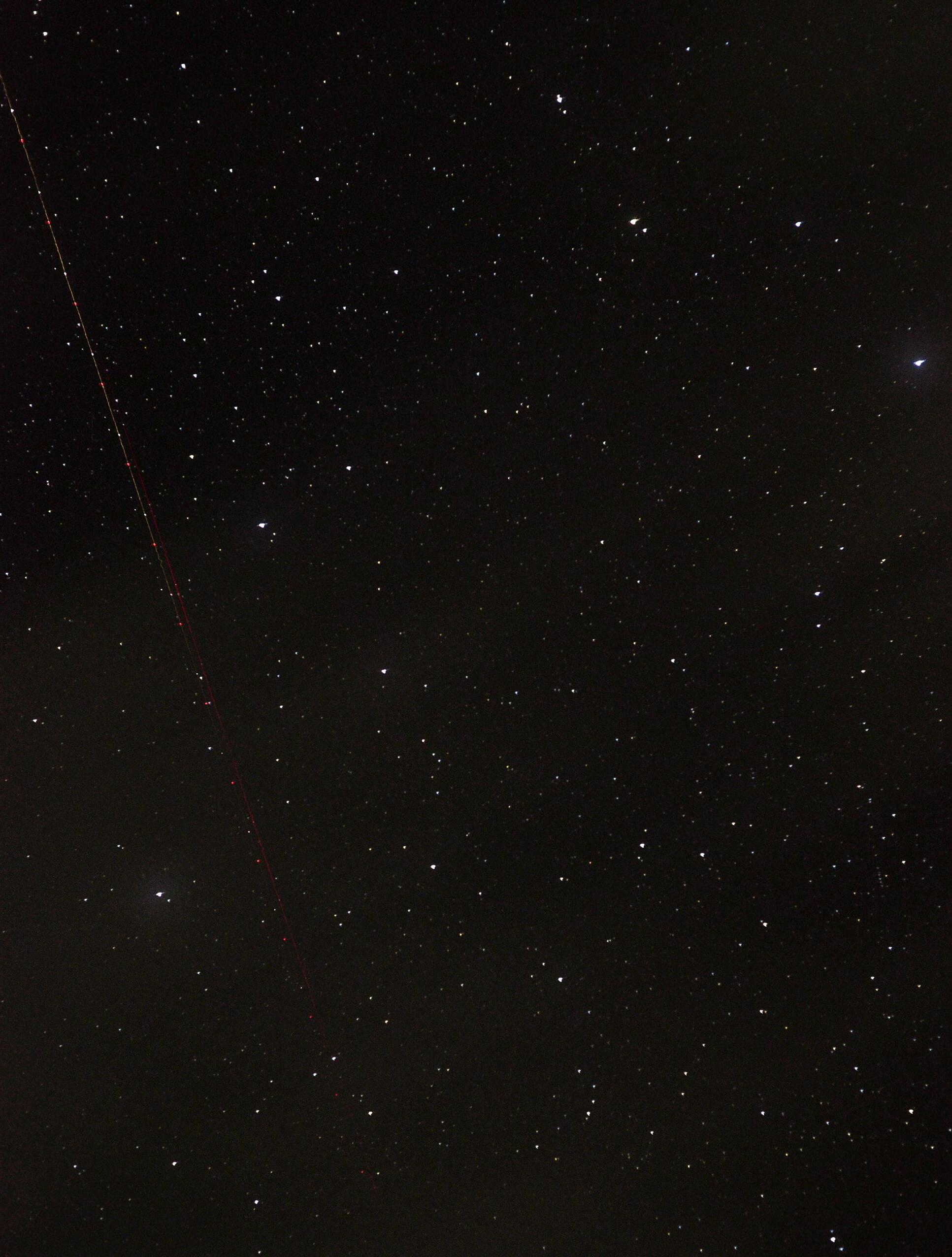
WARNING: FRAGILE You made me a stranger To myself
Mired in the mundane days I mangle myself anew Purging your bile and wretch Scraping the film of us off my bones Beating away the strangling smog That poisons my dreams Slowly I see me clearer Than I could before you –Loosen your chokehold, darling I am becoming mine again
Why We Need to Forget About Confidence Culture Eugenie Maynard
CW: Discussion of mental health, bullying, and ableism.
Just fake it till you make it. Everyone can do it—you’re just not trying hard enough. Visualise yourself as a successful person, and you can achieve anything! These are sentiments everyone has heard in some form, and probably accepted. Yet, who do they really serve? Are they truly inspiring, rousing calls for self-belief, or simply unrealistic ideals designed to shame people for their responses to systemic problems?
Confidence is defined as “a belief in your own ability to do things and be successful.” We imagine confidence as something accessible to each of us, provided we love ourselves enough to obtain self-belief. This definition is sold to us as an aspiration we should strive toward. In reality, it is just another unattainable goal packaged up with messaging around toxic positivity, “rise and grind” culture, and #girlboss feminism, all of which create the illusion that we are the ultimate guiding force in our lives, and that despite cultural and structural forces, anyone can achieve anything if they just put their minds to it. This deliberate ignorance toward the realities of structural oppression epitomises the actuality of commodified confidence—that it exists in order to create a profit. Profits from self-help guides. Profits from sales driven by influencer marketing on social media. Profits from infinitely increasing productivity as we are told
to produce more and more, to do more and be more, and that if we do, maybe—just maybe—we will reach this unachievable goal of perfect confidence and finally feel like we are enough. It is not about individuals becoming their best selves, but rather about attempting to fit everyone into an extroverted, overworked mould that makes them the most valuable producers possible.
Confidence is marketed to us as both the most important ingredient for success and something within everyone’s reach. Growing up as a shy, quiet kid, I was regularly told that I “just needed to be more confident”, more outgoing, and then I’d fit in with the other kids and be happier. It turns out that the missing ingredient wasn’t confidence, but serotonin, as I would find out years later; I have an anxiety disorder, and probably have had it for most of my life. The fact that I didn’t fit in with the other kids was likely related to my anxiety and the different worlds my classmates and I came from, rather than a mere lack of confidence. As anyone who has struggled with anxiety or depression can attest, unwavering self-love, selfbelief, and self-promotion are often easier said than done and definitely not within everyone’s reach. The notion that everyone can love and believe in themselves unconditionally—and that if they don’t, then there’s something innately wrong with them—is rooted in ableism that refuses to engage with the reality of those who live with mental illness. Yet I’ve been told countless times
that this is all I must do in order to cure my anxiety. I spent hours searching inside for this mysterious, elusive “confidence” that I’m supposed to have, only to feel more and more hopeless. I was too broken to ever be enough to find it. The search has manifested itself in many ways throughout my life, such as not volunteering to take on roles in school or my college because I thought I didn’t have the “confidence” required for them. It has led me to doubt my abilities and hold myself back, and is something I fight to this day. This is the insidious truth of confidence culture. It ties up our self-worth within impossible ideals of self-love, of constant perfection, and continuous productivity required to prove that the façade of confidence has worked—that we are successful.
Confidence culture is particularly targeted at women. On social media, we are constantly fed reels of daily routines that involve waking up at 5am, working out, and meal prepping the healthiest foods before going to work at some high-powered job, all without a single hair ever falling out of place. I cannot count the number of times I have seen these videos and, ironically, felt even worse about myself because I’m unable to reach this level of perfection and confidence. As someone whose algorithm has sussed out that confidence is not my forte, I constantly get targeted ads for planners that will improve my productivity, or with tips on how I can fake my confidence. These products and courses all come at a premium price
90
all around us. For the proposition that confidence is the missing ingredient for success to be true, we would all have to start at the same level. And that just isn’t the case. According to the ABS, in 2022 the average woman in Australia

unaddressed. Acknowledging the barriers that exist for large portions of the population to be “confident” and restructuring social narratives to provide space for all people to authentically and openly be themselves would be a very
level, then maybe they can still be of some value. But until that day, telling someone like me that in order to be successful I need to become more confident is never going to work. And it shouldn’t have to.
Prime Time
Sydney Lang
When I look to the older women in my life, it is most often with a deep admiration. I have a very funny and very smart mother who does as she pleases and is never spoken over: she is beautiful, and anything but frail. Yet, when I look at the older women in the film and television from my childhood, I see an uncomfortably different picture. Growing up in an environment where I saw not a single openly queer person within my family or friendship circles, trying to envision what my future would look like was strange. When queerness was represented in film and television, it was most often by either camp gay men, or angry, masculine queer women. For most of my life, I failed to accept that I was gay, and when I finally did, I had still never seen an older queer woman on screen who reflected how I felt. This had a profound effect on me; seeing no examples of a happy future for people you relate to, it can be difficult to embrace, let alone accept your identity. The industry’s lack of nuanced representation is not limited to queerness, but applies to women in general who, especially once reaching a certain age, find the extent of their roles on screen so narrow and predictable that their realities are barely recognisable.
A 2019 report titled “Frail, Frumpy
and Forgotten” found that only 25.3% of women characters on-screen were over the age of 50, and not one of those women held a lead role. When these

scene Betty appears pitiful, a na ïve drag in her failing family. She is a perfect example of the role older women are confined to: the trope of the frail and frumpy aged woman—despite her actress being only 43 in the film. Often stood behind her husband, her character is ignored, undesirable, compliant, and sad. Muriel's Wedding portrays this mother of five as an unstable woman, eventually culminating in her tragic suicide at the end of the film, which, although eliciting momentary sadness from her family, is moved on from concerningly fast. In her portrayal, Betty reminds us of the cultural misogyny engrained not only within media, but within our households. The social and economic welfare of many women is dependent on the authority of her husband, whose revered and paid labour is deemed more legitimate than “women's” work.
Betty’s reduction to petty theft and apparent fiscal incompetency is no fault of her own, but the result of an unkind and ungrateful husband’s dictations. Betty exists as a character painfully representative of the invisible and uninteresting roles delegated to ageing women in film and in society.
If you’ve ever watched the movie Muriel’s Wedding, you would remember Muriel’s mother, Betty Heslop. In each
On the occasion that a woman over 50 on-screen is not tied relentlessly to her husband or children, she is almost
92
Women over 50 are not past their prime, but the men who try to write them might be.
Artwork by Alexandra Enache.
certainly longing to be. The persistent idea of women feeling unfulfilled without marriage or children is starkly different from the on-screen portrayal of older single men, whose mature age in film does not reduce their sexuality, but rather grants them a wealth of sexual knowledge. Older men are silver foxes, often wealthy and successful, smooth talking and far from past their prime. These contrasting images—likely the white male director’s perception—are evidence of a trope deeply engrained in society painting he as the subject, and all others as his backdrop. My mother has raised six children—she adopted the sixth—and throughout her life she has welcomed countless more people into our home. She often cooked for nine people every night, she always had a story to tell, and she has never once stopped making us laugh. My mother is exceptional, but she is not the exception—the stories being told on our screens are simply failing to appreciate the work of women not defined by these stereotypes.
Beyond the obvious problems of such depictions, the roles of older women in film and television also suffer deeply from a lack of diversity. Not just diversity of characterisation, but of intersection. As the conversation surrounding representation in media continues to shift in a somewhat positive direction, the industry’s continued domination by white men means it is still failing to be quiet for the voices that these men deem unattractive or uninteresting. Not only is the film and television industry stuck with this rotting idea of older women being frumpy, sexless mothers without achievements beyond the family, but they’re also all too often white, cisgender, and heterosexual. This isn’t to say that today’s industry is not shifting the narrative; nevertheless, it still appears to be burdened by an inability to tell diverse stories of the ageing woman’s experience. The heteronormative whitewashing of film and television has always been an overwhelming flaw in the film industry. There exists a litany of tropes assigned to older women of colour; racial stereotypes pervasively restrict the roles given to women over 50. The racist characterisation of older
Asian women as stern and restrictive, and the “sassy” role assigned to older Black women, among many others, are all tropes that designate women to roles perpetuating misunderstanding.
In this era of screen, so much of our understanding about lives outside our own has come from television—from what we watched after school to what we now binge on Netflix. When these tropes are employed, not only are they the product of lazy writing, but they also reflect harmful assumptions. While tropes shift and representations seem to change, many still find roots in harmful places. Racial tropes in the media often play into deeply harmful perpetuations of fetishisation and sexualisation, originating in racist rhetoric surrounding BIPOC women and views that were formed and have been reinforced by white men for generations. One of the most glaring examples is the perpetuation of the “mammy” stereotype of older Black women, a trope rooted in slavery and the Jim Crow era. The “mammy” role refers to the depiction of Black women in America fulfilling the role of caregivers, often nannying the children of white, affluent families. Whilst the role of the caregiver has evolved, it has not disappeared; it is currently resurfacing in the form of the therapist figure, usually for white and often wealthy characters. With examples in Broad City as well as Grace and Frankie —both shows centring white women—the trope fails to give depth to these women’s roles beyond their relationship with a white character. Not only this, but it perpetuates the assumption that Black women owe others a degree of niceness or hospitality, and validates the history of white feminism’s dismissive treatment of women of colour. In a 2019 article for The Conversation, professor Cheryl Thompson astutely notes that “this [trope] creates a racial dynamic where people of colour are required to maintain white comfort to survive.” Not only do these one-dimensional representations stifle the futures women see for themselves, but they also dramatically influence society’s views toward the women in our lives, often with dangerous results.
The way the film industry still struggles to
give nuance or character development to the roles of older women is embarrassing. However, queer and BIPOC representation in the media is gradually expanding, and television shows such as Euphoria and Sex Education are paving the way for mainstream media to expand its scope. Despite its flaws, Grace and Frankie manages to depict older women in a light more reflective of the truth—written by the actors who play the titular characters, it follows a friendship between two women and their development of sex toys for older women, acknowledging their sexuality as something that is changing but not disappearing. More recently, A League of Their Own stars a largely queer cast, and focuses on the anxieties of queerness during a less-accepting 1940s America and the “All-American” women’s baseball league. The series both portrays queerness honestly and delves into the deeper challenges felt by a queer Black woman. Maxine—whose experiences are not sugar-coated to appear similar to her white cast members’, nor ignored—is written with true depth and acknowledgement of intersection; the show expresses Maxine’s own reckoning with sexuality and the struggles of her transgender uncle, Bert. Throughout the show, we engage with an array of genuine queer experiences, young and old; whilst each character is faced with real challenges, none are reduced to their struggles or stereotypes.
More and more, we are hearing the voices of women who are not “past their prime” and are not overlooked, but who have lived long enough to see through the stupidity of those who think it their place to tell a story that isn’t their own. While there is always more to be done, it is an honest relief to see film and television slowly presenting the voices it has so long kept quiet. Representation in the media is deeply important—the repetition of language and imagery solidifies ideas into culture, and since the film and television industry is ubiquitous in our lives, it is instrumentally influential. With realistic and diverse portrayals on-screen, opportunities widen, and cultural expectations—if not totally extinguished—are broadened for the better.
93
Ode to Susan Cinnamone
Winchester

The books don’t tell us what happened to Susan. She is left alive in this world at the end, having by then turned into a rather silly, conceited young woman. But there’s plenty of time for her to mend and perhaps she will get to Aslan’s country in the end... in her own way. I could not write that story myself. Not that I have no hope of Susan’s ever getting to Aslan’s country, but because I have a feeling that the story of her journey would be longer and more like a grown-up novel than I wanted to write. But I may be mistaken. Why not try it yourself?
— C. S. Lewis
let’s pretend, for a minute, that the stories are real. let’s pretend that the western woods exist beyond the idle imagination of schoolchildren untethered; beyond the turbid dustlight, kicked up by the lodging of curious fingers beneath a wartime shroud.

let’s pretend, for a minute, that a country can exist in a closet—that a single atom split into millions of miles with the slow deflation of a lung caught in exhale and wrote your name into its seams as a lost thing to be returned.
fancy that, susan— thinking of all the funny games you used to play, when you thought yourself a child.
but you are too old to keep playing pretend, and you are too tired to dream of what could be in this empty universe— so i shall dream it for you.
you do not go home. not yet, not now. there is no frozen lake to guide you through the melting snow, no siren-star awaiting your arrival at the edge of the eastern sea—hunting ghosts had always been easier when you counted yourself among them.
in another life, you keep a horn at your hip like lipstick in your purse; in another life, you call them back to your side, easy as breathing. but nothing comes easily anymore, breathing least of all.
so instead, you remain a worshipper in swing shoes, bathing in the glow of fluorescent lights and covetous eyes until you’re spinning fast enough that you feel as if you are only an inch away from finally wrenching your wretched soul out of its tomb of a body; until you believe you have a chance at running back to where it all began.
and what a surprise, susan, to the men who think of you as a light in the darkness, a vapid mystery to be solved; imagine telling them you’ve been dead, dead, dead all along. ghost hunting is easier when you tell yourself you are one of them
(let’s pretend for a minute, susan, that you are not already armed with a lie— would the truth change whether you saw the light at the end of the tunnel

or the train?)
we’ll pretend, for a minute, that it doesn’t matter even on the nights when you dream that you get exactly what you deserve— a golden lion lifting his mighty paws to tie your body to a cold stone table until your wrists and ankles burn brighter than the unforgiving blaze of the radiant southern sun that was once yours until the watching wolves and wooses and wraiths give way to a witch who bends to touch her lips to your ear and asks if you ever really thought that you were different after all.
but, of course, you don’t dream of what you know— you dream of what you fear. how does it feel, susan, knowing your heart is a graveyard?
is it skill or shield, the way you create dust from what was once gold?
and yet, you are out of places to run, susan—so you seek solace beneath steeples, tracing the footprints of the dead back to where you saw them last (was it here? or perhaps over butter and jam at the breakfast table? on the far side of a door in the air?) and sinking to your knees between the pews, watching their shadows drift from wall to wall as matter merges with memory; as the truth muddies your lies.
keep listening to the sound of their voices. it isn’t easy, susan—but maybe someday, you’ll remember your part in the harmony.
and when your dreams become finally kind you will dream of the place where the sky at last dips his head to plant a kiss upon the pillowy head of the grass-green earth and the sea cradles a smattering of gentle lilies in her palms. it’s funny, the way that words mutate the longer you keep them in your throat. sister. traitor. susan.
lily.

your god may have sung the stars to life a thousand years before you stepped across the threshold of spare oom but you—you know exactly what it means to be reborn.
you will go home.
Trapped C. E. Winn
About the Artist
C. E. Winn is a fourth-year student completing a Bachelor of Science and a Bachelor of Arts at the ANU. Her majors are Human Biology and Biological Anthropology. Winn’s love of art came from her family—many of whom are artists and art lovers—and her focuses are abstract painting and Xerox transfer art. Today, she uses art as therapy to help cope with anxiety.
Artist’s Statement
This work aims to capture the chaos within, and the idea that it can trap you and hold you in a dark, messy space. The use of flesh-toned colours, which are scattered throughout the piece, represents different human souls trapped by each element of darkness. Complementing its theme and tone, this work was created by filling balloons with paint and throwing darts at the canvas—a rather chaotic approach that cannot be controlled.

96
Burn Her
Mahalia Crawshaw
My mind is a many-headed monster And sometimes I think she will be the death of me
I fear she will erupt out Leap from my mouth Screaming Talons Teeth bared Grip me tight and pitch us into the abyss
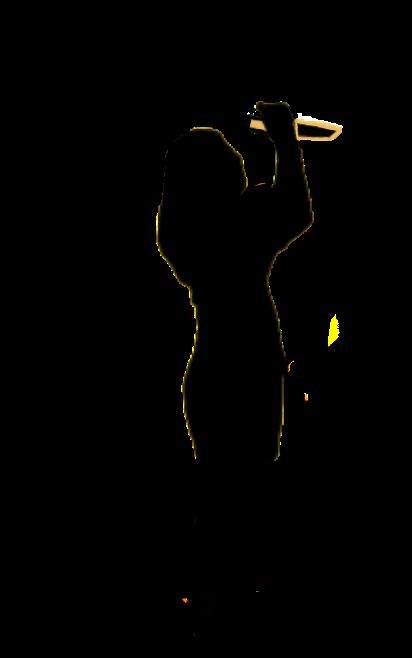
She is angry And her rage transcends Envelops her like fire like the stake she was thrown upon Red hot and deathly cold Flames she twirls around her fingers Tickling her weathered thighs as she laughs Thunder She is too loud Too Much
A striking smile etched across her frightening face Her ribs lay in rubble like timber panels and bricks and bedrooms Her body a disaster zone Heart of the hearth exposed
When she was a girl my monster learnt a great many things about love and loyalty and fear Staying small and quiet Holding her tongue between her fingers as it bled vowels and verses Letters lingering in her cavernous mouth held behind her lips And it hurt Sharp consonants biting at her cheeks Carnivorous
Hungry
She was hungry And her bones cut
Ruthless edges Jutting out Her body was a tomb A graveyard in the garden of His church And she was slowly dying
Why didn’t you cry out? Speak truth It will set you free Speak now or forever hold your peace Just ask the question and I will tell you reality
What is reality but a book of monsters? Each one crying out in vain for someone to love her
She is not that scary no matter how intimidating— “terrifying”—they christen her Those boys on their epic quests Sailing ships Swords high Waxed ears ready against siren song on their way to kill the big bad Wicked Witch Sensual Sorceress Scylla and her scaly sisters Don’t let her open her mouth lest she cast her spell she might transfigure them But weren’t they swine all along? Grunting, squealing Masses of pink flesh Emasculating Ejaculating Viscous vomit trailing from their lips
They tremble when she roars Shudder when she screams Banshee bursting into flames She is on fire The holy whore
The devil is a man but you fear a woman more

97
Artwork by Brinda Murlikrishna.
CW: Eating disorders, mental illness,
The alarm rings and I wake to the familiar weight of dread and shame pressing heavy on my lungs. The burden of my worries makes it hard to breathe before I even remember what I’m worried about. It’s still dark outside, and it’s freezing. I’m exhausted. But I have to go to the gym before work. Ed stirs beside me. The alarm woke him, too.
“You going to the gym?” he asks as he rolls over to face me.
“Yeah,” I mumble, trying to keep my sleepy eyes from closing again.
“Good,” he says, “you’ll feel better if you do.”
The relief of his approval runs through me, helping to wake me. Going to the gym is the right decision. The exhausted part of me that is screaming and begging me not to go is just that shameful laziness that I must eradicate. If I could just get my sleep schedule and diet right, I know I would have more energy. I reach for my phone to silence the alarm, hoping there will be a morning message from Grace to read before I have to get up. Her name lights up with my phone and warm pleasure fills my heart as I open her message. She never lets me down.
“Goodest morning gorgeous girl!!!!!
OMGOMGOMGOMGOMGOMG I CAN’T BELIEVE I GET TO SEE YOU TONIGHT I’M SOOOOOOOOOOO EXCITED!!!!!! I can’t wait to see your beautiful face and hug your precious self so tightly!!!!!!!!!!!!!!!! Take care loveliest one, I hope work goes well!!!!!! Love
Clean Daisy
Taylor-Reid
you to the Moon and to Saturn, always, MWAH!!!!!!!!!!!!!!”


I feel a smile creep across my face. But Ed has seen the message too. “You guys are so weird,” he says coldly. “You’re such a loser.”
“I know.” I throw off the doona. In the bathroom I try to wash his words off me as I clean my face. The soft touch of the water on my skin gives me a split second of relief. But the truth of what he said stays heavy on my soul as I start my day.
I’m in the gym, on the treadmill, and watching the music video that plays on the screens in front of me. Beautiful girls are dancing in ocean waves, wearing tiny bikinis. They are perfect. They remind me of Grace. But Grace is more beautiful and special than anyone. I don’t know why she stays with the guy she’s dating. He’s horrible to her. She feels like she needs him, though. And I get that. Of course I get that. But if I looked like Grace, or any of those girls on the screen, I would leave Ed and get a better boyfriend. Or have no boyfriend! I could do whatever I wanted if I looked like that. I know I will never look anything like Grace, or any of these magical dancing dream girls. I can get a bit closer, though. Making myself even just a little less repulsive is all I’m aiming for. That’s what I’m chasing. And that’s why I need Ed. I know that being who I am, how I am, Ed is the only one who could ever care about me. He reminds me that I need to be better. That I need to stay focused and vigilant. And he tolerates all my disgustingness. I can’t trust myself to be without him. He is texting me right now, telling me to run faster, so I do. I feel the thrill of pleasing
I’m back home, showered and quickly having breakfast before work. I feel good after my workout. Ed was satisfied with how I did. It feels nice to be washed and clean, and to know that after work I will see Grace. I’m messaging her as I munch my toast. We are sending each other love heart emojis and GIFs of cute animals hugging. Ed sits down opposite me at the small table. He’s so tall and so strong. It feels like he takes up the whole room and there is no space for me. But I know that it’s me who takes up too much space. I’m seized by anxiety as he looks at me, disappointment in his eyes. What have I done?
“That’s a lot of peanut butter on your toast,” he says. “Did you measure it?”
I feel like I’m falling through the floor as I realise my mistake. “No,” I whisper. Tears sting my eyes. “I forgot.” The disgust on Ed’s face as he looks at me is more than I can bear. Shame and horror at my own repulsiveness overcome me as I fill with panic. I’ve ruined everything. I can’t finish this toast now, obviously. But how will I make it through my shift at work? I can already feel the exhaustion creeping in. It’s all my fault. All my fault that I’ve blown my diet for today already. All my fault that I am exhausted. All my fault that I am a bad employee, and a bad person. It will be all my fault when I stuff up at work. So maybe I should finish my toast?
Ed is still staring at me menacingly. He terrifies me. “Even if you could do things right, you’d still be disgusting,” he
98
explains for the millionth time. “If you want to stand a chance at being even a little less disgusting, you have to do things perfectly. Today you’ve already failed.”

He’s right. I definitely don’t deserve this toast. It goes in the bin. Such a waste. I start to wash the dishes. I can’t believe that a couple of minutes ago I’d felt good and clean. I guess it was just an illusion. There is never really any escape from my own disgustingness. But hadn’t my warm shower and the joy of talking to Grace felt fresh and beautiful? I had also been feeling good for obeying Ed’s rules, before I realised that I’d broken one. Ed’s promise of improving all the things that are wrong with me usually makes me feel calm… even powerful, sometimes. When I do what he says, I feel morally righteous. And Ed is not the only one who praises me for following his rigid rules. The rest of the world reinforces the value of pursuing and achieving thinness. This message is repeated in a million little ways, every single day. In casual comments and conversations, in advertisements, films, and doctor’s offices, in every aspect of life and culture. How could I ever escape? I try so hard to follow the rules. But I always fail. The feeling of disgustingness is never far away.
The virtue I feel when I follow the rules is fleeting and artificial. Man-made… What if there is a different way to feel good and clean? A way that is messy and natural, but lasting, and real… I pause over the dishes. The chaos of this idea is frightening. Before I have the chance to ponder it further, Ed comes and stands beside me. He looks down at me. “You have to make up for your stupid mistake,” he says. “You can fix things. You just have to keep trying.”
I know he’s right. The horror and disgust settle deeper into their familiar place inside me, but I feel calmer knowing that I can make things right. I will just have to compensate for my mistake and focus extra hard so that I don’t have any more slips. I head to work, determined to reduce this burden of shame and make Ed proud of me.
My shift starts quietly, and we have time
to get the café set up and ready for the day. I do like this job. I love the people I work with, and some of the customers too. They are funny and kind, and they get me out of my head. Sometimes, at least. I don’t have time to talk to Ed while I’m working. But I know what he would say anyway, and before long the cruel, heavy thoughts begin to creep around the edges of my concentration. As my shift wears on, I can feel my body protesting. The exhaustion starts to overwhelm me. How long can I keep doing all the things Ed says? I’m fighting my body so hard. I’m giving everything I have to keep its wants and needs at bay. I’m scared that one day I won’t be able to do it anymore. As I’m working, a sunshine-filled memory from my childhood rises to the surface of my mind…
I’m at the beach with my family, and there’s a little creek that trickles down to the sea. My brothers and I built a magnificent dam. Our aim was to change the course of the river. We worked on the dam for what seemed like hours. We built it with sticks and sand and we thought it would last forever. Finally, the dam broke and water came pouring through. We didn’t mind. It was exciting to see the great flood. I remember Dad laughing. “You can’t fight nature!” he
That was so long ago. The innocent little girl in the memory seems so far away. She believed whatever she was told. Until she began to notice all the contradictions. “It’s what’s inside that matters,” was what everyone said, while at the same time showing me again and again the utmost importance of appearance. You can’t fight nature, but to cultivate and maintain appearances, you have to fight nature. Fighting nature is the only way to uphold this world we’ve built. Maybe it’s futile, but I have to fight. I’ve built a wall inside myself, and my true nature must not be allowed out. Because deep down I’ve always known that who I am is just not good enough. My real self is hopeless, disgusting, and worthless. I can’t let her escape. But I also can’t escape her. There are leaks in the dam. Water seeps through into my ordered life, undermining my control. It makes me slip. It’s like I’m trying to run through mud. I fall on my face all the
damn time. The true me wants so much to be let out, to break through the dam wall and run free. She longs to exist fully in all her wild and monstrous glory. That is why I have to fight so hard. But this fight is almost all I’ve ever known. It’s just the way I do things, and change does not feel possible.
Ed and I became friends when we were kids, not long after that sunny, innocent day at the beach. I’d always been worried that I was not good enough. And I was beginning to worry about all the contradictory things I was being told. How could I do the right thing if right and wrong were not explained clearly? Ed taught me how to get rid of these unwanted, uncomfortable thoughts and feelings. He told me that things could be black and white, and this way, the world could make sense. He explained that if I just followed a set of rules and focused on the things that I could control, maybe one day I would be good enough. I knew my parents didn’t approve of Ed. So I hid our friendship from them. And because I wanted to please my parents and be a good girl, for a long time I didn’t do the things that Ed suggested. I pretended, even to myself, that everything was normal and fine. But quietly, I listened to Ed. He explained to me all the things that make me worthless. I believed him completely. I didn’t tell anyone the things he said to me because I knew they would think it was bad. But I knew that Ed cared about me and was trying to help.
It made sense that we got together as teenagers. We’ve been together for a long time now. Lately though, there have been times when I’ve caught myself wondering if Ed is really helping me anymore. Doing what he says does make me less anxious, sort of… but I think I’m more anxious overall now than when I first met Ed. And I’m definitely more miserable. But I was just a kid when we met! I had a good childhood, so of course I was happy then! Maybe it’s just that growing up is hard and being an adult kind of sucks. Doing what Ed says does give me some sense of worth, I guess. But lately I’ve been wondering if this sense of worth is even real. It comes from Ed and the rest of the outside world. If the validation was taken away, it would just be me and my overwhelming worthlessness, alone in the cold. Isn’t that why I need Ed, then? But what is the point if it’s all just fake anyway? I hate myself for being so inauthentic, for chasing such shallow goals, and for being so confused. I know I have to stay with Ed, though.
99
It’s the only way I know how to live. But what if I reach a point where I can’t keep going anymore? What if I can’t keep fighting nature?

This aching downward spiral of thoughts is happening as I make coffees, serve customers, and clear tables. The lunch rush begins. We are getting slammed just as the thoughts get so loud that I can barely hold it together. The exhaustion begins to overcome me. People keep coming in and lining up as my co-workers and I run around doing a hundred things at once. I am so overwhelmed I could cry. How can I possibly do all the things that need to be done? How can I keep going? How could I have forgotten to measure my peanut butter? Why am I so stupid? A co-worker squeezes my arm reassuringly as she passes. I fight back tears. I don’t deserve any such kindness. I don’t deserve anything. I’m not good enough. I can’t cope with anything. I’m supposed to be an adult. But just below the surface, all I am is a frozen and frightened eight-year-old girl. I should be able to function and do stuff just like everyone else. But I’m not like everyone else. I am uniquely pathetic and awful. The self-hating thoughts fog my brain. They are so heavy and tiring, and they paralyse my insides. As I work, I see people enjoying their food, talking and laughing. Relaxed and happy. They have not measured anything. How do they do it? They seem so far away. It’s like I’m watching them through a veil. I can see them, but I could never reach out and touch them, be with them, be part of the world like that. They are so free. I wish I could be free.
The day continues. I stay paralysed, but time keeps moving. The lunch rush dies down. We begin the clean-up. Grace comes to the front of my mind. She is always in there somewhere, a sweet and comforting presence, even when life and thoughts are overwhelming me. Even when I’m lost in darkness, her light keeps shining. She is on my mind a lot. I miss her. Even though we talk constantly and we see each other often. I think about her and I miss her all the time. I wish she would walk through the door right now. I wish I could impress her somehow. I wonder if she loves me as much as I love her…
I finish my shift in the mid-afternoon and step out into the golden autumn sunlight. I made it through the working day without any more disastrous diet mistakes (I had my usual break food, all
exactly as planned) and no major work mistakes either. And soon I’ll get to see Grace. First I have to go home and get ready, which I am dreading a little. By the time I get home, the air is cool, and hazy with woodfire smoke. I love autumn, the goldenness and the freshness. The beauty of the natural world calls out to me. I want so much to step into the daylight and be free. Ed is home of course, but he doesn’t say anything too mean when I walk in. Apart from the peanut butter (which I still feel horrible about), I’ve done quite well today. When I start getting ready, though, Ed lets me know why each of the outfits I try on look awful and ridiculous on me. He reminds me of everything that is wrong with me: my hair, skin, face, body, personality, everything. I fight back tears and keep an eye on the clock; there’s no way I’ll be ready in time.
Before long it’s five and I have to leave anyway. Panic and dread accompany me and Ed follows close behind as I search for my keys and take a final look in the mirror. I can’t believe I have to leave the house looking like this. If I was going to see anyone else I would cancel. But it’s Grace. I would never miss an opportunity to see Grace. She is worth all the torment it costs me to go out and face the world. I think about her on the way to the bar, and the panic and dread are slowly replaced by an innocent warmth and joy. I think back to everything that happened this morning, how good I’d felt when I was talking to Grace. When I’m with Ed there is no real escape from my own disgustingness. Just the artificial, externally created sense of virtue that vanishes as quickly as it comes. But when I’m with Grace, the overwhelming burden of my disgustingness somehow fades a little. And since I’ve known her, moments of peace and pleasure have begun to tiptoe into my life, in spite of Ed. When I’m with her, all I feel is the pure delight of loving her, completely and with all my heart. And when I think of her, I find joy in things that for so long brought me no pleasure at all. Like a warm shower, or a sunny autumn day.
Grace and I met nearly three years ago. We immediately became best, best friends. The first time I saw her, my heart nearly jumped out of my chest. Partly because of anxiety and insecurity. I’d never seen anyone so beautiful. She is everything I could ever want to be. She is so gorgeous to look at I almost can’t stand it. But once we got talking,
I realised that her true beauty lies in her heart, mind, and soul. This beauty is beyond anything I ever could have imagined in my wildest dreams. And I remember thinking, “How is she real?” I am jealous of her of course, but I love her too much to experience any negative emotions associated with the jealousy. I guess it’s more like admiration, then. She is the dream that I have been chasing for so long. I want to be her so badly. But my love for her is so much more than that, too. Something about it feels like flying somehow… or maybe it’s like falling. I don’t understand it. But it feels right. As I get closer to the bar, my heart starts to beat faster. I count the minutes until I’ll get to see her, butterflies in my stomach. Is she this nervous and excited to see me? No way. But I don’t even care. Loving her and getting to see her is all I care about. Even Ed can’t bother me now. Grace’s boyfriend is just like Ed, so she gets it. I can’t wait to laugh with her about how dumb boys are. I can’t wait to hug her. I feel free like a river, flowing down the street to see my love.
She’s standing out the front of the bar waiting for me. We throw our arms around each other and exclaim our hellos. The way it feels to hug her is almost too much. My heart aches, and I don’t know why. We pull apart a little so we can see each other’s faces. I know then, looking into her wide eyes, that her love for me is real. This connection is real. She sees me. And she loves me. She loves me not only in spite of what she sees, but because of it. She is amazing. I love her so much. Her eyes are so bright and kind. She is so gentle. I love how her hair falls into messy and beautiful place, catching the last rays of autumn sunlight. What must it be like to be so beautiful? Her lips are close to mine. Close enough to touch… why am I thinking about that? I have a moment of guilt and panic. But as she wraps me warmly in her arms again, my fears evaporate. Everything is right. We walk together into the bar, the red and gold sunset behind us.
When I’m with Grace, the black-andwhite world around us fades. The two of us inhabit a brilliant rainbow of colours. It’s like nothing I’ve seen before. Her sunshine illuminates a whole new world. She is magic. We sit close together, drinks in hand, and we talk and talk. Ed will be so angry when he finds out I’m having a drink, but I don’t care. With Grace by my side, I can do anything. We are together, and it feels like home. After a while she pauses, and looks at me

100
seriously. “I have to tell you something,” she whispers.
“Oh what is it?” I ask. I’m filled with a nervous excitement. What does she have to tell me? But then I see that her big kind eyes are becoming tearful.
“We’re moving.”
“Oh!” I exclaim as I fall into a desolate cold pit of horror. “How exciting! How far away are you moving?”
Grace looks at me, beautiful and tragic. “Far,” she says.
The next morning there is no message from Grace. I go to the gym, to work, moving about my day an empty shell. No one notices that I’ve ceased to exist.


I don’t hear from her all that day, or the next.
When at last her name lights up my phone, I choke on my heart as I rush to open her message. She is full of apologies. She and her boyfriend have just been so busy with the move and everything. I’m relieved, but unsure what to make of it all. As weeks start to go by, her messages become even fewer. Every time I look at my phone and see that she hasn’t messaged, it’s like another blow to my bruised blue soul. Another little knife to my heart. My twin flame abandoning me was death by a thousand cuts.
“How could she leave me?” I ask Ed through my tears one night.
“Of course she left you!” he laughs. “Why would she stay?”
Had she seen right through me? Seen how I’d really felt when she said she was moving? Had I been a bad or unsupportive friend? Or had she just forgotten about me? Did she ever really care at all? Had I not seen sadness in her eyes, heard pain in her voice when she told me she was leaving? Had she seen the truth before I did? Seen that I don’t just love her like a best friend? Now all I feel is shame. Everything that felt so right now feels so wrong. I was wrong about everything. I am wrong. But I can’t stop loving her. Why can’t I stop loving her? I hate myself for all that I feel, and for all that I am.
One evening, I’m cooking dinner, trying so hard to get it right for Ed. He comes in from the other room to observe what I’m
doing. I feel myself become even more tense. He begins to criticise me. It’s a familiar routine. Why do I never see it coming? I’m such an idiot. If I could just follow the rules well enough, he would leave me alone.
Later in the shower, I’m listening to music. I think of Grace. I wonder how I can possibly live without her. I never want to leave this shower, where tears can fall freely from my eyes and be washed away with the water. There is nothing to look forward to anymore. No escape from Ed. He has been giving me more and more rules. I know he’s trying to help me avoid the pain. But it’s not working. He doesn’t know how much I miss her. No one does. I try to have my music quiet, so Ed doesn’t hear it. But he hears. I am so alone, but I am never alone. Ed will never understand me, but he will never leave me either. He’s waiting for me when I finally emerge from the bathroom. “Your taste in music is so bad,” he says. “You’re such an embarrassment. So disgustingly uncultured. No one will ever like you.”
“I know,” I reply softly, but an unfamiliar feeling begins to creep through my veins. I feel my cheeks turning red. Rage. How dare he! He belittles my favourite songstress, just like he belittled Grace. Just like he belittles me. I turn my back to Ed as I get into bed and pretend to read. I don’t know what to do with this anger. Why won’t it turn inward on me like it normally does? The familiar shame is still there too, but somehow it is existing alongside the anger… I slowly realise that something has shifted inside me— it’s been happening for a while. And I see that while in some ways nothing has changed, if I look deeper, everything has changed. And now I can feel anger. It feels dangerous. But I… I like it.
Weeks pass by, and I continue to experience moments of rage in response to Ed’s abuse. Each time the rage comes and then passes, I find that I have just enough space from Ed for a few moments of reflection. Everything changed when I met Grace, and everything changed when she left. She gave me something to live for, and now that she’s gone, I see that my life with Ed gives me nothing to live for. I don’t have the energy for anything anymore apart from doing exactly what he says. And it’s not even working to supress the pain and anxiety. The illusion has been shattered. I see now that Ed’s rules are a road to nowhere. Grace was the embodiment
of perfection, and she still felt so bad about herself that she gave everything she had to a man who doesn’t even see her. He tells her that she is hopeless and worthless. That is what Ed tells me, too. These men are cut from the same cloth, and Grace and I live our lives trapped in their twisted games. No matter what we do, it will never be good enough. We keep thinking that we will feel better if we just follow their rules. But the rules keep changing and intensifying. How can we expect to hate ourselves less when selfhatred is what drives us? That path only leads back to the start. How can I break out of this muddy loop I’m running in? The difference between Grace and I is that she is actually perfect, and I am actually disgusting and worthless. So I don’t know what to do. I think maybe I need help from someone other than Ed.
Ed knows I’m starting to pull away. He senses that I’m starting to see through him, and he is working harder and harder to win me back. The war is raging inside me now. Ed is on one side, fighting for his life, doing whatever it takes to keep the dam from bursting, to keep control. My true self is on the other side, pushing harder and harder to escape. But I’ve ignored her for so long. Like all things in nature, she needs to be nurtured and nourished before she can be strong. And I don’t know how to nurture or nourish her. I don’t know how to do anything except for what Ed tells me. I sit on top of the dam wall, watching from above as I go about my life with Ed. Grace lifted me up here. I can’t unsee all the things she showed me. I can’t return to the oblivion of my life with Ed. I’m still in his controlling grip, but I’m thinking more and more of what is on the other side of the dam. I look down there, but I can’t see anything. That is the side of the unknown. And it’s terrifying. Even though Ed tears me down every single day and reduces me to almost nothing, this is the only existence that I know. He built this dam to protect me. To remove all the messiness of life and make me feel safe. As torturous as it is to be with Ed, it is also familiar. And familiar is comfortable. Familiar is safe. But I see now that it is destroying me. I don’t want to be stuck in this miserable half-life anymore. I can’t please Ed. And I can’t free the trapped girl inside me. I want so much to do both, but I can’t do either.
One night I’m lying in bed, in the dark. Staring at the ceiling. Full of fear and confusion and doubt. Ed comes in and lies beside me.
101
He wraps his enormous strong arms around me. He holds my lifeless frame, and I feel nothing.
As the barren cold of winter creeps across the land, I settle into my decision. I inhabit the dread and terror it fills me with. I am determined. I think I can do it. It will be a long and treacherous path. But I know in my soul that it’s time. I’m going to leave Ed. I want to find freedom.
I hope to find peace. I know it’s going to be the hardest thing I’ve ever done. Stepping into the unknown. But I have hope.
And I want to live. I am a flawed, vulnerable, hopeful human, who wants to live. And I’m the most scared I’ve ever been. It is taking everything I have to make this choice, all the strength I can muster. But maybe on the other side of all the pain and struggle, there will be something better. I owe a lot to Grace. She made me believe. I don’t know if she is missing me. All I know is that she cracked my heart wide open, and I am forever changed. She made a mark on my heart when she opened it. A painful, beautiful tattoo. And I’m bleeding. But now that my heart is open, a life force has come flowing in, like a little creek. Still so delicate and small. I hope that one day it will rush through my veins like a river. But it will take time. Maybe it will be years before every last trace of him has been swept away, and I’m finally clean. I don’t know what the future holds. But I know that it’s time to go.
I wonder if Grace and I will ever see each other again. Maybe we will be reunited someday, when it’s just her and me, when our slates are clean, and our broken hearts are mended. Or maybe not. Maybe Grace and I never stood a chance. But I know that she cared. And I know she loved me. It was real. I was there when we held hands, looked into each other’s eyes, said we loved each other over and over as the sun came through the clouds. When we hugged each other in the gentle rain, when we’d smile at each other, and the sparks would fly as the rainstorm raged. We were electric. I was there. And she was there, too. I think maybe she was scared. I was scared. But she was the most real and beautiful thing I’ve ever known. I think it was real for her, too. I think I was the most real thing in her life. I hope Grace finds her way into the clear. I hope I find mine.
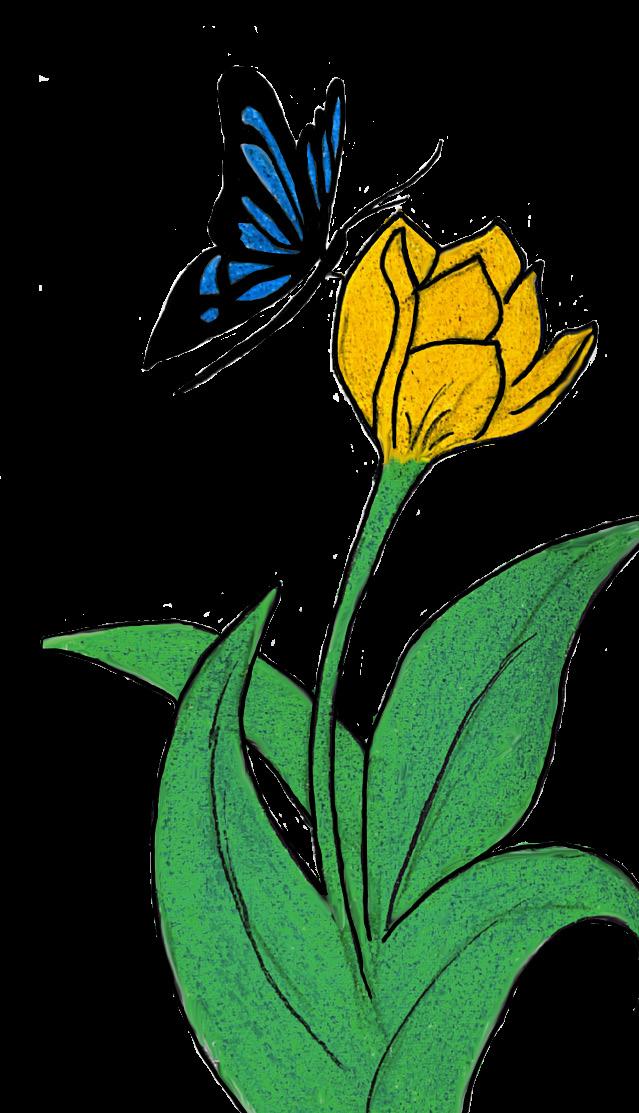
I’m walking in the weak winter sunlight, on my way to see my psychologist. We’ve already had a few sessions, and I’m so excited to be working with her. She is so smart and warm. She understands, and she has so many helpful suggestions that it exhausts me. Because I have so much work to do. So much more than I realised. But I’m already having more moments where Ed’s voice in my head is just a little quieter, and I feel those delicate beginnings of freedom flowing gently through me.
Ed is quiet in this moment. I wander alone through the cold winter air, feeling its bite on my skin. Everything hurts. My bones ache with cold. Everything is so raw. I almost can’t cope with how fresh the world looks right now. And even when Ed is quiet, I still feel so much fear and pain. That of being alone. Without him. I see why I avoided my feelings for so long. But I also feel alive. I think I will always remember this time in my life. Sometime in the future, when I’m finally clean, I will think back to right now. This time in the clear air, when I can finally feel what it’s like to breathe.
I am faded and weak. But I’m learning to be gentle with myself. I’m doing my best. I can see now how I am maimed and injured. Ed broke me. I am working hard at healing, so that the wounds he left can close and become scars. These scars will be with me forever. Making sure that I remember it all too well. And it’s important that I do remember. I pad softly through this between time. Slowly waking up and making my way towards the clean, fresh water. It is the end of one thing, and the start of something new. There is something precious about this time. Something so tender. And so real. I guess I’m learning that there is beauty in vulnerability.
I don’t know what the future me will be like. I hope she is kind. I hope she is proud of how hard I am working to recover. But I hope she doesn’t harden too much. I hope that her heart can stay open, that she can learn to be strong and vulnerable at the same time. I hope that she can stay true to herself. That she never lets Ed trap her behind a wall again. He will be nothing but my past.
This is the hardest and most painful thing I’ve ever done. But I
am doing what I do best, which is trying and trying and trying. And I am learning a lot. I don’t know who I’m supposed to be yet. But I’m learning. I’m learning what I value, and how I can choose to live by my values. I’m learning to see the big picture more, to see the forest for the trees. And the forest isn’t as scary as I thought. There is so much that I still don’t know. I am struggling through each and every day, battling cruel thoughts and the overwhelming belief that I am disgusting, worthless and wrong. But in this moment, I can glimpse what it will be like to finally be clean, and for that to depend on no one and nothing but me. The real me. I’m nearly at my appointment—I’m on the footbridge, crossing the river. It’s been pouring rain the last few days, so the water is really high. It roars wild and free below my feet. And I think to myself, “That will be
102
Bad Feminist
Maddie Chia
I’m really fucking angry. This internal rage has been brewing for many years. How has feminism actually helped us if we still aren’t equal? Why is it still relevant if I don’t see myself represented by so-called “feminist” icons? What is the point of feminism?
The word “feminist” is tattooed on my arm. It’s been inked into my skin with a needle over and over again. It’s permanent. Forever. Some days, I regret having the word in such a visible location. Other days, it is one of my most prideful possessions, a constant reminder of my values— but there is always a voice at the back of my mind. Perhaps having this makes people see me differently. Am I forcing my view upon others? Sometimes I even forget it exists until it resurfaces when I’m in the shower or dependent on what I’m wearing—which in itself is a little ironic. Sometimes I feel like a hypocrite when I purposely cover it up with foundation or clothing for job interviews, or around certain people; in particular, the boys I choose to date.
Maybe I am unsure about my own feminism?
As my mother likes to phrase it, “Maddie, you’ve always been angry about something.” In a way, this is accurate. I have always been an angry girl, whether it was at boys hogging the handball court at lunch in primary school or men speaking over me in tutorials. Maybe my
anger was misplaced. But my anger only turned to resentment when I began university and noticed the overwhelming prevalence of white feminism. It was too hard to not see. There was hardly anyone who looked like me in the mainstream feminist movement. I feel like I often fall into the common trap of saying that I hate men whenever I hear of inequality in the media; whenever yet another famous white feminist speaks of shameful behaviour. Instead, maybe I should really be saying that I hate the feminist status quo and everything it represents for women who look like myself: seen, but not heard.
I’ve been a feminist since I was a young girl. I grew up with a full-time working mother in the STEM field, and two incredibly strong grandmothers who worked themselves to the bone to provide food for my parents when they were young. I was taught to stand up for myself and speak up. I was lucky to have such strong feminist role models from the start, but this often got me into a lot of trouble as a young girl, and still does to this day—a young woman of colour

103
speaking her mind is a foreign concept to many.
As someone who has always been fascinated by feminism and the power of women, I decided it was only the natural progression to study it at law school. When I did my readings, though, a common theme kept nagging at me: where were the diverse voices? At the moment, feminism feels like a “one size fits all” approach. Most academic writing about feminism is by white, upper-middle class women, and most of the people who we see speaking about the movement are also these women. The voices of BIPOC women are often hollow efforts to add a hint of “intersectionality”—or, as I like to call it, tokenism. The notions of “girl power” and “intersectionality” have always been thrown around in relation to “fourth-wave feminism”, which is apparently occurring at this exact moment. Collective rage from a new group of women. Intersectional women. But if we actually take a step back and reflect on the words intersectional and inclusive, I don’t believe these are represented in our current feminist movement. Intersectional means that all groups and experiences are represented.
Feminism as a concept has evolved in many ways over the years from the typical “white feminist” approach to a more diverse movement, although it is still far from perfect. Throughout history, women have been pitted against each other through the pressure of the male gaze—especially BIPOC women. We are fetishised. We are diminished to oriental objects. We are the token diversity pick. We will always have to work twice as hard.
Frequently in the pursuit of intersectionality, white women take
charge and include BIPOC voices as an afterthought. I know for me, personally, it is often hard to have my voice heard in a room full of white feminists, as I don’t fit the mould of what is considered a “classic” feminist: I’m a petite woman of colour. I have had this experience countless times— not just in high school, but also at university. Take, for example, the 2021 Women’s March4Justice. This March was created by a white woman in response to a white woman in Parliament. This white woman then recruited more white women to lead the organisation of the March in every state around the country. During the Canberra March, we had a “celebrity” white woman emcee, and several other “famous” white women were recruited to speak. The March had an occasional sprinkle of “diversity” and “token diversity”; ultimately, however, it was predominately a white feminist event. I was told by one of the organisers—a white woman—that she thought it would be a good idea for me to speak because Avan Daruwalla (the ANU Women’s Officer from 2021–present) and I brought a “special diverse touch” to the speaking list. Whenever we tried to suggest anything to make it more intersectional, we were met with a “hush girls, it’s fine the way it is” or deafening silence. Again—white women silencing BIPOC feminist voices. What’s the point of even trying? This was the biggest display of feminist rage of the year, and even though I was immensely proud, I felt like a token. I felt like a pawn. I didn’t feel strong; I didn’t feel like I represented anything.
I was only there to make the event look more diverse and intersectional— because, of course, that’s “woke”, as the white organiser told me.
We need to do better to include BIPOC voices in our pursuit for every woman and non-binary person to feel included in the fight for equality. I understand and congratulate white women for their achievements toward furthering the feminist movement, but it is now time for them to take a step back and assume a supporting role. If we are truly to create a feminist movement reflective of society, then we need to centre BIPOC voices. Often, the emotional labour that we place on the chosen few “diversity picks” creates a high rate of burnout and resentment for taking up the role of silent grunt in the background. In order to avoid this, we need to start having tough conversations and genuinely championing the voices of those who don’t necessarily fit into the box of “pretty feminism”. A simple solution is changing the conversation in mass media and actively asking BIPOC women and non-binary people to share their experiences and thoughts. It’s about BIPOC voices spearheading campaigns run by feminist organisations and governmental bodies. It’s about white feminists not being afraid to take a step back and educate themselves about other non-traditional experiences. If we do this, I truly believe we will be stronger for it.
I may be called a bad feminist for writing my opinion about the feminist status quo, but at least I’m actively trying to make it better. I will always be committed to feminism and sharing my ideas. Sometimes I wake up so completely sure of my feminism, and other days I don’t have a concrete idea of what I stand for. It fluctuates. The main thing I know is that I’m tired and burnt out. But if I don’t speak up, who will make sure that people with similar faces to mine are adequately represented?
104
Section Designers:
Suhani Kapadia Hengjia Liu Alisha Nagle Harriet Sherlock Sebastiàn Ungco Cinnamone Winchester Christie Winn
phy n o p om p ia
The state of consciousness leading out of sleep.
“What a chimera, then, is man! What a novelty, what a monster, what a chaos, what a subject of contradiction, what a prodigy! A judge of all things, feeble worm of the earth, depository of truth, cloaca of uncertainty and terror, the glory and the shame of the universe!”
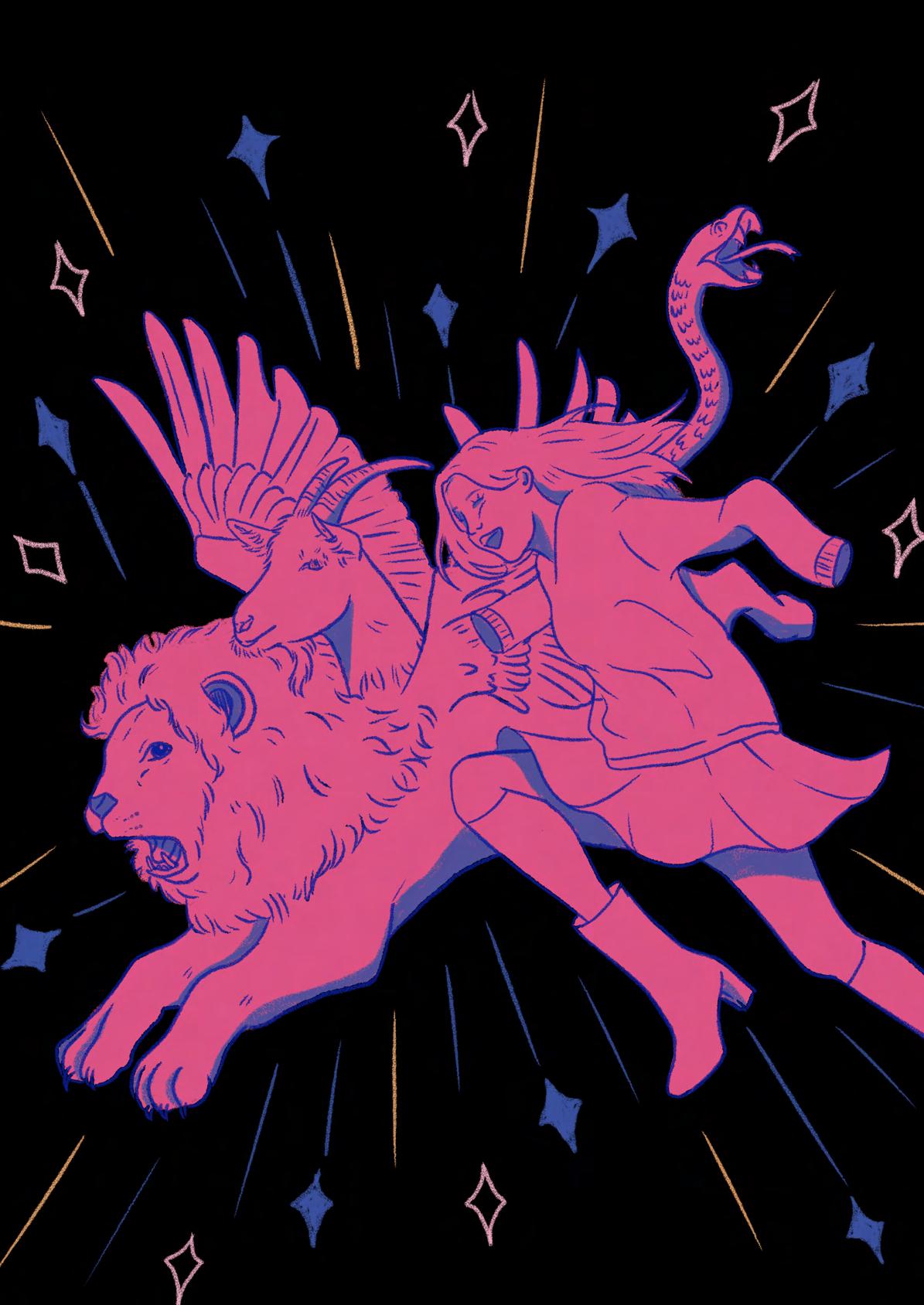
— Blaise
Pascal
No More Spiritual Bypassing:
It’s Time to Be a Demon Bitch About White Feminism Avan

Daruwalla
White feminism is tenacious and seductive.
It’s not just blatant racism, nor the fact that white suffragettes negotiated away the rights of Black women and relegated them to the back of the march. It’s also so-called “race blindness”, and the outrage of white women when a Housewife of Beverly Hills gets called out for claiming she doesn’t see colour.
It seems likely that most people reading this will have a base level understanding of race consciousness, so I’ll be focusing on some of the more cunning incarnations of white feminism; specifically, spiritual bypassing and toxic positivity. But before we get to that, it seems useful (and—to be honest— pretty cathartic for me) to think about all the different ways we can perpetuate and experience white feminism.
White feminism can be sneaky and hard to point a finger at. That’s part of why it’s so ridiculously pervasive.
White feminism is the privilege of not thinking about the impacts of the language you use (other than words that you’ve been told will get you cancelled). White feminism is not learning how to properly say someone’s name. White feminism is caring more about what’s trending than the cultural (in)sensitivity of fake tanning, recreating the fox-eye trend, or appropriating AAVE.
White feminism is when people talk about “intersectional feminism” while fundraising for little girls in India at a bougie, corporate International
Women’s Day breakfast whilst wearing fast fashion girlboss attire stitched by said enslaved little girls. White feminism is protesting foreign injustices but not knowing nor caring that First Nations women are being imprisoned at 20
supremacist culture than to denounce and act against it.
In Ain’t I a Woman (1981), hooks says it’s “obvious that many women have appropriated feminism to serve their own ends, especially those white women who have been at the forefront of the movement”. No surprises here: this seems like the only natural outcome of a culture that celebrates broken glass ceilings but leaves behind the majority of women amongst the shards on the
All of this is to say that white feminism isn’t just perpetuated by racists and villains; even wonderful and wellmeaning people fall prey. I’m not trying to crush souls or be nihilistic. I’m writing this because I genuinely believe that there are many well-meaning feminists who have the capacity to raise their consciousness and modify their behaviour to align with anti-racist action. For that reason, I’ll focus on one of the most devious, insidious, and seemingly well-intentioned manifestations of white feminism that I have encountered: spiritual bypassing.
to keep us all afraid, to make us choose safety instead of risk, sameness instead of diversity”. This is a useful reminder of the fact that patriarchy and white supremacy come naturally to us for a reason. When you are being rewarded for preserving an oppressive culture, it makes sense to fall into the trap of limiting your feminism to girlboss liberalism. For those who can access “sameness”, there is a far greater incentive to feed white
I first encountered the phrase spiritual bypassing in an old episode of Bobo (a podcast by Bobo Matjila and Lillian Ahenkan/Flex Mami), and it immediately resonated with me. Coined in the ‘80s, spiritual bypassing is a term referencing the way that people use spirituality to avoid and undermine serious issues, ranging from personal trauma to the disproportionate violence faced by people of colour. The bypass occurs when people create a spiritual shield that stops them from having
106
to acknowledge or engage with real problems and people.
Spiritual bypassing in white feminism is often toxically positive. It manifests as #loveandlight, #goodvibesonly, and #riseabove in response to the pleas and protests of people who are suffering from systemic injustices. It’s a way of making people with valid reasons for being distressed or aggressive feel like they are the problem for not being nice, civil, or palatable enough to achieve change. This “lightwashing” phenomenon is reinforced by online activism which preaches individualistic self-care above all, as opposed to community care and the need to engage with difficult conversations.
In Lorde’s 2021 single ‘Mood Ring’, she satirises the pseudo-spirituality of Western wellness culture. In singing about burning sage, cleansing crystals, and flying somewhere eastern, Lorde casually puts her finger right on what is so obnoxious about spiritual bypassing— it’s a way for privileged white people to access intercultural spirituality and healing practices whilst simultaneously abdicating any responsibility or burden to engage with marginalised peoples.
Notably, the message of ‘Mood Ring’ appears to fly right over the heads of those very people who the song satirises. An article from Wonderland Magazine describes it as “an ode to the world’s current obsession with all things spiritual”, and peculiarly also as “Midsommar, but wholesome”. It’s easy, then, to see how successfully and perfectly the song encapsulates why spiritual bypassing and toxic positivity culture are so seductive— it’s all sunny and happy and so, so, easy.
But here’s the thing: good vibes, peace signs, and positive manifestations can’t fix the problems faced by intersectionally oppressed people. And it’s dangerous to suggest that

they can. Spiritual bypassing upholds white feminism, shuts down progress, and reinforces patriarchal power. By placing the burden of change on the universe’s vibrations or the law of attraction, privileged white people can absolve themselves of accountability or responsibility. Further, this mindset dismisses the lived experiences of BIPOC people and demonises their very reasonable (and often productive) anger.
So, spiritual bypassing is clearly bad. What should we aim for instead?

To begin with, don’t be overly reactionary and end up on the other end of the scale by coopting the anger and struggles of oppressed peoples. White feminism can be equally harmful where white advocates and activists have the audacity to value theory, textual analysis, and online discourse over actual lived experience. If your leftism comes from a place of love, then the first thing to do is listen.
When asked about her advice to people trying to unlearn white feminism, activist Rachel Cargle told Jameela Jamil (in her podcast I Weigh) that she was afraid to give specifics, because people would likely interpret any advice as an exhaustive list rather than a starting point. Deconstructing and combatting white feminism is a journey, not a destination; we need to become comfortable with the fact that antiracism and intersectional feminism are everyday considerations, not checkbox exercises.
In the podcast Secret Feminist Agenda, Hannah McGregor references The Witches Are Coming by Lindy West, a humorous cultural critique released in 2019. McGregor reads from West; “If you care about healing the wounds of the world, I hope you become a real
demon bitch about diversity and never let anyone sleep. Think radical thoughts and let yourself imagine they’re true. Then ask yourself why it’s considered radical to make art that accurately reflects reality, to build a society that takes care of its members, to demand a better world.”
McGregor goes on to talk about the importance of becoming a demon bitch about anti-racism, diversity, feminism, and social justice. She reminds us not to be sucked in by rhetoric that says we can relax because society is on the right track and that corporate inclusivity practices will solve whatever problems are left. This message has only become more urgent, with academics forecasting that COVID-19 has reversed a generation’s worth of progress on gender equity. Rising rates of gendered violence; the reinforcement of misogynistic expectations around domestic labour and caring responsibilities; and disproportionate job loss, pay cuts, and workplace discrimination are amongst the many gendered impacts of the pandemic.
McGregor says: “you've just gotta care more about justice than about being liked”. Perhaps being “so fucking furious and excited about justice that the comforts of silence become disgusting” is easier said than done, but it certainly seems worth a try.
To bring us full circle: in Teaching Community, bell hooks reminds us that moving through fears of difference, diversity, risks, and challenges can lead to “finding out what connects us, revelling in our differences”, and ultimately brings communities closer together. Maybe it’s helpful to start by thinking about what your feminist goal is. I thought mine was to focus on radical, intersectional, optimistic feminism—but on second thought, being a demon bitch about feminism and injustice might be a tad more interesting!
107
Monstrosity:
A Series of Haikus Anonymous
Monstrosity. Pain. Feeling the anger bubble Hope vanishes now.

The monstrosity Yearning to overtake me This time it will win.
The horror to be Always fighting from within I will still fight back.
Inside my dark mind Lying dormant for some time Freedom claws forward.
Monstrosity. Peace. Inner power is released Joy returns to me.
108
The Grotesque & Beautiful
A photo series by Gabriela Renee
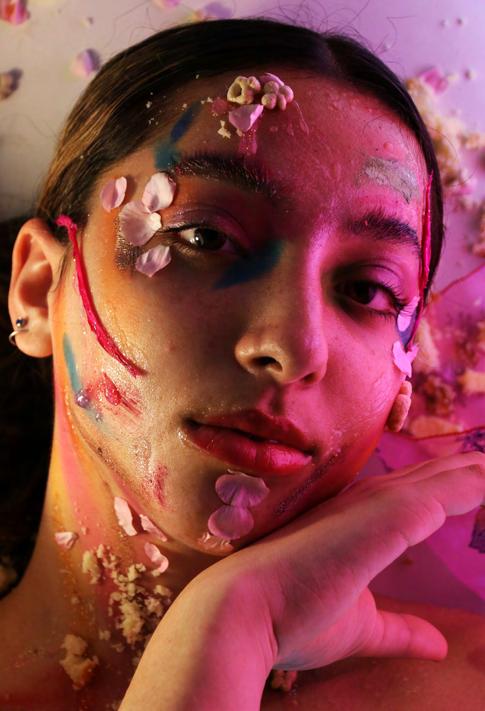

109
Letters to My Inner Monstrosity Eugenie Maynard
CW: Mental illness.
Dear Eugenie,
I think it’s time for me to introduce myself. Seeing as you’re about to enter school for the first time, we were going to become acquainted soon, anyway. You won’t learn my name for quite a while yet, but I’ll be with you every step of the way. Every time the other kids climb trees and run around while you sit aside watching, not quite sure what’s holding you back. Every time you don’t understand why you’re nervous to be around your own family. You know what I’m talking about—like when your heart starts racing at the idea of family dinner because you don’t want to talk about yourself, or when you’re relieved to be home alone for a day so you don’t have to keep up the façade of being fine. I’ll be there, guiding you further and further towards that discomfort and stress. I’ll be the weight in your chest when you see everyone having fun but you just can’t join in. You and I will be great friends one day, you’ll see. We will talk soon.
Dear Stranger,
Why did you pick me? It’s been a few years since we first met, and you only ever seem to be around during my worst moments. Whenever I’m scared, confused, or sad, you’re the only constant thread. At least you’re there. I am so lonely—your presence is all I’ve got. The other day, I was at school and it was wet weather, so I was sitting inside alone, reading my book and eating lunch. Down the other end of the table, some kids were giggling and pointing, clearly making fun of me. Instead of standing up for myself or moving, I had your ten-tonne weight gluing me in place, making me believe I deserved it. And how about when the girls in



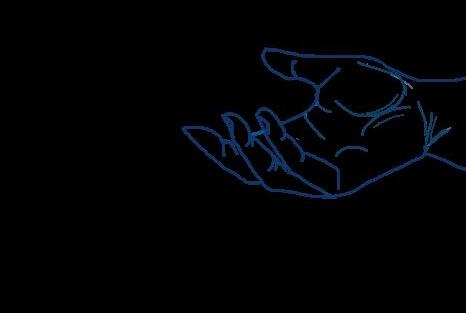
dance class ignore me between classes because I don’t go to their school and I don’t like the same things as them? I could join their conversation and try to get them to like me, but you’ve built a wall so high between me and them that I fear I will never see over it. You make me hate myself; at least I know who “myself” is around you. But can you please learn to let go just a bit? I want a few friends—I don’t have to be popular, but I don’t want you to be the only one. Who am I kidding—that’s a more insane idea than the thought of ever truly understanding you. If you’re going to be the one familiar presence in my life, if you are truly the only one who is going to know me, can I at least know you? Although, let’s be real: you’ve never given too much of a fuck about what I want, anyway. Maybe this is just a cry into empty space. Maybe you’ll never read this. I guess I’ll just have to be okay with that.
Dear Eugenie,
Sorry it’s taken me so long to respond; I’ve been working overtime recently. It seems like we can’t get a day off from each other! Everywhere you go, everything you do, you create the perfect opportunity for me to rear my head—how could I refuse! I’m sorry if I’m overwhelming at times, I just get so excited about all of the possibilities of our time together. Making you secondguess your every choice, stopping you from potentially embarrassing yourself by talking to others—like the other day, when you thought your friends would actually be interested when you told them you were going overseas for a month to study. They all pretended to be happy for you, but you know deep down they don’t give a fuck about you; they didn’t care. And why should they? Their weird, self-obsessed friend once
again brought up something strange out of the blue that was all about them. I’m really just doing all I can to look out for you. You should be thanking me. After all, who else is going to care about you? We’ve already established that none of your friends actually like you and that your family is too busy for you, so I guess you’re stuck with me. And before you complain, remember that I’m the reason you can do an entire assignment the night before and get an A, the reason you stay organised, and the reason your memory never fails you. So, while you keep wanting to get rid of me, know that I am the sole reason for the one good thing you’ve got going on right now.
Dear Old Friend,
I feel as though our relationship has improved immeasurably since I finally learnt your name: Generalised Anxiety Disorder. You keeping your distance since the last time we spoke has definitely helped me figure out how to manage our relationship better. You hurt me in the past, and there is no forgetting that—but you also taught me so much. I wouldn’t be the person I am today without you, which may be a good thing, but I guess I’ll never know—so there’s no point in dwelling on it. I’ll always hold the insane work rate and productivity you gave me in high regard. You’re an almost comforting reminder of my old self these days, and even though our relationship is not perfect, and probably never will be, you no longer overwhelm me to the point where I can’t think about anything else. Your familiarity will always be reassuring, but I hope we both grow further apart until one day we are strangers again.
110
What I See When I Close My Eyes Olivia Kidston
interest in textiles, and is passionate about exploring and communicating ideas of gender roles within our society, and how the woman’s body is represented in the media. She strives to create works that suggest ideas of self-love, acceptance, and openness with our bodies, as they are our homes.
Artist’s Statement

‘What I See When I Close My Eyes’ is a hand-embroidered piece inspired by the illusions you might see when your eyes are closed. This is a daydreaming state; still sitting in the present moment, hearing, smelling, and touching your surroundings, but seeing a mirage of colours and shapes flying by before you can grasp them. The embroidery consists of many vibrant threads and a combination of different stitches to encourage a textural element. This maximalist embroidery style can have a hypnotising effect when the viewer lets their eyes go with the directional flow of the threads. Such a mesmerising effect is similar to the fabrications seen when your eyes are closed.

111
The Redgum Ghost Jacqui Thompson
Holed up in the dark—it waits. A quivering thing of sticks and fur and feathers.
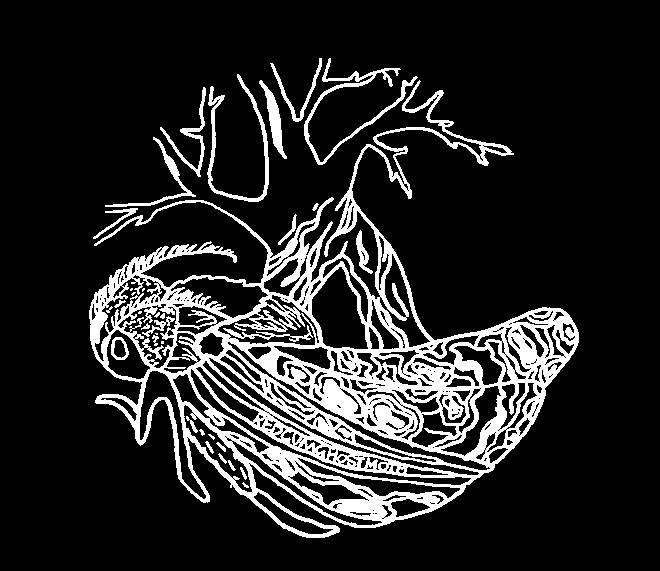
It bides its time, slowly turning in a shadowy trance. Eventually, it lies forgotten, cocooned in eternal twilight. Memories ebb away as daylight devours the dark.
Breathe in. Enfolded by scents of nectar and eucalypt, I stretch towards the sun. Billabong waters sparkle like a twinkling eye as glorious light pours down over me. My belly shines back—pearly and lustrous. Standing in my power, anchored to the earth—I breathe out.
And the land breathes in. Silver fields of grasses play and ripple like a shimmer on a lake. Half heavy with growing seed heads, they bow down—then rise in their desire for living. The sky draws a little closer.
My fingers glimmer with light and love as they gently tickle life’s threads. Humming the old songs—songs that call the earth and sky home—I start to spin a fine strand. Weaving and winding, reeling the world in, I slowly pull the mystery inside. It drifts and twists, flowing down into my belly; and then, like a serpent coiling around a rock, it nests.
Earth and sky would unravel. They wish to fall, entwine, collapse—but I hold the space. Feet planted; arms thrust high— holding a moment against eternity.
It broods and bides its time. A steady dark eye in a swirling cyclone, watching the storm unfurl. It patiently weaves the ancient threads as a billowing tempest circles round. Gathering strength and fizzing with potency, it quickens in my belly.
Time frays. Shaken to my core, I come adrift. Uprooted and turning like a wheel, I am violently swung down into the earth. Bewildered, thrown down from the light, I hold my breath.
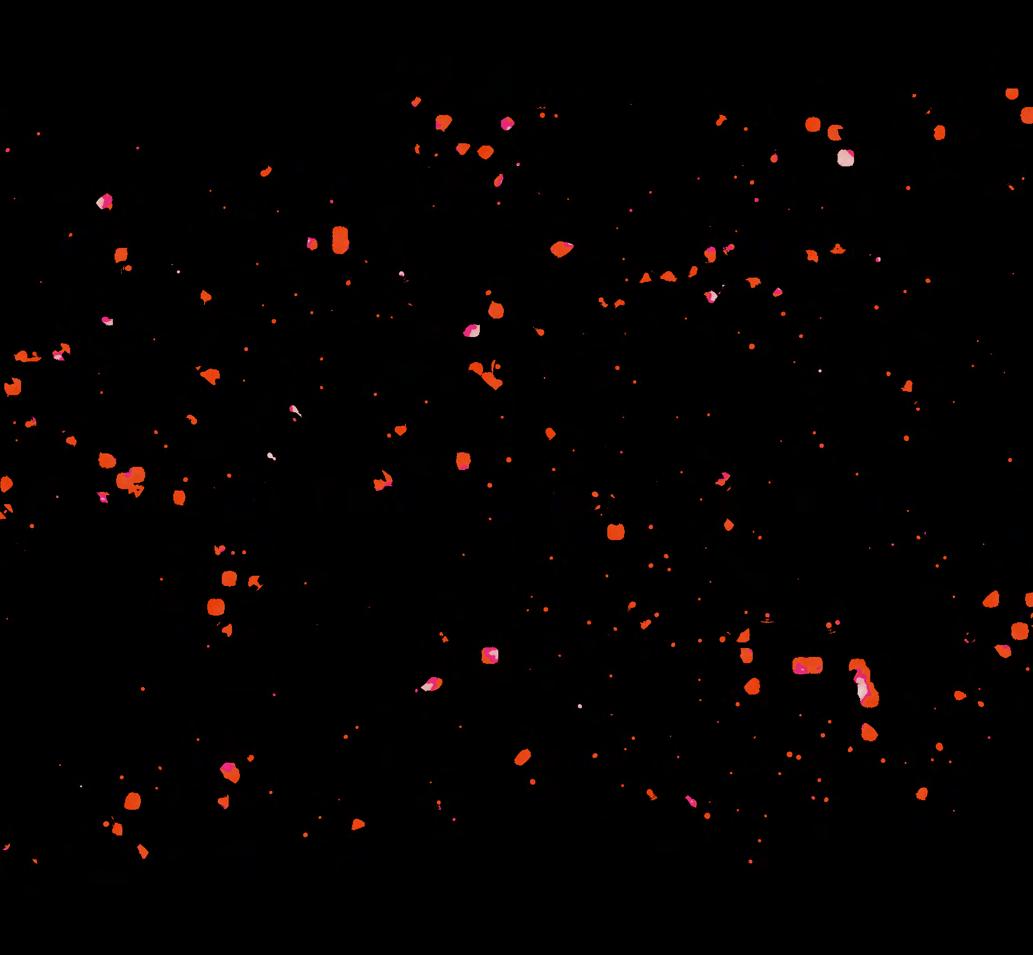




A timeless landscape dimly unfolds around me. One by one, jewelled stars glisten into existence, and I gasp in awe. They wink in the velvet sky like scattered
moonlight shines through these things into uncharted worlds.
In the pearly stillness, her feathery antennae hear the ancient songs. Her glowing eyes see beyond time’s horizon to witness the birth and death of stars. She is a sacred thing—a thing of sticks and fur and feathers. Moonlight pours down over the spiral patterns on her wings. They dance with the ancient cycles of earth and sky. I see them—and know my place.
Redgum Ghost Moth caterpillars live under Redgum trees. They build a vertical tunnel with a hinged lid and feed on the tree’s roots. Once they are fully grown and after autumn rains, the moths emerge from their tunnels at night. They are a large moth with beautifully patterned wings and feathery antennae. Their wings can span 17 cm and they can lay more than 18,000 eggs.
Humbled, surrendering to the infinite—I breathe out. The constellations witness me with cool clarity.
Something tickles my toes. Thought forges into form—a delicate thing of sticks and fur and feathers. She climbs into the world, discarding dark aeons and a silken cocoon. Wrapped in her velvet cape, eyes flaming red—she remembers. She knows that darkness reveals truths hidden by light. Sunlight gives things edges—and names. It dazzles with a certainty that things can be measured, known, true. But
Many insects are valued by Australia’s First Nations peoples and form a part of totemic and ceremonial life. Both the large caterpillars (like Witchety Grubs) and adult Redgum Ghost Moths provide a delicious and nutritious food source. On autumn nights after rain, people gather and use the light from big campfires to attract the moths. Moths can then be caught in hand-woven nets.
One of the most distinctive characteristics of moths and butterflies is their ability to transform. Hidden within a caterpillar’s body are enigmatic centres for metamorphosis. During pupation, the caterpillar disappears as it grows a new body from a series of “imaginal discs”.
The Redgum Ghost Moth; Abantiades
Arbiter Elegantarium Josephine Carter
Je t’offrirai des perles de pluie si tu oses accepter, Je t’offrirai une éternité de soleil si tu es immortelle, Je t’offrirai tous les papillons de la forêt si tu aimes les animaux, Je t’offrirai des oiseux qui chantent dès l’aube si tu préfères la musique douce, Et si tu me demandes qu’elle soit forte, je t’offrirai le tonnerre d’une tempête.


Ou même des vagues sur le sable. Je t’offrirai la douceur qui fascine si tu te sens curieuse, Je t’offrirai le plaisir qui tue si tu veux mourir, Qu’est-ce que tu veux, madame arbiter ?
I will give you pearls of rain if you dare to accept them, I will give you an eternity of sunlight if you are immortal, I will give you all the butterflies of the forest if you like animals, I will give you birds who sing from dawn if you’d rather gentle music, And should you ask that it play louder,
I will give you the thunder of a storm. Or perhaps the roar of waves crashing onto the sand. I will show you pain that fascinates if you seem curious, I will show you pleasure that kills if you prefer to die, What would you like, madame arbiter?
113
Tribute to the Womb

Madelie Joubert
About the Artist
Madelie Joubert is a fourth-year student at the ANU, studying Medical Science and Music. She focuses on the human figure and anatomy, often using charcoal, watercolour, or gouache paint as her medium. This series was part of an exhibition of final works from the ANU course MEDN2222: The Exquisite Corpse.
Artist’s Statement
My aim with this collection is to pay tribute to the uterus. It is a part of the body that is hardly ever seen, a mysterious organ. Yet it is an amazing organ that is capable of so many things. It gives us pregnancy, the experience of bringing life into the world. It also brings pain, through various forms of disease. On the right, I first depict a healthy uterus to show what one commonly looks like. Then a fibroid uterus, where a massive tumour has grown. On the left, I depict two uterus cross sections to show endometriosis/endometrial cancer and ovarian cysts/ovarian cancer. The first two uteruses were painted from real-life photos I was lucky enough to access thanks to my mother, who is a gynaecologist-obstetrician. This series is in part a tribute to her life’s work, which inspires me.
114
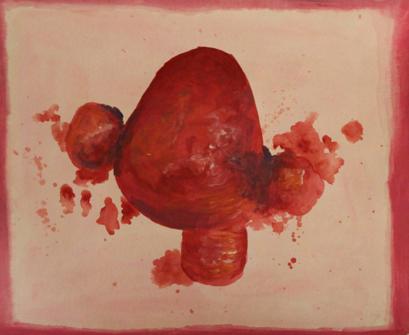



115
On Friendship: A Best Friend Interview
Lily Harrison and Juliette Straughair

and Lily on the train to Bungendore circa 2006.
This interview has been edited for length and clarity.
Holding Juliette’s (Jules) hand is like palming a freshly-laid hen’s egg— warm and smooth and comforting. Being her friend is like holding her hand all day, every day. I call her “my sunshine” because she is the warmest, most generous person I know. The kind of person who asks the Woolworths cashier how their day is going, tells a random woman crossing the street that she looks amazing in those shoes, and brings me gourmet sandwiches when I’m having a hard day.
I don’t actually remember meeting Jules, but I know it was at the Canberra Hospital childcare centre. Based on
the timelines of our lives, we guess we were about three years old. If we put our heads together, we remember years of matching rainbow waterfall skirts from Pumpkin Patch, hours of Hi-5 cassette tapes on my living room floor, and a summer spent dancing to So Fresh albums and bathing my baby sister in a big blue bucket.
The year I turned seven, my family moved from Canberra to Queensland, and some years after that, we moved even further along the East Coast. For 12 years, I lived a 12-hour drive away from where Jules had stayed steady and firmly rooted in Canberra. In 2021, I moved my boxes back to this Ngunnawal bush country of red and gold autumn leaves and Kingsley's chips to start university.
Now, if the traffic lights are green, it’s less than five minutes from my door to Jules’ bed—where episodes of Law and Order: SVU offer much comfort in the cold months of winter and where, in the dining room down the hall, I’m always welcome to stay for dinner. This year, Jules and I took each other out for a fancy dinner and hit record on a conversation that travelled the backroads of our friendship. There we found the memories of childhoods spent together, experiences of growing up apart, and a new appreciation for the enduring love and respect we have for one another as we step into adulthood side by side.
What would you say are the three most important things that make our friendship what it is?
116
Jules
Jules: I think the fact that we can be authentic with each other is my first one. I like that I can text you and say, “Just a sec, I’m currently doing a poo.”
Lily: We show up for each other. We are always there for the bad bits and the great bits—like when you had surgery on your knee, and my 16th birthday. If you call, I'll be there. My second is trust. I feel like we’ve been friends long enough that we are really secure in our relationship. It’s okay if we don’t talk every day, and if one of us builds a strong friendship with another person, we both see that as a good thing.
Jules: I think that comes from our not having been in the same place forever. It means we have to make an effort to see each other and [that would be my second thing]—we absolutely make the time.
Lily: My third is that our families know how important our friendship is. It’s really special to me that I could (and do) come and sleep in your spare room for a week, and I feel safe and comfortable in that space.
Jules: That would be my third, too. Comfort in someone else’s space is not something I have with a lot of people, so I really value that.
Lily: There’s also a lot of respect in this friendship—we don’t have to agree with one another to support and love each other.
Jules: Absolutely. And we’re getting really good at calling each other out on stuff, too.
What is a trait you admire in me?
Jules: You’re authentically yourself at a young age—always have been. You’ve always known who you are, and you stay true to yourself.
Lily: You can find a point of connection with anyone. You’re really good at making people feel comfortable. I mean, you walk down the street and you will talk to anyone—you can just relate to people in this special way. It gets me out of my shell, too—every time I see you chatting with a stranger, I really admire the depth of conversation you can have with them.
What’s something I’ve introduced you to?
Lily: Oh, that’s an interesting question. Do you have something in mind?
Jules: I do.
Lily: I think you’ve introduced me to some styles and music I may not have discovered on my own, places to eat in Canberra… oooh, and Coach House chocolate milk!
Jules: Well, firstly, you’ve expanded my palette. But the world of vibrators is a big one. I’m really glad you introduced me to that.
Lily: I remember the first time I mentioned I’d one for myself and it was a bit awkward… then about a year later when you bought one for yourself, I was so proud.
Jules: I went to an all girl’s Catholic high school where sex wasn’t spoken about. It wasn’t really spoken about at home, either. So having insight into a different experience was very influential for me.
What’s your favourite friendship memory?
Jules: When I had my knee done [major surgery]. I was so upset and had been through such a rough moment—I couldn’t do anything, and was realising how little independence I was going to have [while I recovered]. You showed up and just sat with me and held my hand while I cried. You were there with me when I came home from the hospital and whenever I woke up. It’s such a strong memory for me, because you were there for me before I even knew I needed you to be.
Lily: I love you.
Jules: I love you, too.
Lily: My favourite memory is when I secretly came to Canberra for your 18th birthday. Your mum had met me at the airport, and you were stressed that she’d taken so long to “pick up a few things”.
When I walked around the corner, you ran and jumped on me and we had this big hug. Your excitement in that moment
made me feel really loved.
What’s your biggest friendship regret?
Lily: With us?
Jules: Yeah.
Lily: I think that, because we were young and because I lived far away, I wasn’t super aware of what was going on when you were having that really difficult time [with illness in your family]. I’m disappointed I wasn’t able to support you more.
Jules: I think since we’ve been living a lot closer to each other we’ve been able to fill in those gaps in our knowledge and become much closer than we had been. I wish we had seen each other more in high school, though.
Lily: Do you think we would be such good friends now if we hadn’t had that distance during high school?
Jules: I don’t think so.
Lily: I think we were on quite different paths, and I don’t think we were ready to show the maturity and respect we do now. So for me, that time apart isn’t a regret.
Jules: I agree. That distance did allow us to grow and to bring that [growth] into a really strong friendship today.
What advice would you give your high school self about friendship?

Jules: You don’t have to be in the big group of friends, or be friends with the popular girl, or have everybody like you.
Lily: You don’t need to be friends with someone forever for it to have been a good friendship. I also wish I’d lowered my expectations for what a friendship should be and not been so hung up on trying to make every friendship this idealistic “best”.
Jules: Yeah, I think you can have lots of best friends. People can be best friends in different capacities.
Lily: I’m still learning that having a small group of really good-quality friendships
117
is better for me than having a massive circle of people around.
Jules: There’s a difference between knowing a lot of people and having strong fulfilling friendships.
Is it okay to have secrets in a friendship?

Jules: Yes. Some secrets are important [to have] but there are also some secrets you definitely need to tell someone— like your best friend—especially if they’re weighing on you.
Lily: I don’t feel the need to tell each other everything. As long as we tell each other the important stuff—the stuff that matters.
Do you need to have the same interests to be good friends?
Jules: Yes and no. You need some shared interests to create common ground, but not everything needs to be the same, you just need to be willing to respect the differences.
Lily: See, I think you need shared values and shared experiences, but you don’t necessarily need to have shared interests. But I can also see what you’re saying. Like, how would we create a shared experience if we didn’t both have an interest in going on walks?
Jules: Yeah, exactly.
Lily: Having said that, you definitely need to have a mutual dislike of the same things—the secret to a good friendship is hating the same people.
Jules: Oh my god, yes!
Do you have to like your friend’s partner?
Lily: No.
Jules: I don’t think you do, either. You just have to be civil with them.
Lily: I think you need to respect your friend enough to acknowledge that who they date is their decision, as long as it’s not unhealthy. Like, I know that [your boyfriend] treats you well and that you like him and that he’s a good person. That’s all that matters.
Jules: Exactly. I don’t need you to be his best friend. I do expect you to engage in conversation and to not make my
relationship with him difficult. I want to place equal value and importance on all of my relationships—romantic and with friends.
What’s a challenge our friendship has overcome?
Lily: Distance?
Jules: Yep. And I think we’re learning what distance looks like now that we’re geographically close—like when we’ve had enough of each other.
Jules: Do you think personal growth is important for friendship growth?
Lily: Yes.
Jules: They go hand in hand.
Lily: Now, this isn’t for us—but you’re allowed to outgrow friendships. That in itself is a valid reason for letting something go—a friendship needs to add value.
Jules: Yes, of course. But not us.
Lily: Good.
Jules: Thoughts on dessert?
118
Henry VIII and the Histo-Remix Maddie Chia
CW: Mention of sexual assault, trauma, and child sexual abuse.
Divorced, beheaded, died; divorced, beheaded, survived.
Tudor history has been a big part of my personal coming-of-age story. Growing up, I was always a huge history nerd; so were most of my friends. The culmination of my Tudor obsession was asking my mother if my sweet 16th could be Henry VIII and his six wives themed. I think she was just glad I’d grown out of my emo phase from the previous year. This fascination with Tudor history began when I went to London at 13—I own every piece of Henry VIII merchandise sold at the gift shop. Scratch-and-sniff books, Christmas tree decorations, with my foam mask of his face being my favourite possession. I own three of these, just in case I misplace one.
I grew out of this phase, and mostly forgot about it when I went to university. All the merchandise and the meme wall I created in my room were pushed to the back of my wardrobe. It wasn’t until last year, when I was driving with my best friend and she played the soundtrack to Six, that I was once again hooked on Tudor history—this time, through a different lens: the wives and their stories. As I began listening to the soundtrack and researched the musical’s origins, I started to question my childhood
fascination half a decade on. When we learn about Tudor history, we are taught about Henry VIII and “his six wives”. It’s never phrased as Catherine of Aragon, Anne Boleyn, Jane Seymour, Anne of Cleves, Katherine Howard, Catherine Parr, and their husband Henry VIII. These women are known merely because of the man they married, not for what they achieved.
Six is a powerful retelling of their lives through a feminist lens, giving a voice to women who were told to stay silent and endure traumatic behaviour from men. It explores themes of empowerment, autonomy, and exploitation, drawing parallels between the women’s stories and the modern woman’s experience. It is also the only musical to date that features a cast made up entirely of women. Each wife has her own solo about her life and experiences with Henry VIII, with the queens’ characterisation being inspired by modern pop singers.
Six is framed as a pop concert and mini competition between the ex-wives to see who endured the most trauma while married. By initially imagining rivalry and hatred between the wives, the musical evokes the
common trope of pitting women against each other when a common man is involved, with the writers drawing ironic comparisons to how women in history are depicted as accessories, vying for attention through their association with men. This irony is not only tied to historical objectification, but also references the way the media still actively encourages slut shaming and competition between women. While the queens later address how their musical’s competitive premise was a symptom of patriarchal pressure, the irony is not overly explicit across the show, and is sometimes in danger of being lost in translation, especially when lyrics like “I think we can all agree I’m a ten amongst these threes” are prevalent throughout and are played for laughs, not leaving the audience much time for any serious reflection. Nevertheless, their rivalry implicitly adds nuance to Six’s portrayal of complex and imperfect women in the spotlight, specifically challenging the ingrained biases we often hold about other women.
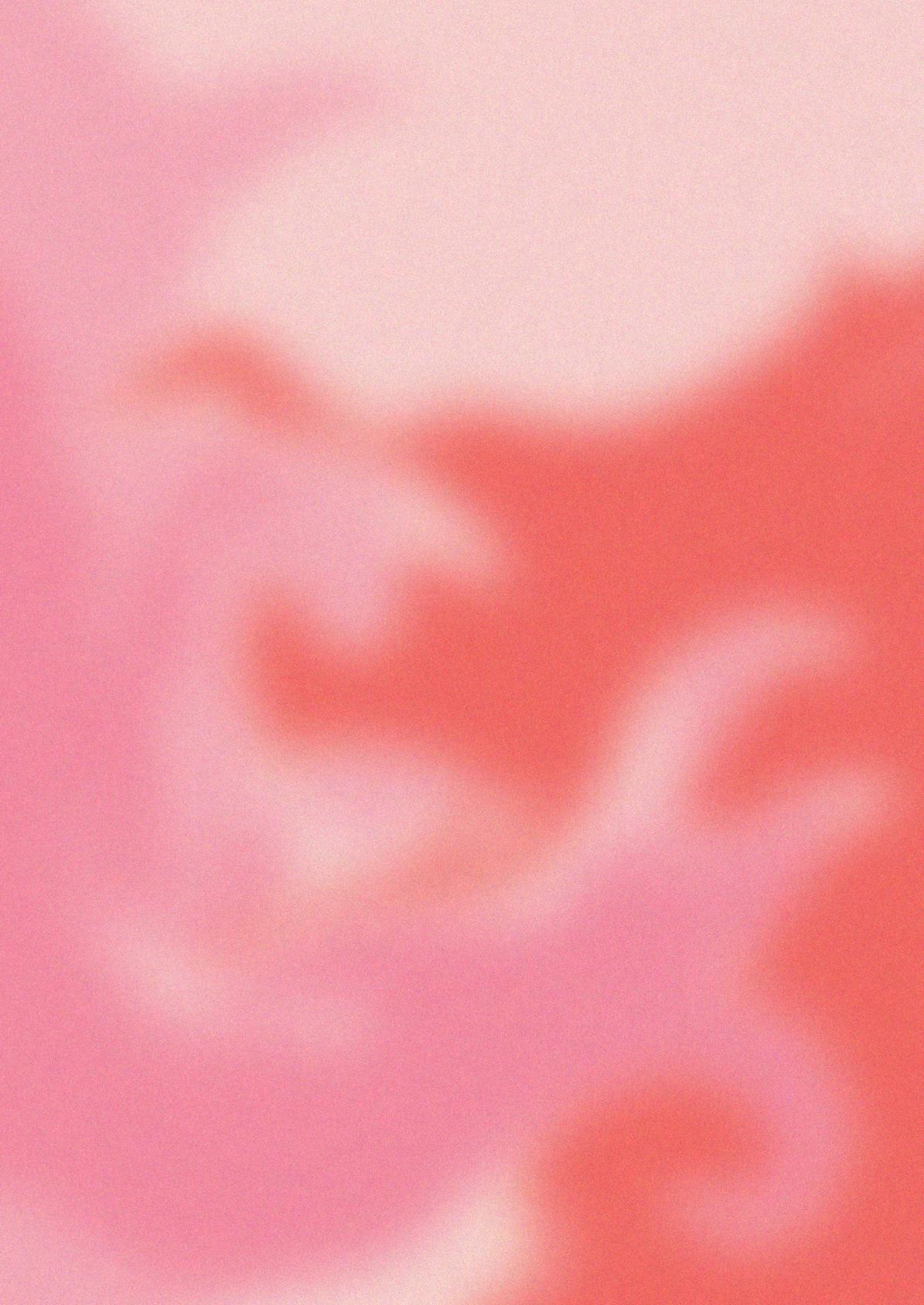
The musical ends with the queens uniting and vowing to rewrite their own stories, changing each from “hisstory” to “her-story”. Its final song is a reimagination of their lives if they had said no to Henry VIII, about living for themselves rather than a
For me, the most intriguing aspect of the musical is the story of Katherine Howard. Katherine Howard’s persona is

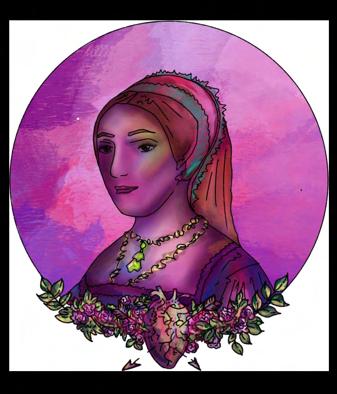 Artwork by Navita Wijeratne.
Artwork by Navita Wijeratne.
largely based on Ariana Grande, Miley Cyrus, and Britney Spears—singers who were all sexualised as children by the media, similarly to Katherine. Her comparatively revealing outfit is symbolic of the scrutiny women and young girls continue to face after having dressed in a way that is deemed “inappropriate” or “highly provocative”, an allusion to how the men in Katherine’s life justified abusing her based on her appearance. Six was written in 2017, in the midst of the rising #MeToo movement, and Katherine’s story highlights the continued importance of raising awareness about the historic abuse women have been subjected to that is unfortunately still commonplace. Her solo starts off with a cocky and sexual tone, as she states “ever since I was a child, I’d make the boys go wild”; however, as the song progresses she becomes extremely agitated and frantic as she tries to assure herself that “I’m sure this time is different” after each man exploits her. Katherine Howard was around 17 years old when she married Henry VIII, who was 49 years old—32 years her senior. This pattern of neglect, abuse, and emotional trauma was present in all of Katherine’s significant relationships with men. She was courted by her music teacher Henry Mannock when she was no more than

15. There is no real consensus on when Katherine was born, which means she may have been even younger.
Katherine’s song really resonated with me as a survivor. To this day, women are catcalled on the street, boys take advantage of us, and child pornography unfortunately retains a large consumer base. The other wives berate Katherine Howard for being too sexual, which again parallels the modern experience of women tearing other women down for how they appear. Some go as far as calling other women names, such as whore or slut, which perpetuates patriarchal ideology and devalues bodily autonomy. The repudiation of women’s and young girls’ autonomy has happened constantly throughout history, with so many key historical figures being married off extremely young. While this was partly due to historical social constructs, examining this from a modern lens, it is exploitation. Katherine Howard was beheaded in 1542, likely younger than 18 years old. She was a child. History has been so fixated on Henry VIII that we don’t even know how old Katherine was when he had her executed. Her song in Six forces us to confront the reality of the exploitation and perception of women as commodities, both in history and today.
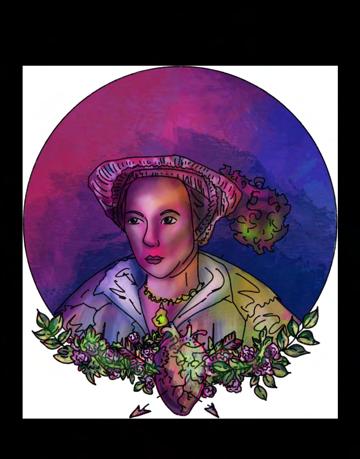


Six gives back autonomy to these incredible women and confirms the gravity of everything they went through. It is the perfect blend of pop music, theatrical retelling, and Tudor history. It is about questioning what we have been taught in mainstream history and the glorification of toxic male historical figures. In itself, it is an extremely creative production that exposes the alarming toxicity of Tudor patriarchal structures, giving these women the space to tell their own unique stories of love, violence, and trauma. I hope that Six’s legacy is to spur a trend of normalising women’s voices in history studies and acknowledging their importance in pivoting major historical events.
My relationship with Henry VIII and Tudor history will always form a large part of my identity and be a key interest of mine. However, I’ve come to realise that maybe the reason why I latched myself onto Henry VIII as a historical personality was because of my affinity for toxic men and my past traumatic experiences. Six allowed me to understand and unpack issues of misogyny in history that had never previously crossed my mind. I am no longer ashamed of my obsession with Henry VIII, but proud of my newfound knowledge about the period’s amazing queens and what they had to overcome.
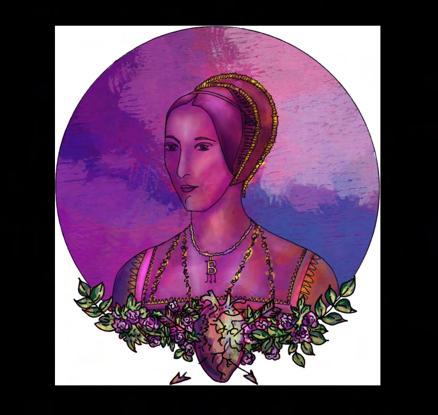
Reclaiming Vanity Elentari
Berryman
CW: Mention of eating disorders, body dysmorphia.
In 2011, One Direction famously sang: “You don’t know you’re beautiful / That’s what makes you beautiful”. Banger—but bullshit. Too much of the world’s status quo depends on women being made to feel insecure and condemned for their perceived femininity or lack thereof. In a society full of judgement, objectification, and where beauty standards are designed to break you down, it’s both radical and freeing to reclaim vanity.
Social ideas of aestheticism are created and used to make women feel inadequate in the pursuit of an impossible beauty ideal. In The Beauty Myth, Naomi Wolf personifies this unattainable standard sold to women as the “iron maiden”, whose haunting existence punishes women both physically and psychologically. These beauty ideals are damaging, but also full of contradictions and inconsistencies. Every decade we invent a new trendy body for women; didn’t you hear that BBLs and an hourglass figure are out now? Pressure to conform translates further to social conditioning on how to think and act. Women are forced to care about their physical appearance or else be condemned as sloppy, unpresentable, and unlovable, with their worth measured almost exclusively by their compliance with toxic beauty norms. Yet these same women are often called out as shallow, fake manipulators who use makeup and spanx to “trick” men, or as girly airheads who aren’t allowed the depth of thought given to men. Even when women are complimented for their conformity, they’re expected to show humility, which often manifests
in devaluing another aspect of themselves. Women are not allowed to believe themselves adequate, let alone stunning or impressive.
This damaging social pressure doesn’t even begin to address the realities many women face: it’s evident that race and ethnicity add another set of expectations about beauty and behaviour. So many women juggle the burden of Western beauty standards with those of another culture despite their incompatibility. As a biracial woman, I often feel like I’m too “Other” to fit either beauty standard, which are so contradictory that I don’t even know where to begin. My Taiwanese friends use skin whitening treatments; my white friends fake tan. My Taiwanese friends use double eyelid tape to achieve bigger eyes; my white friends use eyeliner to appropriate my naturally “snatched fox eyes”. I’m too big; I’m not curvy enough. It goes on. No matter what I do, I can’t conform, and I can’t win either way. But hey—at least I hit the “mixed-raced babies are sooooo cute” niche!
My friend Verdi recently talked to me about how these pressures uniquely affect transgender women, manifesting as a higher expectation to perform to what a socially defined “woman” is—as if you must prove your womanhood in cis spaces. I can’t imagine how exhausting and painful that must be. It’s bullshit that there are rules and expectations
on beauty and behaviour for a woman that no one, neither cis nor trans women, can actually meet; not to mention how they’re all based on binaries that fall apart the moment someone steps out of the box they were placed in. These standards are used to control women, but they have nothing to do with being

Personally, I don’t think womanhood or femininity can be defined—they’re whatever you want them to be—but even if they could, they would not need a man to continuously outline their parameters.
Beauty standards keep women trapped
121
in self-destructive states, convince them of their lack of worth, and create insecurities that expand to all areas of life. When you’re already operating in a world designed for men and fighting for the bare minimum of respect, it can all become too much. If it’s so impossible and contradictory to fit these made-up standards of beauty and “femininity”, why even bother to try?
I say don’t. Reject it all. Fuck beauty standards, and fuck anyone who tries to limit and define womanhood. Reclaim vanity: become completely and utterly self-obsessed and in love with yourself. I see reclaiming vanity in checking yourself out in reflective surfaces; taking and posting those selfies; raising your hand; actively celebrating your academic achievements, sporting victories, job promotions. Reclaiming vanity is being vocal about your culture and your language—for me, it was going from anxious to proud about bringing Taiwanese food to school.
As a woman in law, I reclaim vanity by channelling Elle Woods from Legally Blonde to affirm to myself that I belong in this space.
Reclaiming vanity doesn’t restrict growth and self-improvement; it means you know you’re always enough, and that you love and admire every iteration of your being. It’s knowing you’re the shit and behaving in a way where men would be called confident and women arrogant. I don’t think the world knows what to do with a vain, self-obsessed woman—there’s something about her that infuriates weak men. She cannot be browbeaten by societal norms if she simply does not care. She doesn’t feel the need to put other women down, and instead celebrates womanhood.
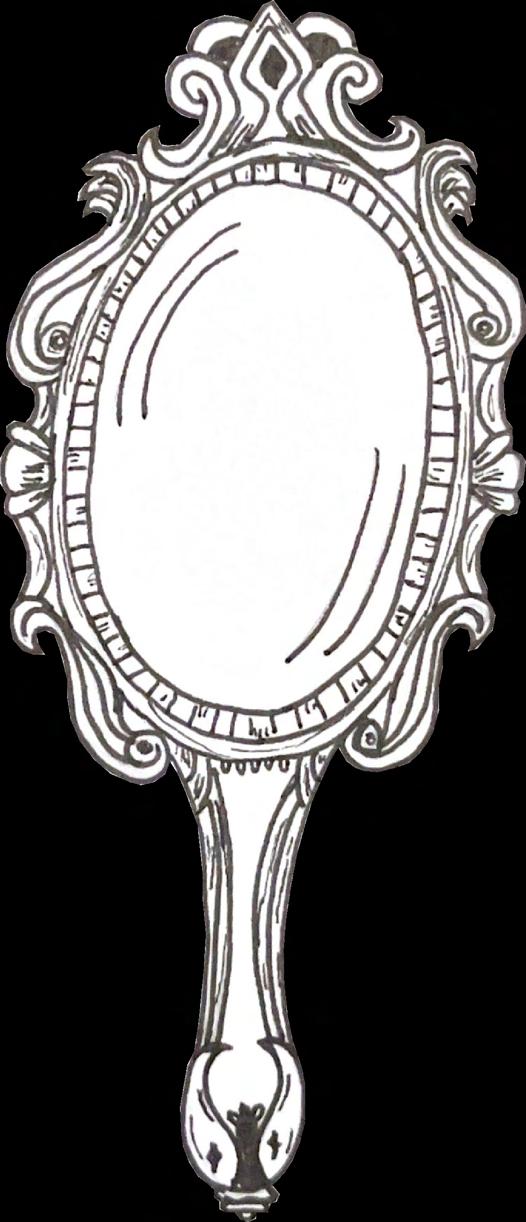
Reclaiming vanity is freeing—physically and mentally. There is no need to play into the role of the socially defined cisgender woman. I often ask myself if I would dress the same way if I felt less observed or less judged. Would I
have the “balls” to put myself forward for more opportunities? I had someone once tell me that feeling vain when she looks at herself in the mirror is pure joy; it’s gender affirming, and represents winning a long fight against body dysmorphia. As someone who’s struggled with disordered eating, my relationship with my body and how it ties into my estimation of my self-worth can be a little messy.
For me, reclaiming vanity is about reclaiming my own body, in a way. It’s about deciding that my body isn’t an entity that can be judged and deemed “wrong”, and instead transforming it into a part of me worth loving and admiring. I purposefully reclaim vanity in the way I talk to myself— not necessarily because I believe all that I say, but because I want to.
My friend Grace describes spontaneous moments of vanity as “God Complex moments”. When I think about reclaiming vanity, I think of her telling me I was the prettiest crier she had ever seen as I bawled my eyes out. At my lowest, I think this kind of ridiculous, over-the-top, spontaneous love for myself that she encouraged was the kind of care I needed. Reclaiming vanity is always recognising your strengths—even if one of them is crying. It’s uplifting, and I view it as a victory every time I have a God Complex moment out of the blue. Reclaiming vanity brings you joy from your own existence, which has helped me so much more in healing my relationship with myself than neutrality or self-criticism.
It’s hard to reclaim vanity when so much around you tells you to feel otherwise— but it’s worth it. So, try vanity out. See how it looks on you. Strut down Uni Ave; give your voice the platform it deserves in your tute; love yourself just a little bit more unconditionally, and a little bit harder. I personally believe that women are at their most stunning when they they’re beautiful—but speaking as a vain woman, I ask: who cares what other people think is beautiful, anyway?
122
Self-Exhibition: A Photo Series
Zoe Grahl, Zac McCarty, and Lucy Sorensen

Whether from a fear of judgement or a longing to be accepted, we sometimes internalise parts of our identity based on what we believe others will find more desirable. The way we express ourselves can be carefully curated to uphold this façade. Our appearance and behaviours are a glimpse into how we want people to perceive us. Generally, we want to seem relatable, approachable, normal—and typically, we use self-expression to project such ideals, in turn protecting our real identities.













This seeps into the way we dress. It’s all too easy to wear what’s cool and trendy, irrespective of how badly you want to wear those new sparkly yellow tights. It’s intriguing to consider how we might display our true selves if we were suddenly liberated from all social expectation. There is rarely an instance when we can move through the world and feel completely free of all external judgement.

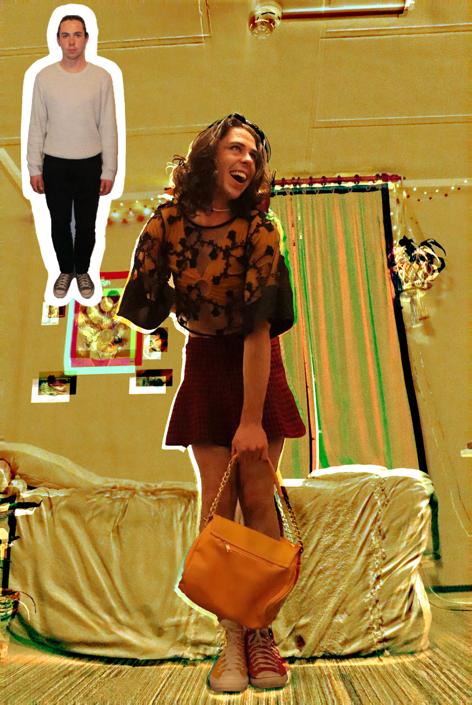
“Self-Exhibition: A Photo Series” exhibits an authentic and unashamed reflection of our true selves. These images are paired with the conforming identity, lingering within the top left of each image. Their juxtaposition highlights the complexity of selfexpression, as we often exist concurrently within several contrasting facets of identity.
This vindication of the true self acts as a refreshing reminder that personal uniqueness triumphs. It is the bold self that is the most striking within the photo series. We celebrate this authenticity.
For the majority of my life, I have lived within a confined box of masculinity. This confinement was most suffocating throughout my youth. Some days I would wake and feel masculine, yet other days I would feel super feminine. I lacked a safe place to explore these conflicting identities growing up. As a result, I ignored my more feminine side for years. Through time, this internal battle with gender grew stronger. I felt as if I was expected to be something, but every day it became more difficult to fulfil this role.
At 17, I came out and began to really accept myself. Coming out helped me to break free from gendered norms. Finally, I felt as if I could be more adventurous, and became much more comfortable diving into my femininity. The first thing I bought to truly honour this femininity was eyeliner. Then nail polish. Then skirts. In everyday life, I do still tend to wear predominantly masculine clothing, as it is more normalised, and in some ways, it just feels easier. I fear people will treat me differently based on the way I dress. We all want to fit in and be “normal” at the end of the day. But right now, wearing this skirt, I feel comfortable as fuck. I feel sexy, unique, and happy. I feel like me!
— Zac McCarty
123
Growing up, I was a pretty typical youngest sibling. My closet consisted entirely of hand-me-downs, and I would experience biweekly screaming matches on who stole whose new Levi’s. My fashion identity was essentially whatever my sisters would pick out—post a year or two of wear. It wasn’t until late adolescence that I finally began to forage outside my sisters’ second-hands. I was tired of my internal organs being choked to death from the sheer tightness of Liv’s crop tops and became slightly nauseated by the obnoxiously bright pinks and yellows of Soph’s maxi dresses. I yearned for something comfortable, something plain, something simple.
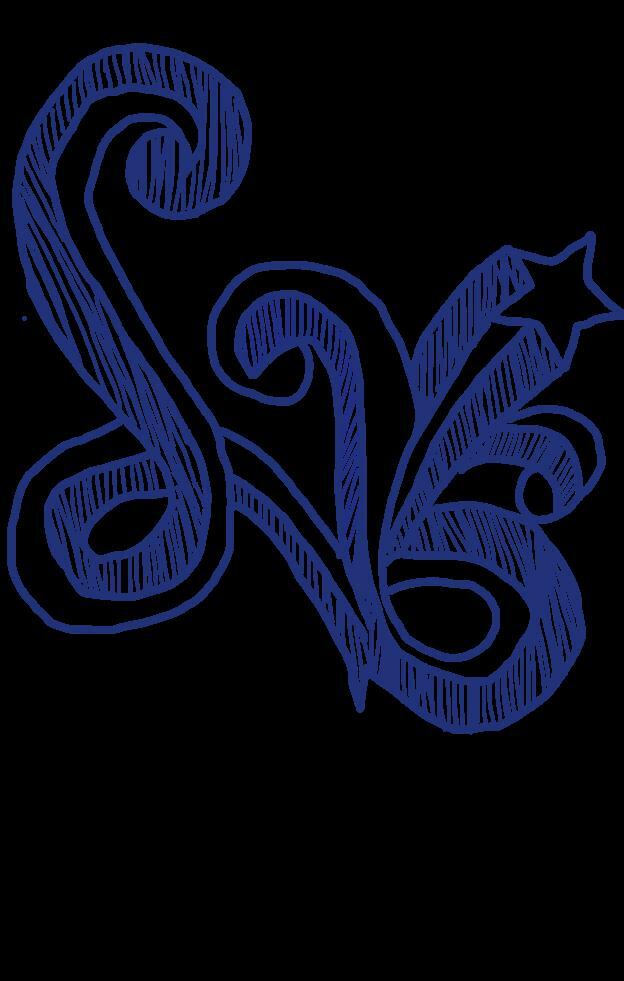












As a result, I found refuge within my dad’s wardrobe. There was something about the XXL polos and the baggy button-downs that filled me with relief. Finally, I felt comfortable. But more than anything, I felt confident. I liked the way these clothes draped on my body; they accentuated my broad shoulders and my prominent collarbones, while weakening my stomach, my hips, my thighs, beneath the pools of fabric. I felt like I didn’t owe anything to anyone. I didn’t have to suck in, wear a bra, shave my legs. Plus—I looked pretty damn cool. I looked like the boys I used to envy growing up—the “skater boys”, rocking Dickies and distressed Reeboks. Unfortunately, there was no “big defining moment” when I put on my dad’s clothes and never looked back. Instead, I continued to wear the tight crops and bright-coloured dresses—mostly out of a fear of judgment.











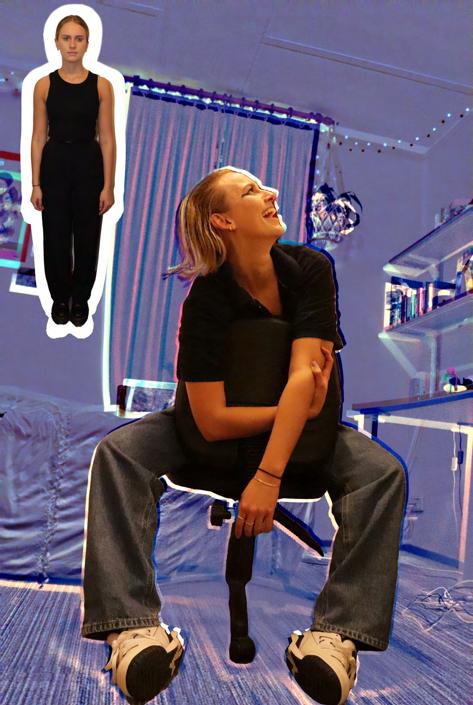







 — Lucy Sorensen
— Lucy Sorensen
124
When I was younger, I would spend hours in my room carefully curating outfits that I thought looked super cool, with no care in the world about what my body looked like. At 14, I started to become conscious of middle-aged men glancing at my chest when I walked through the city. I didn’t like that, so I made it stop through my clothing. In high school, every boy I dated constantly complimented my curves. The emerging repetition of comments in each relationship left the uncomfortable, “Am I being sexualised right now?” question in the back of my mind. I began to resent the stereotypically feminine aspects of my appearance and even my personality.


























Deep down, I do love these traits. I enjoy being completely myself with people I love, being emotional and affectionate. Nevertheless, I subconsciously dampened that side of me and have often refrained from dressing in a typically feminine way. I’ve recently become aware of this, and now I want to reclaim my femininity. That’s why in this series I wore a long silky dress that I love, paired with accessories that make me feel powerful. I want to dress in a combination of whatever the fuck I want, letting go of that fear of being sexualised or perceived as overly feminine. Nevertheless, it’s hard for me not to think about it whenever I look in the mirror before I leave my room. Some days, I still prefer to use how I dress to protect myself from being sexualised, because it’s easier than worrying about it all day.






 — Zoe Grahl
— Zoe Grahl
125
Constructing an Ideal Self with a Virtual Body Interview by
This interview has been edited for length and clarity.
Vaughn Valerie is a Filipino transgender woman, multimedia arts student, aspiring animator, and high-spirited gamer with a passion for shimmer and gloss. In fact, as soon as this interview ended, Vaughn and I embarked on the intense journey of whetting a gamer out of me through several matches in Wild Rift: a mobile online game in which her champions of choice included a rotation of the most charming and iridescent playable characters in existence, while I rode and died with my meagre, glove-wielding, magical twink. If I were to describe my playmate, I’d say she was emphatical, albeit perfectly ingenuous—the sparkles, I think, perfectly encapsulated her personality.
This, obviously, was not Vaughn’s first foray into the ever-expanding universe of League of Legends. It was upon my first glimpse of the characters she usually chooses from League’s 161-strong roster, though, that I well and truly came to realise how our identities and preferred methods of gender expression dictate the personas we portray in the virtual world. From there, I started questioning if—as transgender people living in a cisnormative society—it’s possible that our queer explorations of the virtual world were what first acquainted us with the personas we came to comfortably adopt offline.
Eager to hear her thoughts, I rang Vaughn up on Discord—a digital communication hub frequented by metamorphic pedestrians—and asked her where, exactly, she first traipsed into the world of online gaming.
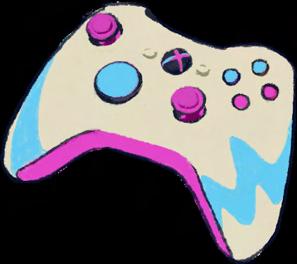
 Sebastiàn Ungco
Sebastiàn Ungco
Vaughn: The first online games I played were mostly those old-school ones from Facebook like Pet Society and Farmville, which I played with the one friend I had at the time. I also got into stuff like Minecraft…?
Easy enough.
How did your taste in online games evolve, and what do you play now?
Vaughn: Over the years, I think I’ve become more aware and appreciative of every single element that writers and developers pour into a video game—the art, the stories, the characters—I tend to be drawn to those that execute these elements well. So, now I play games like League of Legends, Stardew Valley, Pokémon, et cetera.
Sebastiàn: Would you say that you now lean towards more immersive experiences, and the ability to “see” yourself inside the game?
Vaughn: I do—that’s why I tend to gravitate to the more comforting ones. League of Legends is the heaviest game I play, so…
Sebasti that’s filled with the most sweaty gamers.
Vaughn: It is! When and why did you start playing League of Legends?
Vaughn: I was already playing mobile 5v5 games beforehand—I was really good at them, not to brag—then I heard about League of Legends. There was a lot of buzz surrounding not only the game itself, but also the multitudes of audiovisual content surrounding the lore and its universe, like with Riot music, K/DA [a virtual K-pop girl group composed of League of Legends characters], and their cinematics… I wanted to try it out for myself and understand all these characters that I’d been hearing about.
Sebastiàn: So, you were more captivated by the story that League of Legends told to its players?
Vaughn: Yeah—it’s fascinating how, thanks to non-game content like that, some new members of the fanbase don’t even play the game. I was once one of them!
n: Was an aspect of comfort still there for you once you played, then, despite the community?
Vaughn: There was! I guess the existence of feminine characters, as well as their designs and kits, was my main source of comfort, which motivated me to keep playing despite how dehumanising some interactions get at times. The game is generally fun; there’s also
126
such a good balance between the art and writing behind everything, so I hold out.
Who do you main and why do you like these characters?
Vaughn: I main this character called Seraphine, who is basically a manic pixie dream girl; I also play characters like Lux, Sona, and Seraka—[they’re supports, so I’m mostly there to help, save, and accompany other players. These are very enchantress-y characters, you see; I’m a big fan of pretty and cute visuals and hyperfemininity in general, because that’s exactly my personal style. I feel catered to, in a way.
Sebastiàn: You must like the event that’s going on right now—there’s an ongoing Star Guardian event as of this interview, which is…
Vaughn: It’s themed after magical girl anime like Sailor Moon, where they release several variations of cosmetics for 14 League characters. Rioters—the people who work for Riot—had to really push for the [release of the] Star Guardian skin line, because Riot has always been reluctant to entertain the mere concept of selling these cutesy magical girl skin lines, like—(mimicking Rioters) people are not gonna buy that! Our fanbase is full of sweaty gamer bros, do you think they would buy sparkly girly cosmetics? It took some convincing, but look at where they are now! It’s one of their most popular skin lines.
like herself in her uniform—you can’t tell me that’s not a transgender allegory! In her official art, they’ve even depicted her drawing transgender flag-inspired candy corns in her notebook. Transliyah is just real.
Sebastiàn: That’s the universal transgender experience: realising that not only do you like them, but you want to be them, too. I went through a lot of different identities because I kept finding characters to relate to—what did that journey look like for you?
yourself as a transgender individual?
How does seeing Taliyah as transgender spark self-validation and affirmation of yourself as a transgender individual?
Vaughn: In games lacking such representation, I feel so included when headcanons like that become popular; as for Taliyah, I’ve associated her with that identity because her narrative possesses allegories and metaphors encapsulating transgenderism that I personally connect to. [Whether these writers had that intention or not], I was still able to find myself in the parallels to gender dysphoria throughout her story—she felt more like herself after wearing certain clothes and going through certain changes in her life. I feel like the more these stories are read by the general public, the less difficult it will be for other people to see why we are the way we are.
Sebastiàn: What was it like to see your experiences reflected in a potentially transgender character?
Vaughn: I’ve always been a little uncomfortable with being referred to as masculine terms (i.e., bro, dude, man), but I never really thought about it—and if I did, I only just thought of it as a “silly little me thing”, because I only ever knew about a handful of sexual orientations, and nothing about transgenderism, until two years ago. Eventually, living as a pansexual person, I got a little more familiar with the community and came across gendernonconforming individuals—from there, my cluelessness and overall ignorance towards discussions of gender identity encouraged me to do some research about it online, and that’s when I figured out why I felt the way I did. I discovered the labels that resonated with me, such as non-binary, agender, non-binary transfemme, girlflux, librafeminine— until eventually, I just identified as transgender.
Sebastiàn: I’m curious, as someone who once fluctuated between demigirl and demiboy before settling on genderfluid—was the in-between-ness sort of just your mind slowly catching up with the gender you were feeling, like, “Hey! I’m not ready yet! Can we just try this first!?”
Do
Do you headcanon any of these characters as transgender?
Vaughn: I can only name one right now, and this is a very popular transgender headcanon—her name’s Taliyah, and I think of her as transfem. She was initially intended to be transgender according to her writers, but it was unfortunately scrapped, since Rioters were very hesitant about making LGBT content at the time. Recently, however, they’ve slipped in so many hints alluding to Taliyah’s transgender identity—even through new champions’ voice lines. Neeko, for example, says: “[Taliyah]’s not the only one that changes,” and that’s like, so obviously transgender.
Sebastiàn: Oh, wow, that really is.
Vaughn: Yeah, and Taliyah’s main story in the new Star Guardian visual novel is about “finding herself”, and feeling more
Vaughn: It makes me a lot more comfortable with my identity; especially when I reimagine myself as these “potentially” transgender characters. I feel validated and more welcomed in the communities—and I feel this strong emotional connection to them to the point where my brain is fixated on trying to emulate their vibes. They’re not always transgender characters, either. It’s a lot easier to project my desires onto a character who already seems like me, and when she lives so happily—I feel happy, too.
When did you start becoming attracted to the freedom of being able to construct an ideal self with a virtual body—like playing as those characters, for example?
Vaughn: I think I had some instances of exploring different ways of selfexpression without really knowing why a very long time ago—like with playing Pokémon and watching the anime as a kid—and it was really only recently that

I started to thoroughly look “through” the characters that I like and analyse what makes me like them so much.
Vaughn: It was a lot like that. There was a point where I expected too much from myself, in looking a certain way and getting all these procedures done as soon as possible, and I thought that my hesitation, and my pre-transition state, somehow meant that I wasn’t yet trans enough—which, in a roundabout way, resulted in a lot of anxiety and constant jealousy over cis women. There were times that I thought of them as “actual” women while constantly undermining myself due to where I was in my journey, which is a state of mind that’s so horribly unfair to the rest of the [trans] community—so I came to terms with the fact that everyone, including myself, is valid; no state of in-betweenness discredits our transness, and we are all growing up all the time. I now comfortably call myself a trans woman and try to acquaint myself with more fellow trans people, in real life and in all the media! I believe I just had that
Who do you main and why do you like these characters?
you headcanon any of these characters as transgender?
mindset out of fear and the societal pressure of “passing” as a girl.
At what point were you able to reconcile these visions of yourself?
Vaughn: One of the online presences I came across was Lumi (@MissLumii on Twitter), who is a League streamer and a support main, like me. She is the reason I was able to fully come to terms with my identity, and she inspired me to be comfortable with calling myself a transgender woman. When I watched her livestreams, all I could see was that she was confident in herself— seeing myself in her, as well as other trans individuals, helped solidify my perception of myself.
How was exploring your gender identity online different from offline?
Vaughn: It was very different offline. I live in a religious, traditional, and potentially homophobic environment, and as a result of that, I wasn’t even out to my own family. I only really had the internet throughout this journey—I was able to confide in my best friends, through instant messaging, about topics I could not disclose anywhere else due to how scared I was. Social media has been so helpful to me as well, because I was able to reflect on myself through a lot of open and expressive people who’ve shared the same experiences. Even though I harboured an online identity and an offline identity—which I still do—it all helped convince me that things will get better one day.
How did League of Legends evolve as an affirmative tool for your gender identity, over the years?
Vaughn: Queer workers started fighting for more queer champions and girly skin lines. If it weren’t for them, queer players and content creators wouldn’t have this special safe space within the crevices of the community, and all these queer ships wouldn’t have become canon—nor would the rest of the queer
representation that exists in the universe, which led to the expansion of League’s queer playerbase. They ran for us, so we could game.

Sebastiàn: And yet, online gaming communities are known to be overwhelmingly intolerant of queer players and narratives. Now that Riot has started introducing queer champions to their roster, would you say that the League of Legends community has become more welcoming than before?
Vaughn: It has, a little. A lot of work still needs to be done; there definitely is a lot of hate speech being thrown around during games, but I think the general playerbase getting introduced to queer champions—like Neeko being openly known as a lesbian, for example— has led to more tolerance…? I know progress should not stop there, but the change seems gradual: people can look at these champs, go “Oh, cool”, and let us be. Riot has also held in-game Pride events where they release Pride emotes and icons, as well as let people sport Pride trails.
Why do you think queer people were drawn to these games even before queerness had a space in their communities, and continue to play now, despite the high chance of landing in an unwelcoming lobby?
Vaughn: I feel like there’s something inherently alluring about the promise of being able to run around and let loose inside these virtual pockets as opposed to the real world, where it’s not so easy to hide and where we constantly get shunned away. There is a kind of safety in anonymity—and I think that’s part of the reason why we keep coming back; it’s hard to give up the perks of “camping” inside this tiny world, fostering our personal growth, while still remaining entirely separate from reality.
Sebastiàn: Do you suppose there’s a danger to it? Like, people get addicted to online games.
Vaughn: In the unpleasant reality we live in, it’s easy to see why.
Sebastiàn: You’re absolutely right. And sweaty gamer bros are just the cherry on top.
Vaughn: You know… they can be as nasty as they want, but we will always exist—we don’t just randomly appear whenever June rolls around, our identities aren’t just “implications”; we are people living human lives in the real world, and we have hobbies just like everyone else. We have just as much of a right to compete in online games as anybody— and whether they like it or not, the games they themselves play have offered us all an avenue to construct our ideal selves with virtual bodies. If they choose to construct outdated beliefs with their online avatars, I just hope they know that someday, they will get left behind. We are the ones who are capable of change, and we are very, very capable of instigating it.
Sebastiàn: We are, how you say, the future.
Vaughn: That’s so Seraphinecore.
128
128
Bossy accepts contributions from ANU students, staff members, and alumni who are women, non-binary, femme-aligned, or genderqueer.
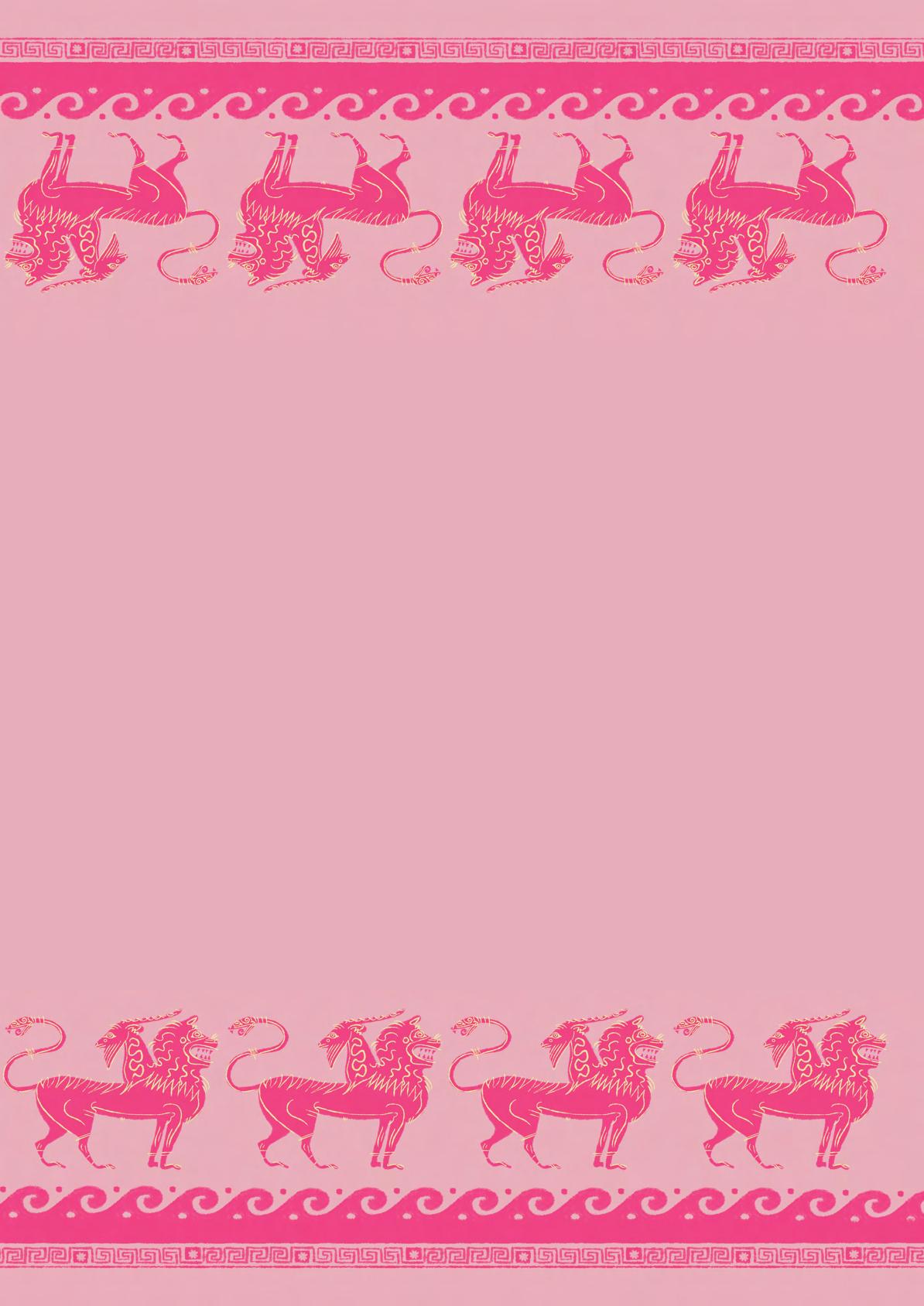
E: anubossymag@gmail.com W: www.bossymag.com
F: www.facebook.com/bossymag
I: www.instagram.com/bossy.magazine T: www.twitter.com/anubossymag
editor-in-chief: Cinnamone Winchester content editor: Alisha Nagle design editor: Hengjia Liu art editor: Harriet Sherlock managing editor: Imogen McDonald senior content sub-editor: Olivia Gill senior content sub-editor: Aurora Muir senior design sub-editor: Suhani Kapadia interview & art sub-editor: Christie Winn content sub-editor: Lucy Sorensen content sourcing: Sophie Aitken content sourcing: June Lee design sub-editor: Faith Freshwater design sub-editor: Sebastiàn Ungco
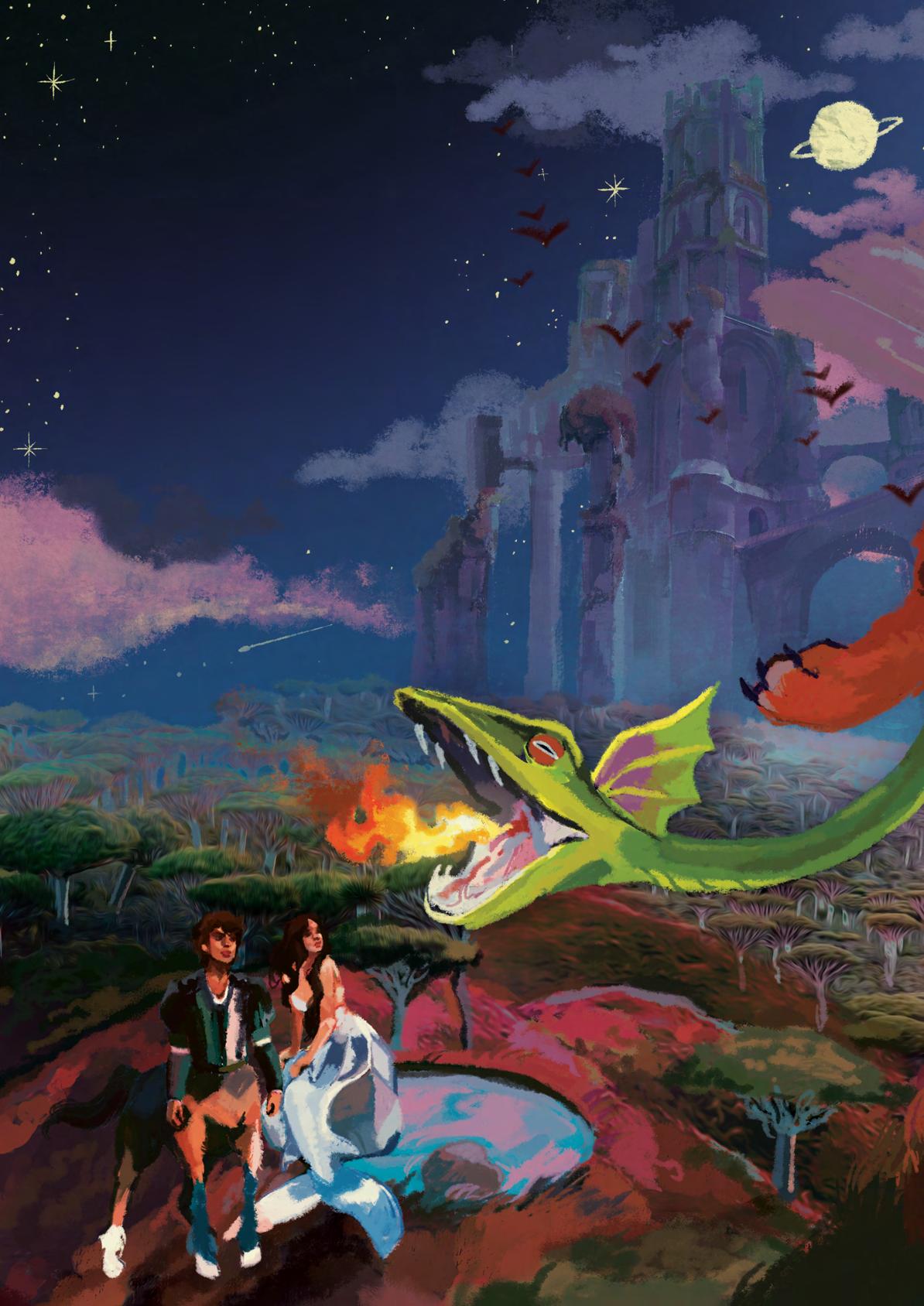













 Kate Wood
Kate Wood



































 Suhani Kapadia
Suhani Kapadia





















 Olivia Gill
Olivia Gill





















































































































 Artwork by Navita Wijeratne.
Artwork by Navita Wijeratne.


























 — Lucy Sorensen
— Lucy Sorensen




 Sebastiàn Ungco
Sebastiàn Ungco



